



 Morgan Freeman
Morgan Freeman

It takes time to become an icon





 Morgan Freeman
Morgan Freeman

It takes time to become an icon

Welcome to the latest edition of Iconic, an opportunity to immerse yourself in the multifaceted world of Iconic Luxury Hotels. This year, we celebrate a rich tapestry of anniversaries, from the bicentenary of The National Gallery; 70 years of Relais & Châteaux; and three decades of excellence at Chewton Glen with the culinary virtuoso Luke Matthews. These milestones reflect not just the passage of time, but the enduring commitment to excellence that defines our collection.
We embark on a journey of new beginnings as we unveil the charm of The Excelsior in Venice, where timeless elegance intertwines with modern sensibilities; we explore the understated elegance of The Chelsea Townhouse and enjoy its historic surroundings; and we admire the innovation behind the Rolls-Royce Spectre, the marque’s first all-electric car and the world’s first ultra-luxury electric coupé.
Continuing the theme of sustainability, our contributors draw your attention to how luxury
brands are managing to find ways of safeguarding the finite resources of the planet, from the ‘repurposing’ of exquisite jewellery to complement similarly sensitive fashion, to our own impactful strides towards a more sustainable future being driven by a dynamic collaboration with our partner, FuturePlus.
Walpole’s State of London Luxury report paints a vivid picture of the capital as a global beacon for luxury, and as we take off on our very own ‘Grand Tour’, we invite you to revel in our passion for arts and culture that enriches our establishments.
With our minds suitably nourished, we turn our thoughts to the benefits of good habits and making small incremental changes that, in combination, will have maximum impact on a long-term healthier lifestyle. We sincerely hope that your good habits for 2024 will include enjoying time well spent in one or more of our unique properties.
 ANDREW STEMBRIDGE EXECUTIVE DIRECTOR, ICONIC LUXURY HOTELS
ANDREW STEMBRIDGE EXECUTIVE DIRECTOR, ICONIC LUXURY HOTELS
LUXURY
24 THE GLOBAL HUB FOR LUXURY
Poppy Day reflects on Walpole’s insightful State of London Luxury Report
40 RECYCLED IS THE NEW PRECIOUS Rachael Taylor looks at a new luxury jewellery revolution built on reuse and recycling
64 VIVE L’ELÉGANCE!
Britain’s greatest palace plays host to the UK’s most prestigious Concours d’Elégance
80 THE LADY GOES ELECTRIC
For the first time in history, the iconic Spirit of Ecstasy adorns the bonnet of an electric Rolls-Royce
ICONIC CULTURE
18 ROYALTY, FLAMINGOS AND THE ROAD HOME
The fascinating journey of Jeremy Houghton, artist in residence at The Lygon Arms
76 TWO CENTURIES OF INSPIRATION
The National Gallery turns 200 and plans a year-long celebration taking iconic art out to the nation
ICONIC WELLNESS
46 START A TINY REVOLUTION
Susan d’Arcy shares her 10-point plan to revolutionise midlife by making incremental changes
33 CLASSICS ARE IN VOGUE
A chic and enduring look for 2024, exclusively curated by mercurial style guru Jack Guinness
50 A UNIQUE WARDROBE
A more independent way of dressing holds the key to true style, says Alexandra Carello
70 WOW FACTOR WEDDINGS
Kendra Leaver-Rylah and Isabella Foulger unveil the latest trends
10 DIARY HIGHLIGHTS
The Iconic Luxury Hotels collection and some dates for your social calendar
54 WOMEN ON TOP OF THE WORLD
Female sustainability trailblazers talk to Michelle Pughe-Parry de Klerk about the tide of change
84 THE HORSE IS AT THE HEART OF IT
With racehorse prices spiralling, Lucy Higginson considers different horse ownership options
88 THE SCIENCE OF SUSTAINABILITY
Driving a measurable sustainability revolution
98 THE MAGIC OF CHELSEA
Cadogan’s Kira Charatan brings history to life in today’s Chelsea
iconicluxuryhotels.com
26 A FINE DROP OF CELEBRITY
From Gary Barlow’s organic wine to Dan Aykroyd’s vodka, Olly Smith considers celebrity drinks
37 THE CHEF, LIKE THE SAUCE, TAKES TIME
How Chewton Glen’s long-serving executive head chef is helping young apprentices shine
92 SPARKLING ENGLAND
Olly Smith enthuses about the rise and rise of English sparkling wines
14 WHEN IN VENICE
Step inside the five-star Excelsior, Iconic’s fabulous oasis of calm on the Adriatic
60 THE MAGICAL MYSTERY OF THE ‘GRAND TOUR’
Dr Seán Williams considers the provenance of an iconic and historic travel concept
68 HOSPITALITY GOES PLATINUM
Celebrating 70 years of Relais & Châteaux in the company of its president, Laurent Gardinier
96 FEELS LIKE HOME
Now officially open, The Chelsea Townhouse is as much a home as a hotel





Alexandra has more than 15 years’ experience in fashion industry PR, working for Louis Vuitton, Burberry, Jimmy Choo and Net-a-Porter. She founded Alexandra Carello Consulting in 2019 and is chair of the Royal Marsden’s first official committee.

Lisa is chief executive officer for The Royal Academy of Culinary Arts (RACA). She was previously managing editor of The Caterer magazine, and managed events including The Acorn Awards, The People Summit and the Kitchen Porter of the Year competition.

Susan is the hotels and wellness editor for The Times and The Sunday Times Filthy work but someone has to do it, or so she tells her editor! She appears regularly on television talking about travel and is also a hotel and wellness consultant.

From journalist to commodities editor, marketer, business development consultant and entrepreneur, Michelle has worn many hats. She launched The Women’s Chapter in 2014 to champion women-led business.

Isabella and Kendra co-founded The Wedding Edition in 2021. Both cut their teeth at Condé Nast BRIDES. Isabella went on to edit luxury title Absolutely Weddings, while Kendra was included in Retail Vision’s Top 25 Women in Retail.

Award-winning broadcaster and wine expert Olly is a regular on BBC One’s Saturday Kitchen, hosts his own drinks podcast and writes a column for the Daily Mail’s Weekend magazine. His new book, World Cocktail Atlas, features two recipes invented at Iconic hotels.

Model, fashion commentator and British GQ contributing editor, Jack is also a diversity trailblazer who founded queerbible.com, celebrating the works and lives of the global queer community. Follow @jackguinness and @queerbible on Instagram.
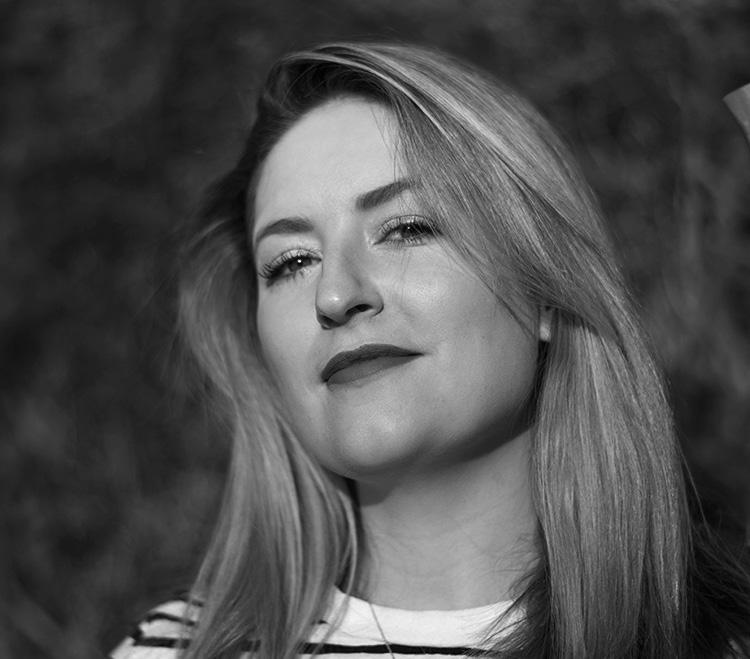
Rachael was the founding editor of Professional Jeweller and WatchPro magazines. She regularly contributes to a wealth of titles, including the Financial Times and Spear’s. She is a sought-after speaker, industry consultant and a judge at the UK Jewellery Awards.

An award-winning journalist, Lucy became the first female editor of Horse & Hound in 2002. She now combines journalism with PR, marketing, research and brand development projects, and is an editor of The Good Schools Guide

Seán is senior lecturer in German and European cultural history at the University of Sheffield. For BBC Radio 3, he presented The Deluxe Edition and Death in Trieste, a five-part essay uncovering the infamous murder of ‘the most famous art historian of all time’.
Designed and Produced for Iconic Luxury Hotels by Newhall Publishing Ltd
New Hall Lane, Hoylake, Wirral CH47 4BQ newhallpublishing.com
Magazine Project Director Angela Day
Managing Director Richard Woolliams
Finance Director Christine Blackford
Creative Director Gareth Evans
Editorial Director Fergus McShane
Managing Editor Greg Fountain
Art Editors Lindsay Price, Owen Moran
Commercial Director Gary Turner
Digital Development Director Dave Stone
Production & Operations Manager Alex Murphy
For media sales enquiries contact gary.turner@newhallpublishing.com
While every attempt has been made to ensure that the content in this magazine is accurate, Iconic Magazine or Iconic Luxury Hotels cannot accept and hereby disclaim any liability to any party for loss or damage caused by errors or omissions resulting from negligence, accident or any other cause. All rights reserved. No part of this magazine can be reproduced without prior written permission of Iconic Magazine © 2024. Information is correct at time of going to press.
Printed by Buxton Press Limited
Wherever possible, Buxton is committed to protecting the local and global environment and to integrating environmental management into its business activities. All the paper used at Buxton Press is sustainably sourced, the Company having been certified as meeting the requirements of both FSC® and PEFCTM Chain of Custody Standards since August 2008. The UV varnish used is water-based and recyclable. The process utilises a chemical crosslink reaction, which occurs when the varnish is exposed to ultraviolet light to cure it, an application that is 2-3 times more energyefficient than hot-air drying. UV technology eliminates VOC emissions.
Cover image: Stable Mates by Jeremy Houghton, immortalising those two great racehorses, Kauto Star and Denman
iconicluxuryhotels.com
The Mayfair Townhouse is a new generation lifestyle hotel delivering the unexpected in the heart of Mayfair. A stylish, imaginative home for the modern traveller, it redefines the London hotel experience with its vibrant sense of style, stunning decor, striking artwork and the townhouse’s mischievous motif, the fox. Only steps away from Green Park, upscale shopping and several of London’s most acclaimed restaurants, it boasts 172 rooms and suites that are elegantly practical and peacefully sumptuous. From the eclectic guest rooms and theatrical Dandy Bar to the vibrant space on the Lower Ground, The Mayfair Townhouse is the place to eat, drink, to see and be seen. It has been placed in the Condé Nast Johansens Awards for Excellence 2024 as the Best Bar in the UK; included in the Condé Nast Traveller Readers’ Choice Awards 2023 London Hotels; and is a Five Star AA Town House.
T: 020 8138 3400
E: reservations@themayfairtownhouse.com themayfairtownhouse.com

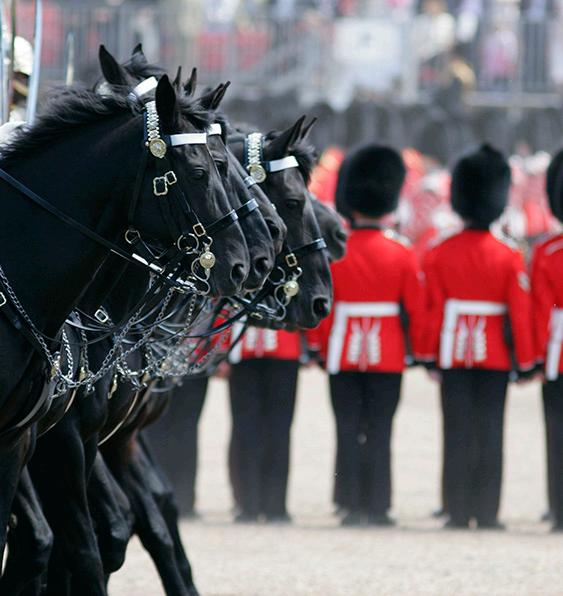
15 June
Marking the official birthday of The King, troops of soldiers from the Household Division participate in a military march. This annual event on Horse Guards Parade each June is enjoyed by crowds of onlookers and millions of viewers worldwide. army.mod.uk
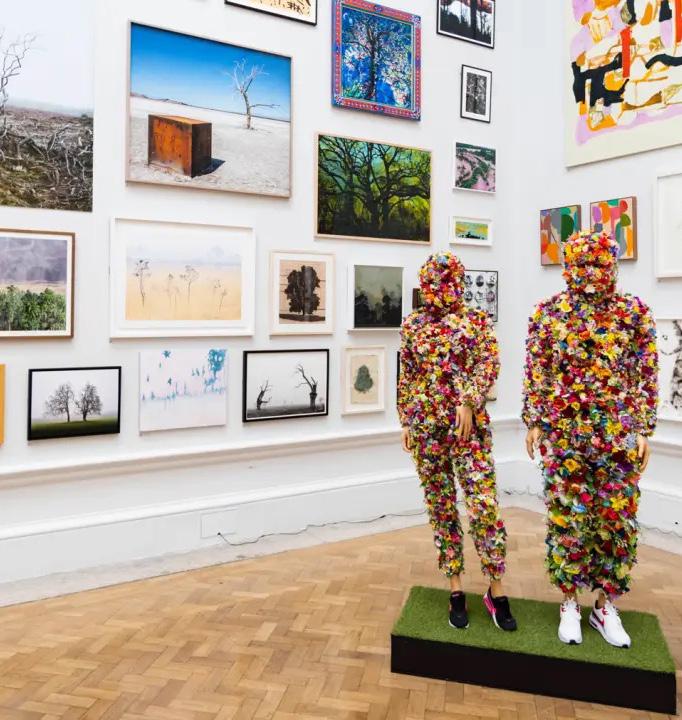
18 June-18 August
Showcasing a diverse array of contemporary prints, paintings, films, photography, sculpture and architectural works, the Royal Academy’s Summer Exhibition is the world’s largest open-submission exhibition and the UK’s best-loved art show. royalacademy.org.uk
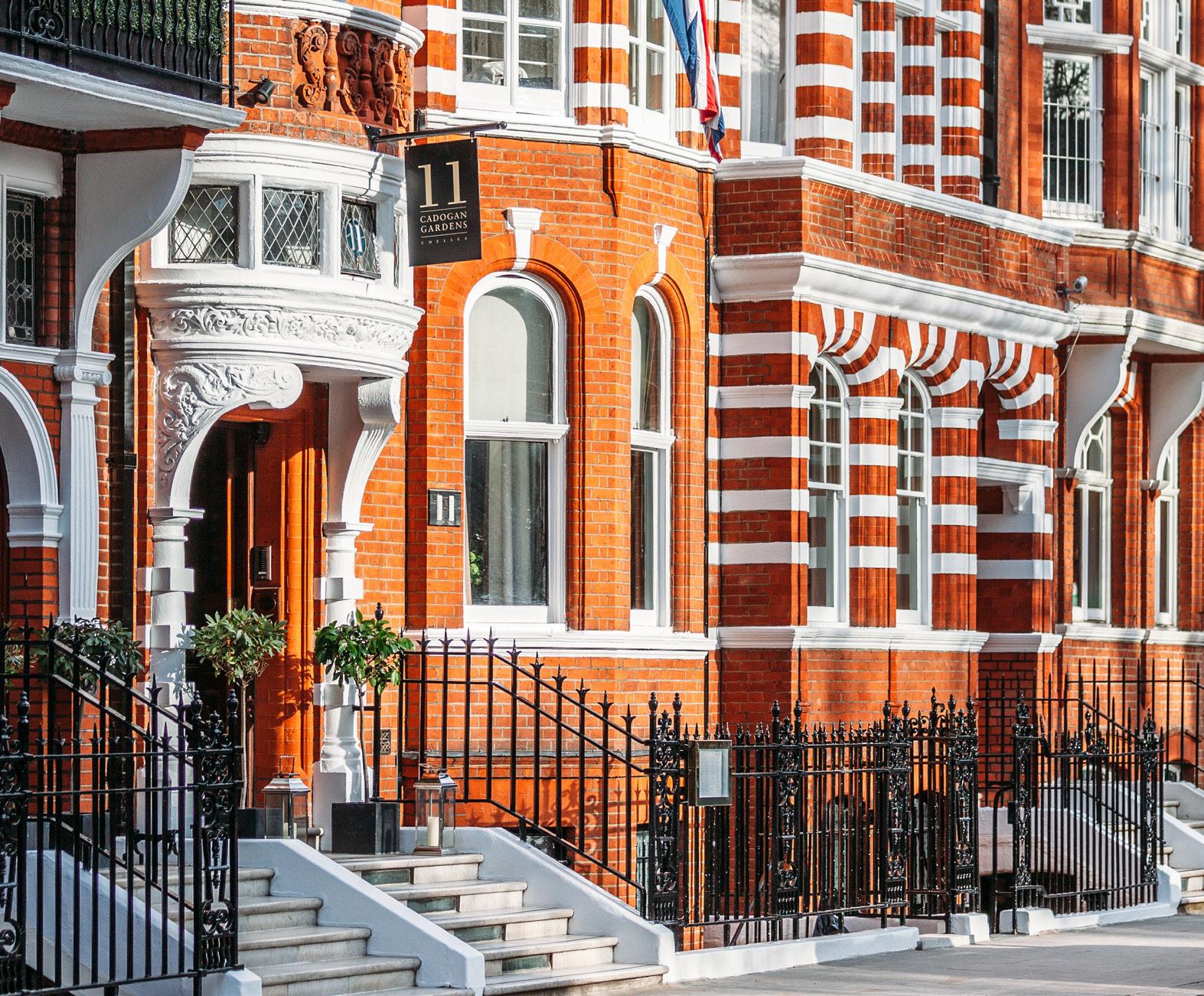
For more than a century, 11 Cadogan Gardens has hosted the great and the good, and this imperious address is now an exceptional, exclusive boutique hotel. Located in one of the squares in the heart of Chelsea, it is the only Relais & Châteaux hotel in London. Distinguished, yet also quirky and playful, Patron of the world-renowned Saatchi Gallery, 11 Cadogan Gardens comprises four elegant townhouses and provides the ultimate city escape with luxurious suites, a theatrical cocktail bar and Hans’ Bar & Grill. Perfectly located for travellers and fashionistas, it is situated between Sloane Square and Knightsbridge, an area acclaimed for the very best in luxury and style. It has been included in the US News & World Report Best Hotels 2023; awarded a Royal Borough of Kensington and Chelsea 2023 Gold Badge; received recommended rating in Forbes Travel Guide Star Awards 2023; and has five AA Red Stars.
The hotel’s serviced apartments, with their fitted Bosch kitchens and opulent living areas, are perfect for laidback yet luxurious extended stays for guests looking to experience life as a Londoner, while their multiple-bedroom options also make them ideal for families.
Iconic Luxury Hotels has expanded its collection of Iconic properties with the opening of The Chelsea Townhouse in 2023. Built in 1890, and forming an integral part of our trio of Chelsea townhouse addresses, the striking Victorian property comprises three red-brick townhouses on Cadogan Gardens, ideally located to explore the best of London. There are 35 bedrooms and suites, many overlooking a private garden square. Read more on page 96.
T: 020 7730 7000
E: reservations@11cadogangardens.com 11cadogangardens.com
iconicluxuryhotels.com

21-25 May
Promising amazing garden designs, gorgeous floral displays and exclusive shopping, visit a show that represents the pinnacle of horticultural excellence and has something for everyone. rhs.org.uk

1-14 July
Partnering the world’s oldest tennis tournament – and the only one of four major Grand Slam tennis tournaments to be played on grass courts – with Pimm’s makes for a quintessentially British affair. wimbledon.com
15-18 September
The ultimate fashion industry event, featuring the world’s top names. londonfashionweek.co.uk
This five-star Relais & Châteaux luxury hotel and spa is one of the finest in the country, located within 130 acres of Hampshire countryside on the edge of the New Forest and a few minutes’ walk from the beach at Highcliffe-on-Sea. To this 18th-century English original, we’ve recently added the self-contained Treehouse Suites in their idyllic woodland setting and with private parking, concierge and mini kitchenettes, and The Kitchen, a meet, eat, cook venue overseen by TV chef James Martin. Among its recent accolades are the Food and Travel Rural Hotel of the Year Award 2023; US News & World Report Best Hotels 2023 – Gold Badge; Blue Badge Access Best Hotel Spa Award 2023; and for the people and culture director of Iconic Luxury Hotels, Anita Bower, the Relais & Châteaux Woman of the Year Trophy.
T: 01425 282212
E: reservations@chewtonglen.com chewtonglen.com



July
Wander through vines, lavender fields, breweries and get hands on in the kitchen with over 60 events all across the county. Taking place at farms, pubs, hotels and restaurants, this award-winning food festival is now in its 19th year. hampshirefare.co.uk

30 July-1 August
Starting as a small, one-day agricultural show in 1920 and developing into the three-day spectacular event of today, the New Forest Show has become a firm and favourite fixture in the county’s calendar. newforestshow.co.uk
This accolade is presented to hotels in the UK that are recognised as being outstanding examples in their particular market. In a decade, Iconic Luxury Hotels has grown from one outstanding country house hotel to a collection of remarkable properties with an international reputation for excellence, luxury and service.
ROYAL ASCOT
18-22 June
Reserved for the best – in racing, hospitality and style – there is no event in the social calendar quite as revered as this magnificent five-day occasion. ascot.com
2-7 July
Thousands of visitors enjoy more than 300 internationalstandard boat races on the Thames in the world’s greatest regatta. hrr.co.uk
CLIVEDEN LITERARY FESTIVAL
21-22 September
A thought-provoking and inspiring celebration of the writer’s art held in Cliveden House itself. clivedenliteraryfestival.org

This National Trust country house is our five-star Relais & Châteaux hotel and spa, just 40 minutes from London. Built in 1666, Cliveden House sits in 376 acres of Grade I-listed gardens, with views of the Thames. The setting, architecture and interiors all speak eloquently of extravagance and refinement, and there is a palpable sense of history, for this is a house that for over 350 years has been dedicated to pleasure, power and politics. It featured in Condé Nast Traveller Readers’ Choice Awards 2023; Forbes Travel Guide 2023; US News & World Report Best Hotels 2023; and Condé Nast Johansens Awards for Excellence 2023. Francisco Macedo, general manager of Cliveden House and group operations director of Iconic Luxury Hotels, was awarded the accolade of Manager of the Year in the 2023 Catey Awards.
T: 01628 607107 E: reservations@clivedenhouse.co.uk clivedenhouse.co.uk

Situated in the heart of the quintessentially English village of Broadway, often referred to as the ‘Jewel of the Cotswolds’, this former coaching inn is steeped in history with reminders of its Tudor past visible in the superb restoration of its original features. The Lygon Arms boasts two new restaurants by James Martin, GRILL and TAVERN, guest rooms that capture the rich 600-year history of the property, and all the amenities the luxury traveller expects, including a relaxing spa. Listed in Condé Nast Traveller Readers’ Choice Awards 2023; Good Hotel Guide Editor’s Choice 2024 Awards; and is an AA Four Star Hotel.
T: 01386 852255 E: reservations@lygonarmshotel.co.uk lygonarmshotel.co.uk
iconicluxuryhotels.com
THE CHELTENHAM FESTIVAL 2024
12-15 March
Four breathtaking days, 28 races, unrelenting prestige, competition and excitement. The Cheltenham Festival is a classic in the Jump racing calendar – and the one they all long to win many times over, above all others. thejockeyclub.co.uk
BIG FEASTIVAL
23-25 August
Serving up plenty of spectacular dishes with a side of amazing tunes on a secluded Cotswolds farm, imagine Glastonbury but with lots more delicious food. thebigfeastival.com
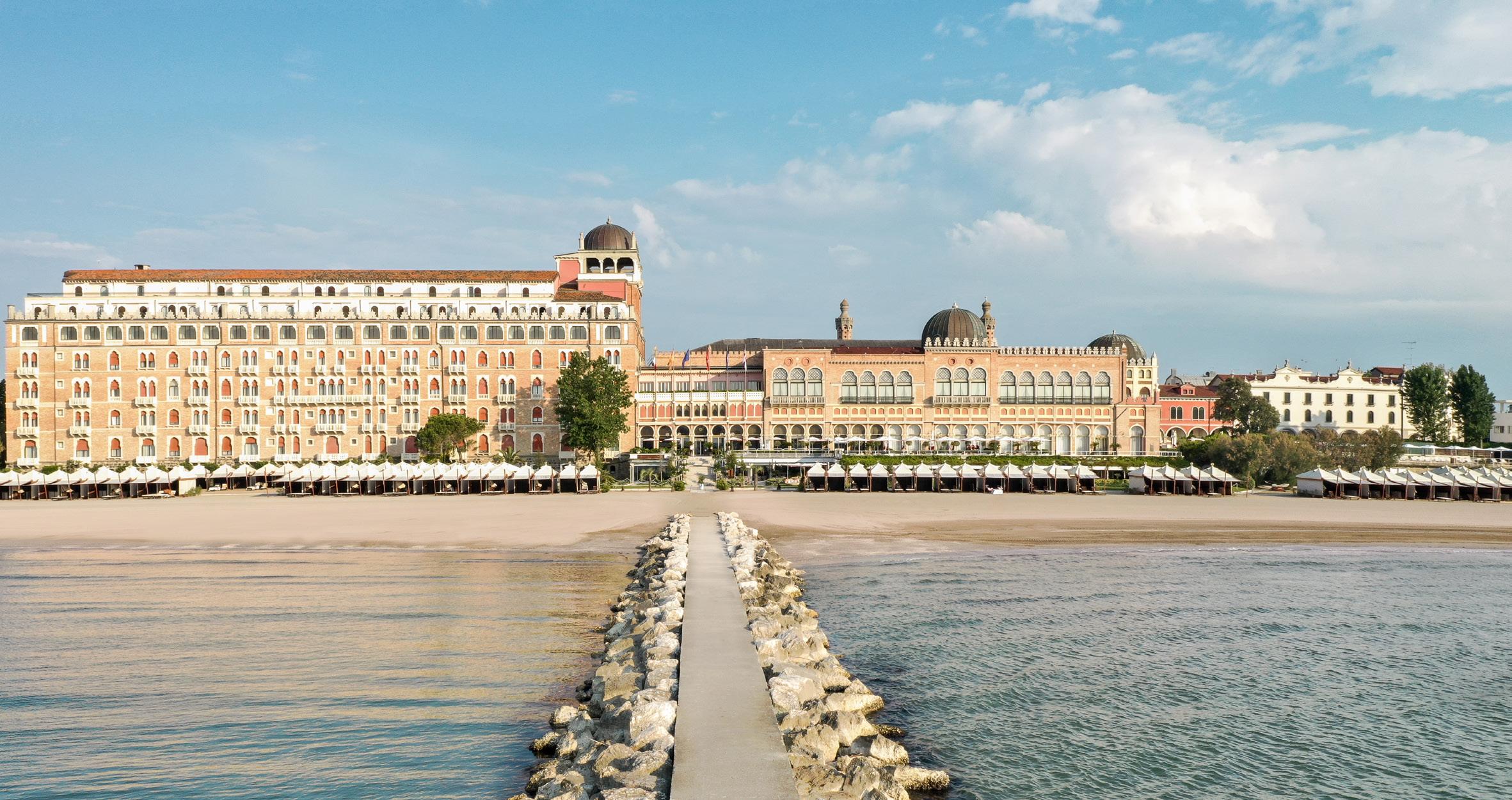
A significant destination in its own right, the enchanting five-star Hotel Excelsior is Iconic Luxury Hotels’ oasis of calm on the cusp of the vibrant heart of Venice
On a secluded island sits the grandeur of the Venetian palazzo that is the Hotel Excelsior Venice Lido Resort – a tranquil hideaway with exotic architecture. From the soft sands of its private beach, replete with unique cabanas, to the harmonic blend of traditional elegance and modern luxury that it exudes throughout its interior, the Excelsior brings you the best of both serenity and style. For one thing, the distinctive Moorish theme that characterises the Hotel Excelsior features in all 196 of
its spacious guest rooms, including the newly refurbished Premium Junior Suites with views of the Adriatic Sea. Designed to embody the hotel’s unique style on Venice’s beachfront, they pay homage to classic Venetian aesthetics by merging Renaissance style with modern elements. Just some examples of this include the pairing of grand Murano glass chandeliers with a thoughtful use of natural light to amplify their elegance, meticulous choice of furnishings and a gentle colour
palette – all of which accentuate the romantic allure of the suites.
Accommodation is only one area in which the hotel excels – another is its cuisine, for which it is famous. The hotel has introduced new and unique food and beverage experiences in each season, including adding the Pizzeria da Michele to its repertoire and hosting exclusive events with renowned chefs. The Excelsior’s own executive chef, Alessandro Ramella, is celebrated for his exceptional ability to fuse traditional Venetian culinary
iconicluxuryhotels.com


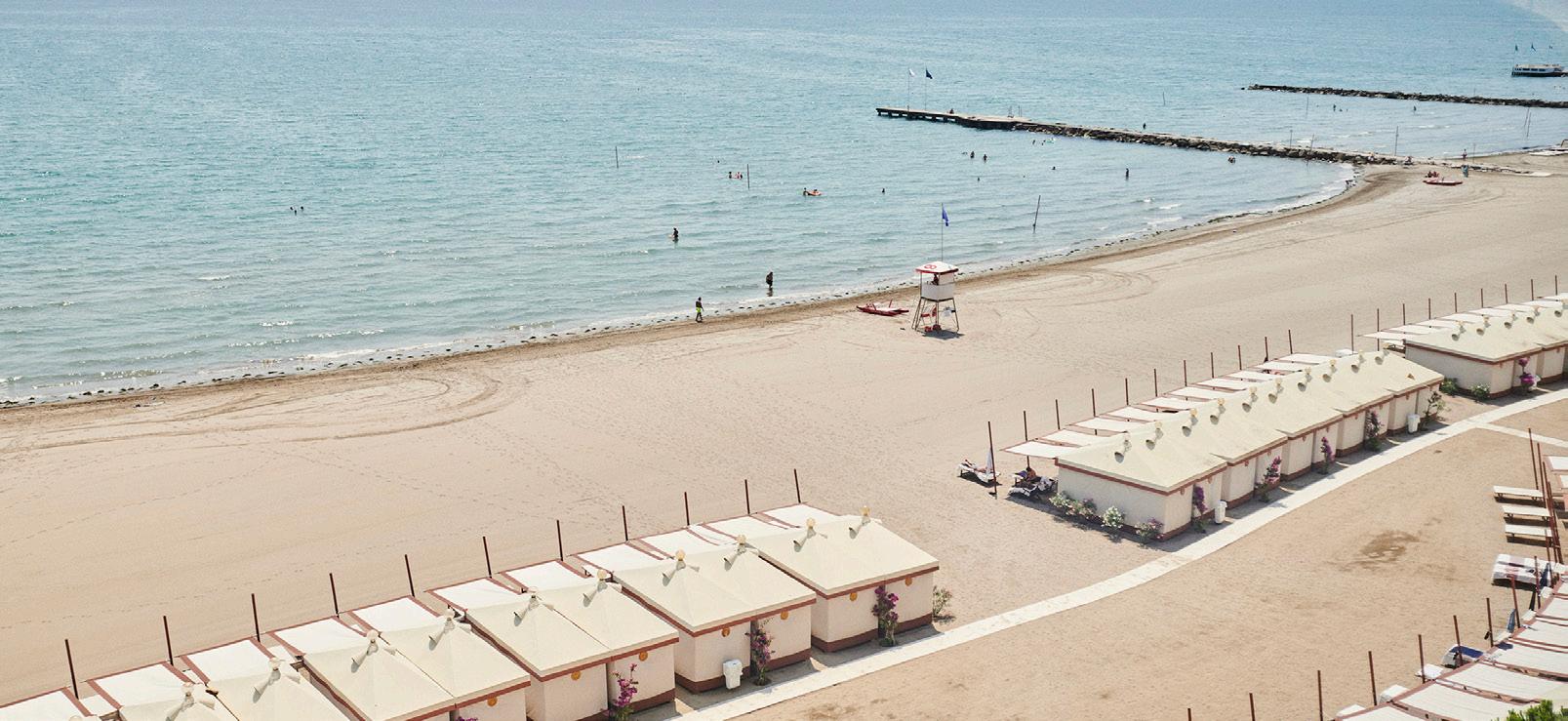
art with innovative concepts, an ethos reflected in his 2023 signature dishes, such as the Riso del Doge – an exquisite risotto masterfully prepared with carnaroli rice, scampi and adorned with gold crumbs – the Sedano Rapa, featuring celeriac with aged balsamic and truffle in a testament to his culinary finesse, and the Rombo Chiodato, where the pairing of turbot with champagne is a sublime expression of his skill.
The idyllic settings and magnificent interiors also make the Excelsior an excellent choice for weddings and special occasions, with grand rooms – such as an elegant ballroom with floor-to-ceiling windows and stunning sea views – a beachside terrace and a dedicated team who are committed to making your event unforgettable.
One especially iconic event associated with the Excelsior and which calls Lido Island – upon which
the resort is situated – home is the Venice Film Festival, the oldest in the world and one of the most prestigious. Celebrating its 80th anniversary in 2023, the first edition was held in 1932, when the hotel hosted the launch on its terrace.
“Venice’s ability to transport visitors to a bygone era is unparalleled,” says Excelsior general manager Alessio Lazazzera. “At the Hotel Excelsior Venice Lido, we endeavour to encapsulate this magic, providing our guests with an immersive experience in this extraordinary city.”
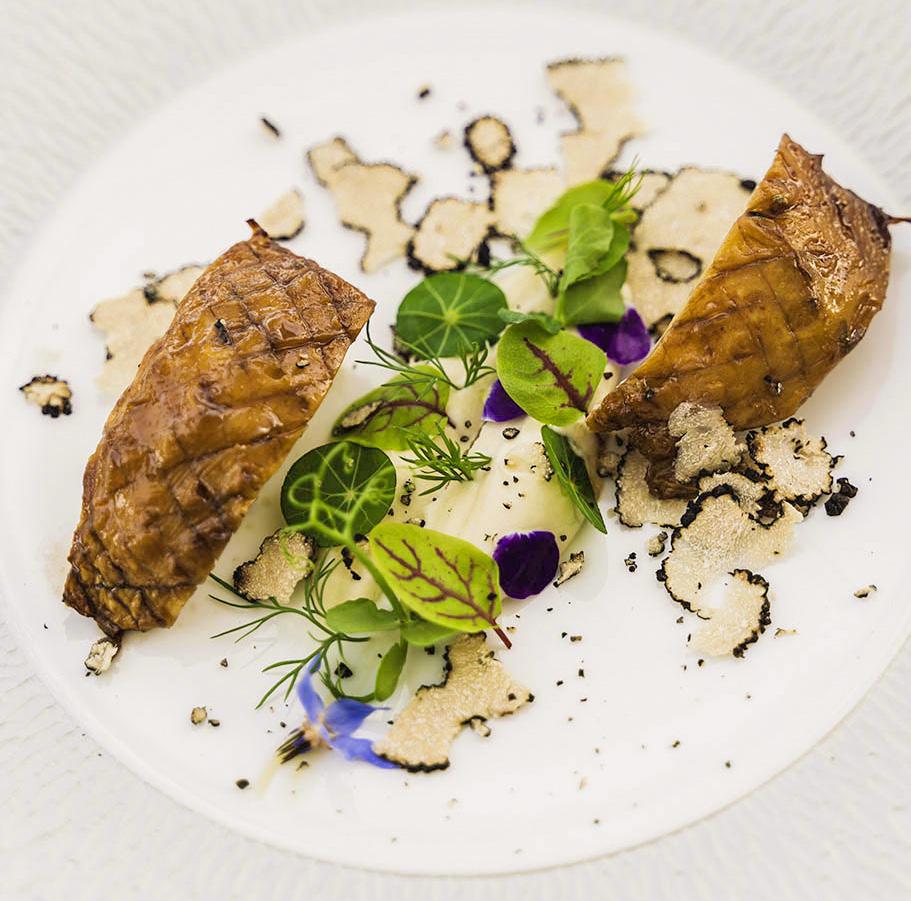
“A THOUGHTFUL USE OF NATURAL LIGHT, METICULOUS CHOICE OF FURNISHINGS AND A GENTLE COLOUR PALETTE ALL ACCENTUATE THE ROMANTIC ALLURE OF THE SUITES”
The hotel’s complimentary water shuttle transports guests into the heart of the pulsating city, just 15-20 minutes’ ride away, where the travel guide, Venice from A to Z, which has been custom-curated for The Excelsior by award-winning travel writer Nicola Lecca, will help you take advantage of the opportunity to explore the magic of the architectural marvel that is the extraordinary city of Venice.
At the very tip of a triangle where the Grand Canal meets the Giudecca Canal is the Punta della Dogana – aka ‘Customs Point’. Situated smack-dab in the middle of everything, and just a stone’s throw from the sea, visit here for the best view that Venice has to offer. Whether at sunrise, when the seagulls take flight, sunset, when the sky reddens and clouds disperse, or at high water, when you’ll be at one with La Laguna, you’ll be immersed in a miracle of marvels – from the curvaceous geometries of the iconic dome atop the Church of Santa Maria della Salute behind you and the architectural majesty of Palazzo Ducale (Doge’s Palace) on your left, to the island of San Giorgio that lies ahead and awaits your arrival.
Then there’s Burano. Lit up. Limpid. Gaudy. What will strike you most about it, and brings it alive, is the explosion of colours – with brightly painted homes and buildings bringing cheer to the community and contending for visitors’ attention. The same goes for the intricate geometries of local lacework, the
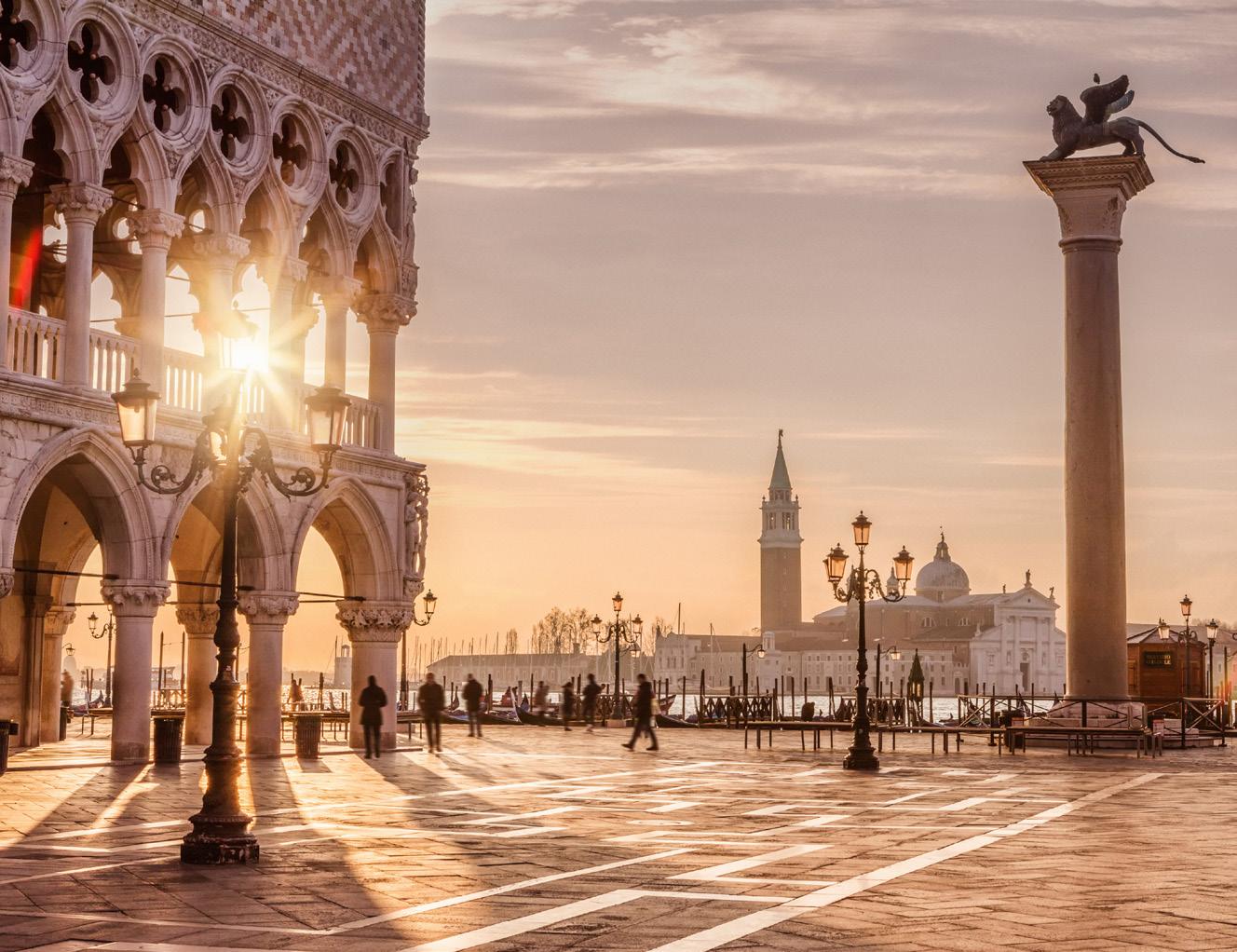
centuries-old craftwork of Burano, and the famed bussolà biscuits – with the secret to the unbeatable taste lying in the local water used for the batter. A collection of four tiny islands and a weave of canals, where three bridges compete with one another for elegance and beauty, enjoy the unforgettable ride in among the Lagoon’s network of isles – because Burano may only be reached by boat.

For a deeper connection with your favourite sounds
The new Ruark R410 has been designed for streaming. With Spotif y, TIDAL, Apple AirPlay 2 and Chromecast built-in, you have access to virtually all the best streaming ser vices, easily and instantly. The high-fidelity loudspeakers concealed inside bring new life, depth and power to your favourite music, podcasts and other digital media. The perfect source of effortless listening pleasure, created for the way we live now
ruarkaudio.com

Renowned artist Jeremy Houghton has painted for the late Queen and King Charles, but his latest residency brings him back home to the Cotswolds, at The Lygon Arms
Broadway is synonymous with art. Along the wide high street that gave this peaceful Worcestershire village its name have walked so many great artists, writers, composers and designers, many of whom gathered and lingered to create a ‘colony’ of creativity in the Victorian era and beyond. Names such as William Morris and the Arts and Crafts movement with which he was associated, American artists John Singer Sargent, Francis Millet and Edwin Abbey, and British legends such as Alfred Parsons, Edward Elgar and Vaughan Williams, all stayed or lived in Broadway.
Born into this epicentre of creative heritage in 1974, Jeremy Houghton was perhaps destined to fall under its influence. Recently appointed artist in residence at The Lygon Arms, the 600-year-old coaching inn he used to walk past on his way to school, Jeremy’s life and artistic journey could seem somehow predetermined. But his route has been anything but predictable, taking in everything from the horses of Cheltenham to the flamingos of the Kalahari.
“I was born and bred in Broadway. As a little boy, every day I’d walk up past The Lygon Arms,” he says. “It was lovely to be asked back to be artist in residence there. It was a bit like my residency at Windsor Castle for the late Queen, because I was at school nearby and often saw the castle but was never allowed in. To be allowed into these places as an adult is a real treat!”
There is an extraordinary list of ‘these places’ in Houghton’s story. He has become known as a consummate artist in residence, having undertaken residential commissions not only for the royals but for Wimbledon, the London Olympics, the RAF centenary, the Falklands 40th anniversary, the Americas Cup, London Fashion Week, Goodwood and the James Hunt estate, among others. His very first residency was in South Africa, where he started out teaching art.
“The turning point in my career was when I ran the art school in Cape Town for five years, and I was asked to be artist in residence for the Oppenheimer family, as in De Beers,” says Houghton. “They asked me to paint their estates in Africa. I also did a residency for David Rattray, who brought the AngloZulu wars to light. When I returned to the UK in 2005, the residency angle continued. There seemed to be three strands – military, sporting or royalty –and one led to another.
“A residency allows me unfettered access to an interesting place or occasion or event, with licence to roam. I try to look at the interesting relationship between perception and reality. At Windsor Castle, there’s this iconic building that we all know, and the perception is it’s the home of the royals, but behind the walls, there’s a community of about a thousand people – it’s a hardworking, busy, active, diverse, dynamic community. You can’t tell a thousand years
iconicluxuryhotels.com

of history in a handful of paintings, so you’ve got to find one angle. And having wandered around for a week or so, I did feel that the heartbeat of the place was the mews. I felt that through the life of the horse and the eyes of the horse you saw a very interesting perspective on both the private and public life of the royal family. If you can find that angle, you can tell a wider story in a concise way.”
Working at Windsor, Houghton frequently encountered Queen Elizabeth, who took a great interest. “I’d be painting away, and all of a sudden, there’d be a Corgi sniffing around my feet, and I knew the late Queen was pottering around in her scarf and would come to look at what I was doing. We’d have a chat. It was that perception and reality thing again – she was the head of state but also just a lovely lady. To be able to get to know the lovely lady was such a privilege. We won’t see her like again. She
asked me what else I painted – I told her I painted flamingos. She said, ‘I haven’t got any of those, but I can invite you to come and paint my pigeons at Sandringham!’ So I had a day at Sandringham with her racing pigeons!”
For some artists, a residency might seem to curtail creative freedom, but Houghton is empowered by the scope. “A residency is not restrictive. These events and places are massive and there’s actually too much information. You have to filter it. As with my painting style, it’s a process of distillation – you’re taking away detail, you’re refining, refining, refining, eliminating things until you’re left with the one nugget from which you can tell the whole story. That’s the challenge.”
Houghton’s painting style is fascinating and unusual and derives in part from a familial connection to Broadway’s past. His grandfather
“THERE’D BE A CORGI SNIFFING AROUND AND I KNEW THE LATE QUEEN WAS POTTERING AROUND. SHE’D COME TO LOOK AT WHAT I WAS DOING. WE’D CHAT”


was the doctor in Broadway from the 1930s, and on his death, bequeathed 12 volumes of cuttings and photographs to his grandson.
“I love history and recognise that we live in a place where history is important. I have a lot of old photographs from my grandfather’s collection of negatives, and that was the starting point for a lot of my work. I think there’s a certain power to those old negatives, and I used it as inspiration. If you’re trying to paint movement, you’ve got to eliminate detail, and to take that concept further, I thought that reducing the palette might enhance the idea of movement. I’ve done a lot of work with the same sort of sepia and blue tones. It gives my pictures a timeless, historical feel. With a lot of my work, it could be yesterday, it could be 100 years ago. I like that play on time.”
This technique is emboldened by Houghton’s use of negative space – he never paints the positive

“WITH THE FLAMINGOS I’M BEING MUCH MORE PLAYFUL ON THE CANVAS. THE MONOCHROMATICS ARE MORE OF AN ESSAY, THE FLAMINGOS A POEM”
form, only the space around it. “It allows me to keep eliminating,” he says. “You can eliminate too much, but if you’re OK with your timing, you can create a composition where one or two brushstrokes give so much information. It’s a challenge, and it involves a lot of squinting and sometimes dark glasses!”
Although this technique and his exceptional catalogue of residencies may define Houghton’s body of work, he has also amassed an altogether different signature collection that began back in South Africa: flamingos. These eye-catching, endangered birds first attracted his eye in the Kalahari Desert 20 years ago, and painting them remains at the heart of his inspiration today, frequently luring him back to South Africa. “With the flamingos, I’m being much more playful on the canvas, much more happy-go-lucky with my choice of colours. Painting them is more of a dance, whereas the monochromatic paintings are more of a study. The monochromatics are more of an essay, the flamingos a poem. I would say to any young artist starting out, it’s good having two different styles to work off each other. It keeps you invigorated.”
The next big commission on Houghton’s list is in celebration of the centenary of the Cheltenham
Gold Cup in March, for which he is producing a painting of every winning horse. “There are less than 100 winners!” he points out. “And they’re not massive paintings. The idea is to have a big display at the racecourse and then to sell them for Cheltenham’s charities. It’s been fascinating delving into the archives.”
So, is The Lygon Arms residency a bit like closing a circle? “Deep down, home is in Broadway, so you could say I’ve come full circle,” Houghton says. “I’ll be in The Lygon Arms and my studio, just allowing guests to chat, see me work, come to the studio or the gallery, meet local artists and for me to tell them a bit about Broadway’s history. There are various paintings hanging in the hotel – in the foyer, there’s that cool one of Queen Elizabeth with James Bond at the Olympics, and I’ve matched it with the late Queen and Paddington Bear at the Platinum Jubilee. People come to The Lygon Arms from around the world, and they come for a bit of Britishness. If I can produce paintings that reflect those stories, it will be great.
“Broadway is massively inspiring in my day-to-day work. The view out of my window is the Broadway Tower. It’s like this beacon of artistic heritage.”

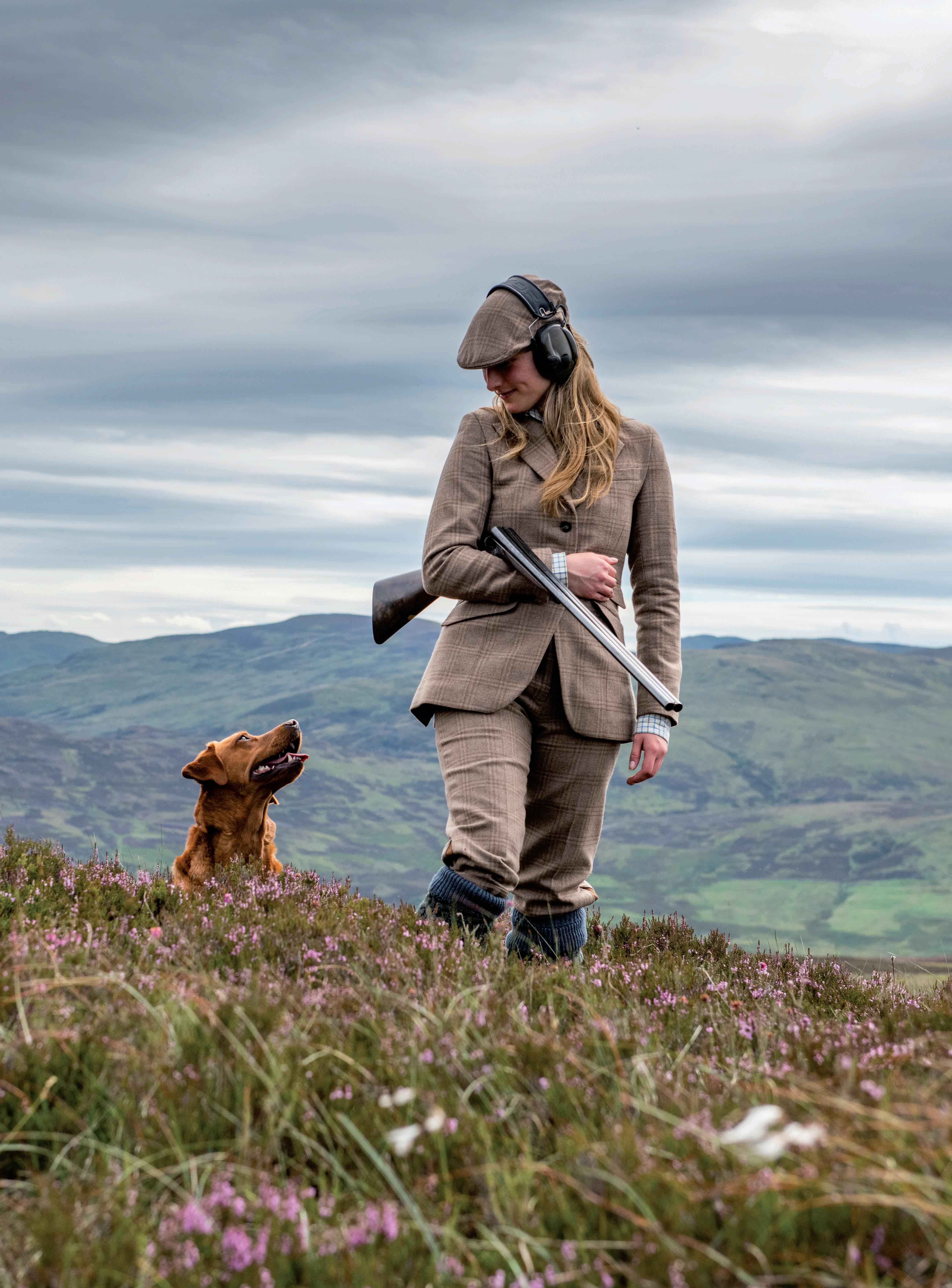
Poppy Day reflects on The State of London Luxury Report 2023 , which gives an insight into the significance of London in international luxury
Created in partnership with Cadogan, luxury British membership organisation Walpole recently published The State of London Luxury Report 2023. The first edition of this annual study takes a look at the key drivers behind London’s strength in the world of luxury, and what it is about the city that draws HNWIs back for more. It touches on what is working, as well as areas to be improved to elevate the UK’s iconic capital to even greater heights when it comes to its luxury credentials.
The fact that so many across the globe view the UK through the lens of London is testament to London’s

significance worldwide, with the city’s wealth of luxury brands playing a pivotal role. However, many British luxury goods sold in London are produced elsewhere – eg, Mulberry bags in the West Country and Burberry trench coats in West Yorkshire. The relationship between the manufacturing of luxury goods outside London and the sale of these items in London is one that Walpole CEO, Helen Brocklebank, describes as ‘vital interdependence’.
After all, beautiful historic London provides a most fitting backdrop for these luxury items, given its vibrant cultural scene boasting a multitude of art


galleries and museums, luxury hotels, Michelinstarred restaurants and exclusive boutiques. This entices both domestic and international lovers of luxury to visit – so much so that London is likened throughout the report to a ‘shop window’ through which the rest of the UK is viewed.
According to Savills Luxury City Fundamentals
Ranking 2022, based on criteria such as size of luxury retail market, international visitor appeal, resident affluence and overall growth prospects, London sits in second place above the likes of Toyko, LA and Shanghai, topped only by New York. London, in fact, scores the highest against certain fundamentals. For instance, it leads alongside Hong Kong for appeal to high-end international visitors, who use London as their base from which to explore other areas of the UK and spend 14 times more than the average tourist.
To further evaluate the current and potential value London has to offer the luxury market on a global scale, the word ‘VITAL’ is used as a framework. The reason is that London is deemed to have the essential qualities that allow luxury brands to thrive, radiating an energy through its people and places that provides a ‘unique atmosphere of prosperity’. Each letter of VITAL stands for a different characteristic of the city that contributes to its luxury reputation worldwide:
V – value/vibrant/visitors/villages
I – international/influence/inspiration/investment
T – transport/treasure/technology
A – affluence/art/architecture
L – launch/lifestyle
There are, of course, certain obstacles to overcome
for London to fully recognise its luxury potential, these being the subject of campaigning by Walpole. The most prevalent is the UK’s loss of tax-free shopping following the country’s departure from the EU, risking furthering a perception of London over time as too costly to live in and a less competitive place to do business. It is estimated that the return of the policy would add £4.1 billion to the economy and create approximately 78,000 jobs.
Lobbying of the government is also underway to change the demands of the UK visitor visa regime, given the range of destinations a Schengen visa provides access to, meaning the UK must endeavour to improve its offering to compete. Additionally, in light of Brexit and the loss of access to the European labour market, pressure is mounting on the government to offer more work visas, especially to young people. This would allow an influx of skilled international talent, bringing the exemplary level of service that is so fundamental to the luxury industry.
Despite this, what is striking about the report is how overwhelmingly hopeful a picture it paints – not only for the future of the capital, but for the UK generally. Residential property in London remains the safest for investment above any other global luxury hub, with a third of HNWIs looking to buy a property stating that they would choose the UK to do so. Furthermore, the rapid rate in development of luxury establishments in London is indicative of the capital’s incredible projected growth of luxury, raising hopes of further positive news to come in 2024.
“London leads alongside Hong Kong for appeal to high-end international visitors, who use London as their base from which to explore other areas of the UK”
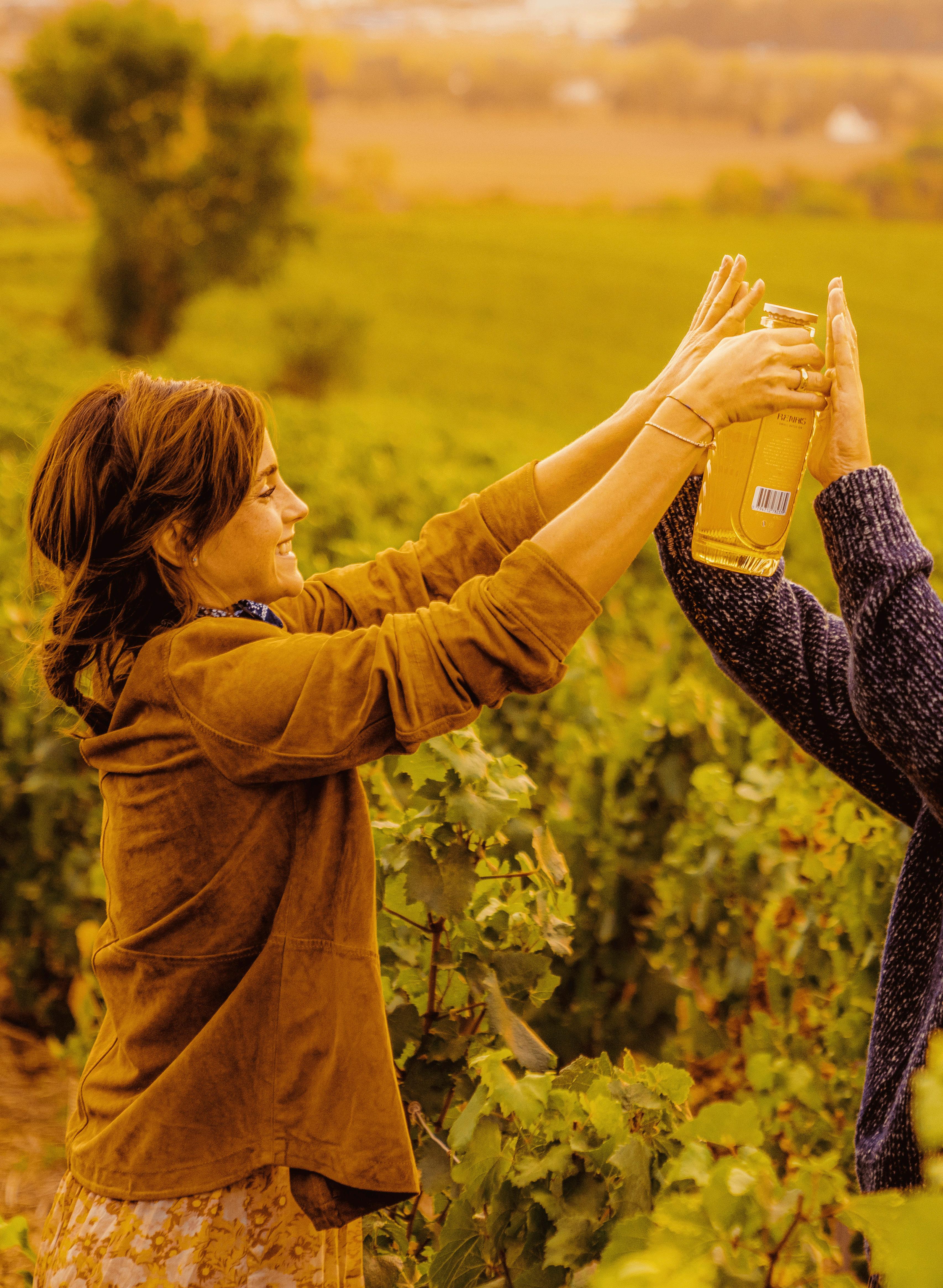
£45 renais.co.uk
Huge flavours with surging juniper and rich botanicals featuring grand cru grapes – this is a must for all wine fans and gin devotees alike. Try it in a Collins for a rampage of refreshment.

Slapping your name on a label to sell something drinkable is very different to crafting a smart brand that operates in tandem with your enduring appeal as a celebrity. There seems to be an increasing number of well-known names bringing out wines and spirits, and in my job, I have come across the best and the worst.
Lurking deep within my cellar is a treasured bottle of Pink Floyd’s rosé, and as a fan of their music, I was thrilled when I found myself sitting on a hay bale at a festival with drummer Nick Mason, who gently suggested we team up with a chef and release a cookbook entitled The Dark Side of the Spoon. These days, that same wine estate is owned by Brad Pitt, who has made a roaring success out of collaborating with the renowned Perrin winemaking family to create Miraval Provence Rosé. It is decent wine. Yet that pink horizon may be tinted with gathering clouds – in autumn 2023, Provençal wine growers were ordered to slash their yields following a fall in sales. It is not just the weather that wineries need to keep an eye on – it’s the market.
When business and passion genuinely merge, a commercial drinks opportunity is a potentially depthless well of possibility. When I visited pop star P!NK at her home in Santa Barbara, I was thrilled to discover that not only has she planted her very own vineyard, she has also built a winery and has invested money and time, as well as a lot of hard work, to create her Two Wolves label. Her knowledge of wine is impressive and it is clear she is building it into her life in a meaningful way that deserves every success with her fanbase and beyond. A shining example of an artist building on an existing appeal with a quality product – fantastic.
However, my personal favourite celebrity wine story builds even more deeply on this, with Sam Neill and his Two Paddocks estate in Otago, New Zealand. The first time I visited the vineyards and farm, Sam was up a ladder picking cherries and his devotion to this corner of the world is warmly inspiring. He is not just making wine – he is desperately keen to talk about New Zealand, Otago and why his patch is utterly unique for creating top-quality pinot noir. His wines are all excellent – a personal favourite is The Fusilier, named after his father, a bottle I enjoy opening at tastings to benchmark against the world’s best. It more than holds its own.
On the high street in the UK, I raise my glass to Kylie Minogue, who has managed to create a range that is
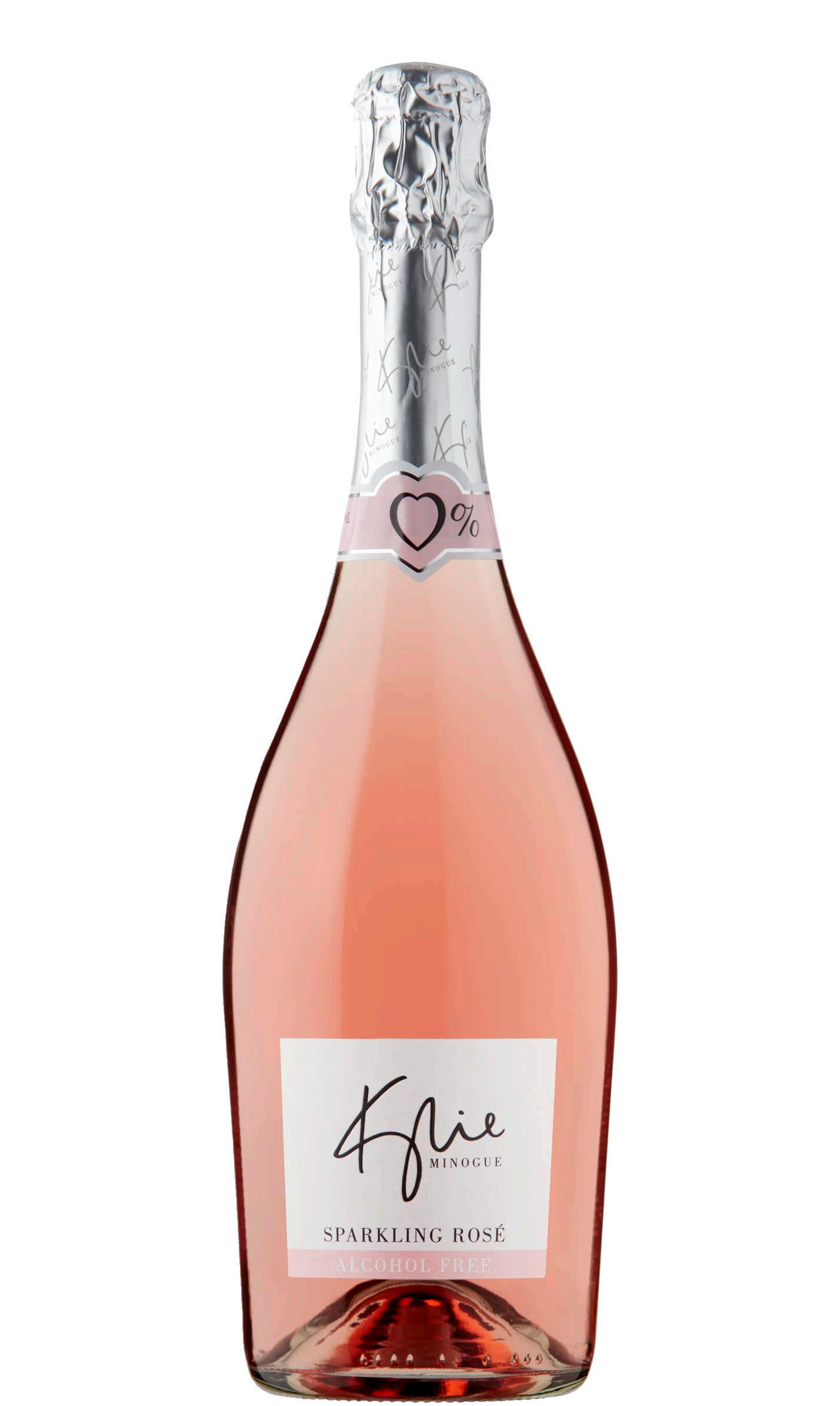
within reach for the majority of her fans and includes an impressive non-alcoholic fizz that reminds me of Refreshers. And it is good value too. The project is a hit for Kylie with reports that her wine sales hit £25 million across the year to May 2023. Sales can be eye-watering, with George Clooney’s Casamigos tequila brand selling to a UK drinks firm for a figure widely reported to be $1 billion. My friend Gary Barlow has entered this world, delivering the seemingly impossible task of becoming the UK’s bestselling organic wine brand – and for under £10, the wines really do stack up, especially his Spanish red, which is a slam-dunk kitchen-table weeknight treat. I have seen Gary’s journey into wine evolve and he has been busy travelling, tasting and piecing together the next stages in his wine portfolio, showing a genuine knowledge and interest in the project.
“THE FIRST TIME I VISITED THE FARM, SAM NEILL WAS UP A LADDER PICKING CHERRIES. HIS DEVOTION IS WARMLY INSPIRING”
Among the very best drinks I have tasted under the auspices of a celebrity is Renais gin, created by Emma Watson and her brother, sourcing upcycled pressed grape skins from their family wine estate, Domaine Watson in Chablis, France. With grand cru grapes in there, too, the idea is to distil the essence of Chablis into a unique gin – and it tastes fabulous, with a certain richness and complexity imbued into its golden tint that I found luxuriant. As for the most memorable celebrity tasting, it has to be BBC One’s Saturday Kitchen with Dan Aykroyd, who wore a paper server’s hat throughout the show in solidarity with everyone working in hospitality. Dan is a Ghostbuster, a Blues Brother and Hollywood royalty, yet of all the celebrities I have ever worked with, his consideration impressed me, as he shook hands with every crew member on the studio floor, both when he arrived and when he departed. After he left the studio, the impact was so huge on his signing event for Crystal Head Vodka in Soho, the police had to shut down four streets. And yes, his Crystal Head Vodka tasted rather splendid too. As for the spirit of the man? The best. That is the hallmark of truly enduring appeal.





SAM NEILL THE FUSILIER 2020 (12.5%) AROUND £50 kwmwine.com in the UK or twopaddocks.com
If you can get your hands on this latest release, go for it. It lasts for years in bottle, slowly unfurling its deep, dark fruit and silken texture, with savoury fragrance and haunting aplomb – it’s world-class pinot noir.


£47.50
The Whisky Exchange
Distilled four times from Canadian corn and blended with pristine Newfoundland water, filtered seven times (including through Herkimer diamonds), the watchword here is purity. Martini heaven!
£6
Tesco
A total steal for a sparkler with zero booze that tastes like Refreshers from my childhood days and manages to feel zingy and crisp without being cloying. Bravo, Kylie for keeping the price so friendly, too.





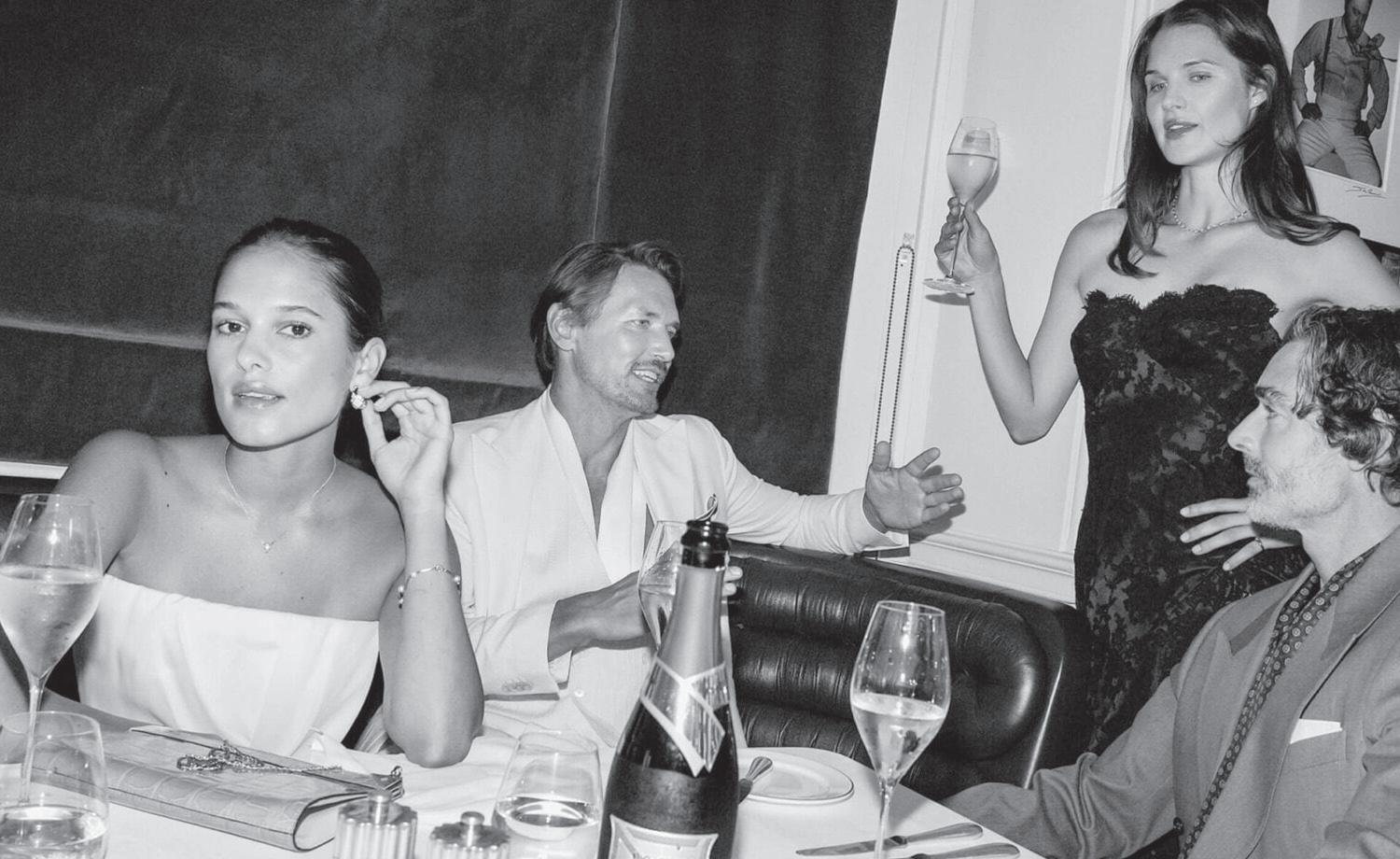


Consider the modern man, a brave soul sailing through the unpredictable waves of fashion trends and wardrobe dilemmas. One day, he is on top of the world in his skinny jeans, the next, they are as outdated as a rotary phone. In this ever-changing sartorial landscape, where choosing between a blazer or a bomber can feel as complex as a Shakespearean soliloquy, creating a wardrobe that is both chic and enduring is no small feat. Fear not, intrepid fashion explorer! We are about to set off on a gallant
quest through the realms of men’s style, picking the choicest of classics and the finest of the future. With a dash of panache and an eye for the timeless, we will traverse this fashion jungle, transforming your closet from a mere storage space to a treasure trove of elegance, all the while tipping our hats to those perennial pieces that even your ancestors would admire.
Through my work as a model and influencer (I still have not found a less icky word for what I do), I have amassed a rather

Chic and enduring are the watchwords in this exclusive men’s capsule wardrobe curated by style guru Jack Guinness
impressive, if disorganised, wardrobe. With concerns about the environmental impact of fast fashion, and in an effort to win the ongoing war with clutter, a streamlined closet is a must. Buy better, less often. It is a false economy to buy lots of pieces that do not last. Purchase the highest quality you can and take care of it.
I have warm, fuzzy memories of my grandparents folding their clothes into brown paper and lovingly storing them away. I, on the other hand, am lucky if I manage to take my clothes off at all after a night out, and if I do, I either wake up with my trousers around my ankles or I find them in a sad little pile in the corner.
Here are my recommendations for a lean, timeless wardrobe, made up of pieces that mix and match and make you feel like a modern style icon...
Let us start with the foundation of any modern man’s wardrobe – a pair of jeans. We are going for 1950s-style baggy, classic jeans, inspired by the effortlessly cool Jacob Elordi. These jeans are all about comfort and style, with ample room for movement, while maintaining a timeless look. You can’t go wrong with Levi’s 501s.
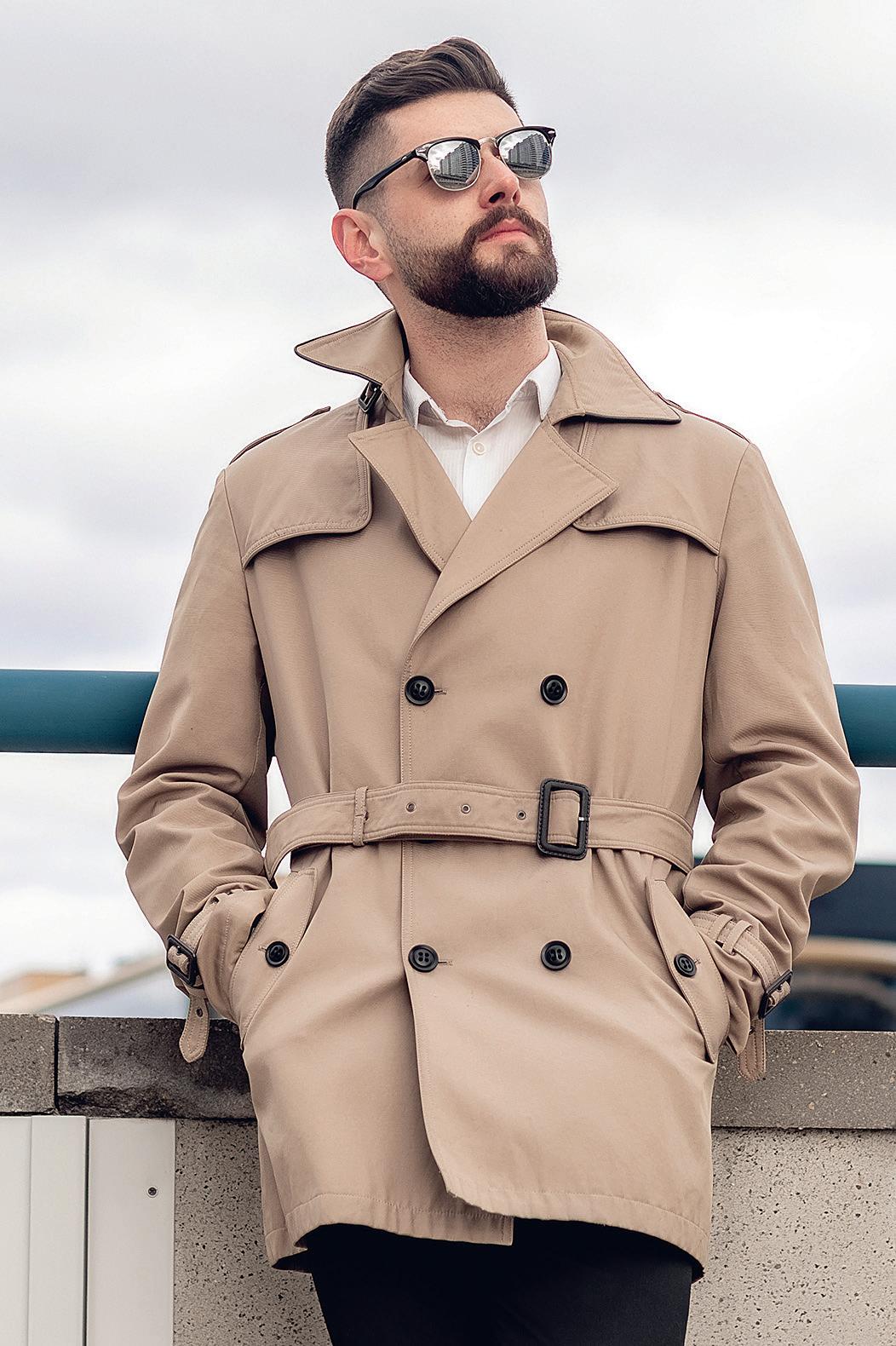



Embrace the unpredictable weather in style with a classic mac. This wardrobe essential strikes the perfect balance between functionality and fashion. It is a piece that has stood the test of time, keeping you dry and stylish in the rain.
Add a touch of warmth and elegance to your wardrobe with a classic sweater. This timeless piece is perfect for layering during colder months or wearing

on its own when the temperature is just right. It is a classic choice for any occasion. Go for Margaret Howell or Paul Smith – Vestiaire has some great pre-loved options.
Every modern man should own a leather jacket that exudes rugged elegance. It is a versatile piece that adds sophistication to any outfit. Whether you are on a night out, cruising on a motorcycle or just cruising, a leather jacket is a must-have.
Elevate your footwear game with a pair of Gucci loafers. These iconic shoes offer both comfort and sophistication. They effortlessly complement a range of outfits, making them a versatile addition to your wardrobe.

For those spontaneous getaways or weekend trips, a reliable travel bag is essential. Look for a spacious and stylish option that can accommodate your essentials while making a statement. It is your trusty companion for on-the-go adventures. Tusting is a family-owned company that has been in the leather game since 1875. Just like me.
Do not forget the finishing touches – a pair of Dents gloves adds a touch of refinement to your winter attire. Keep your hands warm in style with these well-crafted items, perfect for chilly days and formal occasions. Maybe avoid the driving gloves – that may not be the vibe you are looking for.
When the occasion calls for sophistication, you will want an evening suit that stands out. Opt for a tailored fit and impeccable design. It is the epitome of refined style, ensuring you are dressed to

impress at formal events and special occasions. Ben Cobb just collaborated with Tiger of Sweden to create a stunning collection of velvet and satin 70s-inspired suits. Not for the fainthearted.
You cannot go wrong with a Ralph Lauren blazer. If you are off on a sexy, posh weekend break, mix with wool-flannel grey trousers, and alternate your jackets to keep your weekend bag light and your looks fresh.

In conclusion, building a capsule wardrobe for the modern man is all about investing in timeless pieces that exude quality and style. Find an icon you love –James Dean, Helmut Berger, Marlon Brando (when he was young, obviously), Warren Beatty or Paul Newman work. Emulate the classics, mix in contemporary flair, and you will have a wardrobe that is as adaptable and elegant as you are. After all, in the everevolving world of fashion, true style remains timeless and the classics are always in vogue.
iconicluxuryhotels.com






Chewton Glen’s long-serving executive head chef, Luke Matthews, tells Lisa Jenkins about his beginnings as a chef and the importance of apprenticeships and mentoring in the world of hospitality
Luke Matthews moved to Christchurch in Dorset at the age of five, and although he admits he misbehaved at school, he grew up with a love of home-cooked food and the camaraderie of a kitchen.
“I never enjoyed school because I wasn’t academic,” says Luke.
“However, because I needed pocket money, as most young kids do, I did manage to get myself a job in a local Italian restaurant in Christchurch.
“I can still remember how I felt on that first day in Pinocchio’s as a kitchen porter – it was fun, and we had the radio on, and we all had a good laugh together.
Sampling the pizzas at the end of the shift was a revelation. I loved being in the kitchen from the minute I stepped into it, and I loved the food.”
These were the foundations for a life in the kitchen, but Luke was still a long way from imagining a role as executive head chef at what Condé Nast describes as ‘one of the world’s best hotels’.
“My mum was a good home cook, and we ate lots of homegrown food and homemade bread. I guess that laid some basics, and after finishing school, I decided to apply for a chef apprenticeship in Bournemouth.
“At the age of 16, I secured myself a three-year chef apprenticeship at The Green Park Hotel in

Bournemouth, which was a Jewish hotel, run by the rules of the Jewish faith and we all cooked under the supervision of a rabbi. Everything was made in house and it was an incredible training ground for me. The apprenticeship was connected to Bournemouth & Poole College.
“After my apprenticeship
I secured a job at the Dormy Hotel at Ferndown, Dorset, and it was here I first experienced Chewton Glen with a week’s holiday work experience that I organised. My next role was in Jersey at Victoria’s in the Grand Hotel, then on to the Stonor Arms near Henley-onThames, followed by a season in
the Luberon valley in Provence, France, where I met Chris Suter (who was Young Chef of the Year at the time) before coming back to the UK to work with Chris at Bishopstrow House, in Wiltshire.
“It was a vegetable supplier at Bishopstrow House who suggested I apply to work at Chewton Glen permanently when a vacancy for a sous chef opened up. That was back in July 1993 when Chewton Glen was one of the three original country house hotels of the time, including Gravetye Manor in East Grinstead and Sharrow Bay in Cumbria.
“I’ve been at Chewton Glen for over 30 years now and it
all started from a love of the kitchen environment and a classic apprenticeship. The traditional training I had as an apprentice, learning the partie system, training as a commis, then chef de partie, then sous chef and head chef. We have had some excellent apprentices here, including Oli Marlow (a graduate from the Specialised Chef Apprenticeship programme at Bournemouth & Poole College) who has achieved amazing
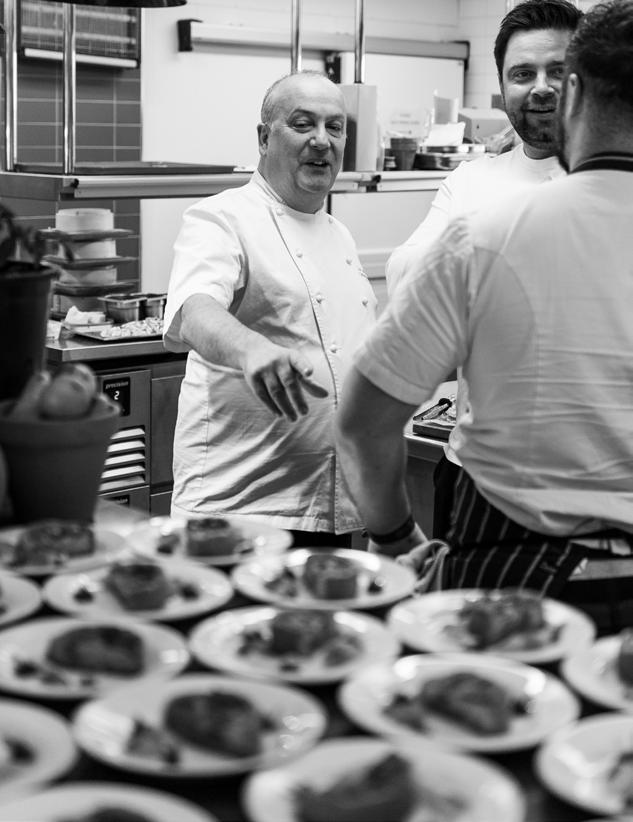
“It’s a privilege to work here at Chewton Glen, personally. I’m lucky to have spent so long here, but the longevity of the kitchen team alongside me is also a reflection of our business”
things with Simon Rogan and his Umbel Restaurant group.
“Apprenticeships are important in our industry for a solid foundation. I love finding someone who is a little bit rough round the edges – like I was – and moulding them into something special. It’s a responsibility though – as they will, of course, pick up behaviours and practices from you. I am also representing Chewton Glen and I hope I’m always kind and helpful to young people. It is important to the hotel and that the hotel gets that feedback – the parents need to know that’s how we work, too.
“Keeping up motivation is key. It’s hard work what we do in the kitchen. Having a sense of humour is important and we enjoy our place of work and have fun. Then, when it’s time to get our heads down and crack on, we do. I start most days on butchery, which is at the centre of the kitchen, so I see everyone face-toface every day and I can usually spot any problems along with my long-term senior team.
“It’s a privilege to work at Chewton Glen, personally. I’m lucky to have spent so long here, but the longevity of the kitchen team alongside me is also a reflection of our business.
“I do think back to my time as an apprentice, and in fact, I’m currently working with one of my original tutors from Bournemouth & Poole College – John MacArthur, who is now at Brockenhurst College. We’ve had many apprentices come through Bournemouth & Poole, and now Brockenhurst and Eastleigh College. We also work with Poole High School.
“At Poole High School we go in and run cookery classes and take lessons. We also run a scheme where the students visit, with lunch and a tour of the hotel. I think that’s inspirational for young people. Sometimes we get young people from schools write in and I am always happy to offer a week’s work experience. If we can sow a seed of interest in a young student then that is great.
The Royal Academy of Culinary Arts (RACA) has played a major part in Luke’s career over the past two decades. RACA is the UK’s leading professional membership association of head chefs, head pastry chefs, restaurant managers and associates. The academy provides education, inspiration and aspiration through a variety of channels, including the RACA apprenticeship programme, the Annual Awards of Excellence, the Adopt A School charity and the four-yearly Master of Culinary Arts competition. RACA supports young people, colleges and educational institutions by providing programmes through its extensive network of academy members and industry contacts, while raising the standards and awareness of food, food provenance and sustainability, cooking and service.
“When it comes to keeping myself motivated, I do this by trying to maintain a work-life balance and by giving something back to the hospitality industry,” says Luke. “I joined RACA about 20 years ago and I enjoy being part of the end-ofyear exams at the colleges, and more recently, supporting the group of chefs who head up the academy’s Annual Awards of Excellence.”


iconicluxuryhotels.com

Jewellers
have always been at the forefront of reuse and recycling.
Rachael Taylor examines this new luxury jewellery revolution
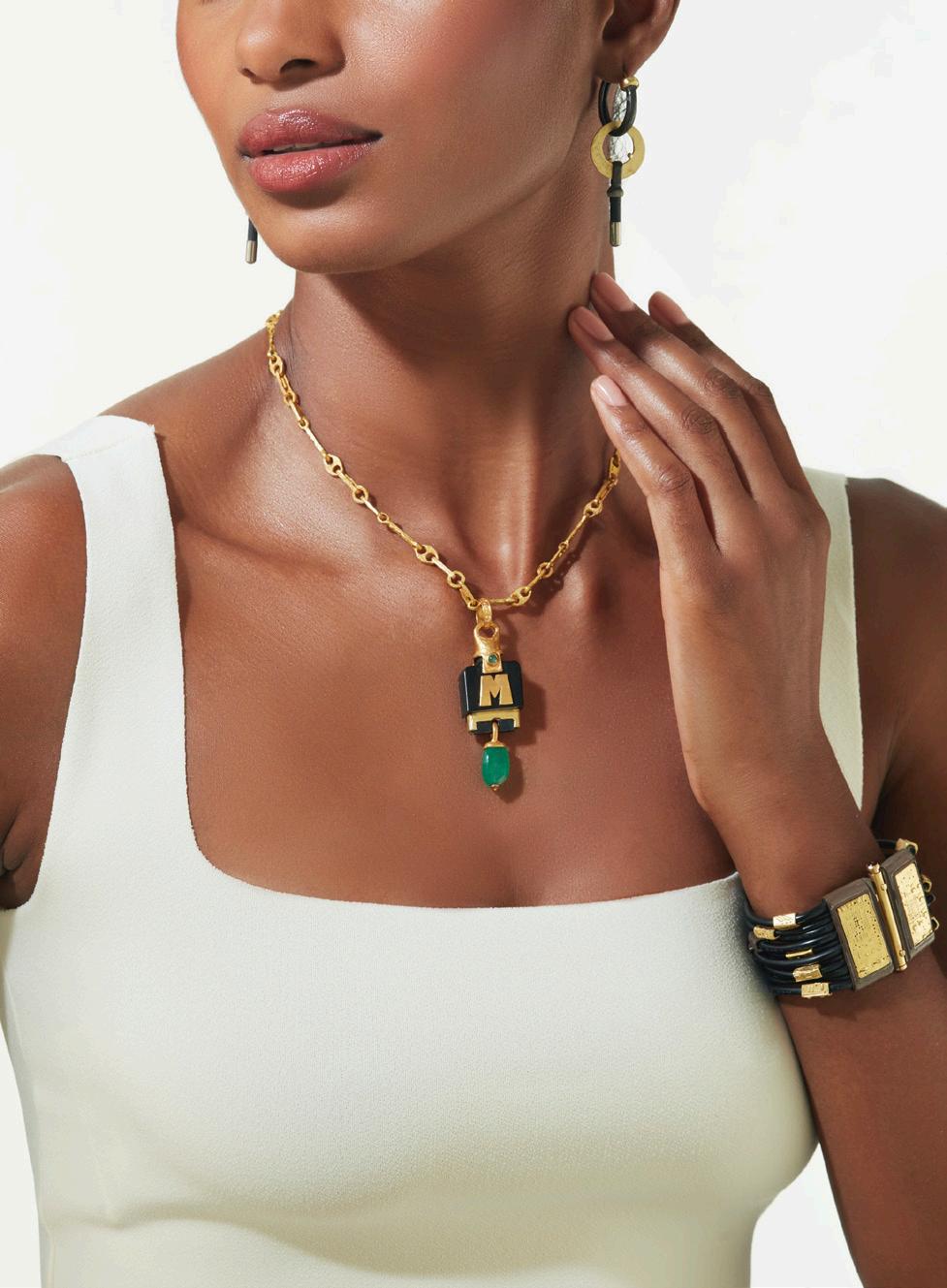
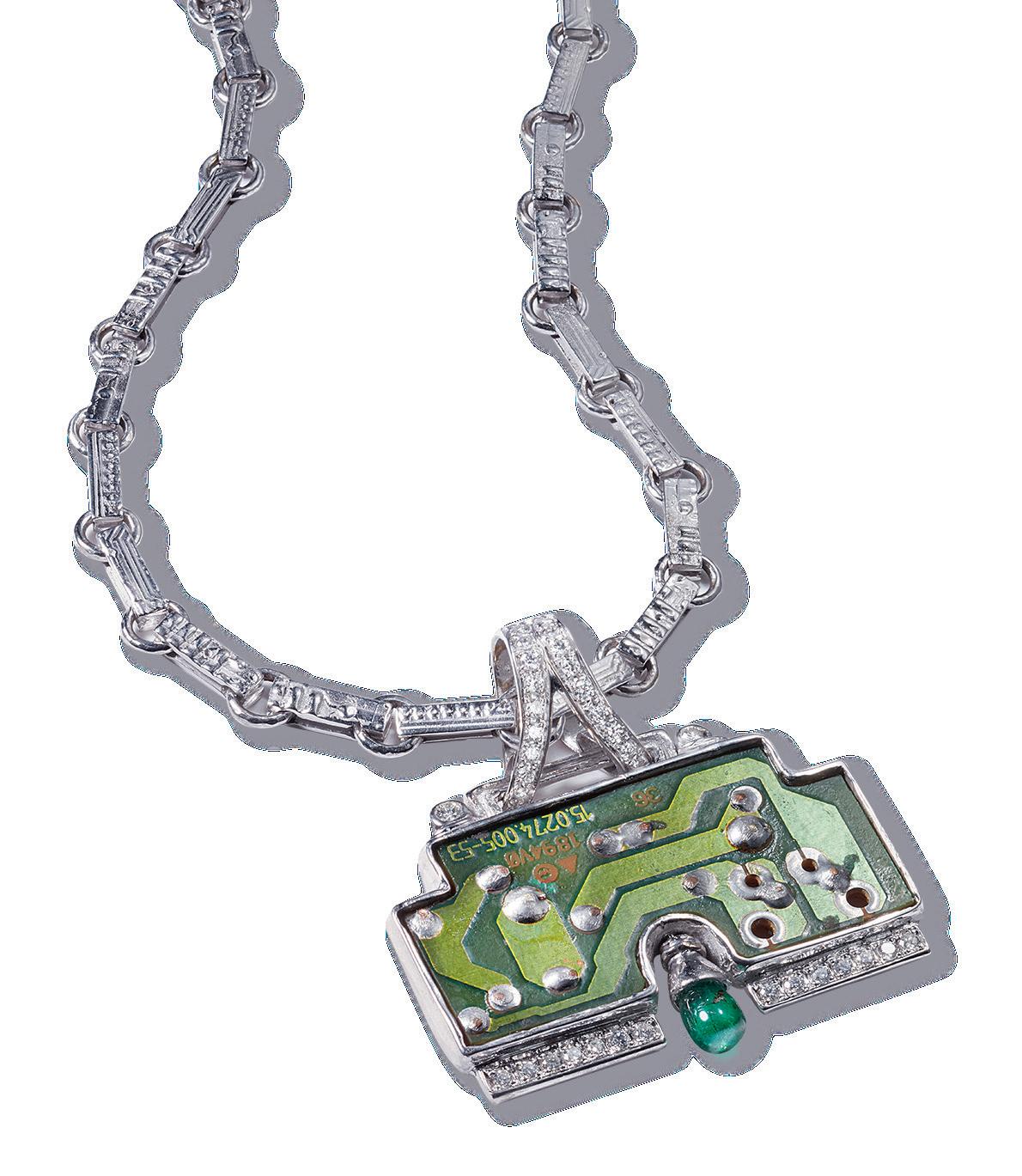
For Gillian Carr, it was a lockdown spent seeking connection via her phone that led the art collector to think more deeply about the device in her hand and what would happen to it when it was no longer useful.
“As a society, we upgrade our phones on average every 18 months and this creates a huge amount of waste,” says Carr. “Eighty per cent of e-waste isn’t recycled properly and ends up as landfill. It’s one of the fastestgrowing environmental concerns of our time.”
Intrigued to see if she could find a creative solution, Carr and two friends cracked open old mobile phones to see what lay within. “We discovered many beautiful elements – the colours, the shapes – and we were inspired to elevate them into beautiful pieces of wearable art,” she says.
Their jewellery brand Oushaba launched this year, and its debut collection, Connection Salvaged, is a celebration of e-waste, with circuit boards, charging cables, USB sticks and other components presented as alternative jewels. To elevate the designs, Oushaba sets the e-waste in gold or silver, alongside diamonds, emeralds, rubies and sapphires. As such, prices can be as much as £40,000.
iconicluxuryhotels.com
“Mixing high and low is part of the charm,” says Carr, who says clients have sent in their own discarded electronics for bespoke commissions. “It sparks people’s imagination and they see afresh that the e-waste components can be just as beautiful and jewel-like as the solid gold and precious gemstones. We aim to challenge people’s preconceived ideas about what is luxury versus waste.”
Alternative sources of recycled precious metals, such as gold salvaged from electronics or silver extracted from used X-ray film, are now being used by jewellers, including fashion giant Pandora, to add a little narrative spin to their sustainability credentials.
Eliza Walter, founder of jewellery brand Lylie, was one of the early adopters of e-waste gold, and says that getting clients to accept it was difficult. “It was a slow burn,”

“I like using found objects that are often overlooked and not considered treasure by others. Patterns of erosion, distortion or patina are things that appeal to me”
she recalls. “I think once clients realised it was the same quality as newly mined metal, but with a far more sustainable source, its appeal grew.”
Walter now finds all her precious metal at the bottom of her clients’ jewellery boxes. She has set up a scheme she calls Gold Exchange, through which store credit is given in exchange for unwanted jewels; Lylie offers 7.5 per cent above the London bullion market rates. “It has provided us with a totally circular source of gold,” says Walter. “[And clients] also feel good using it, like they are doing something positive.”
Part of the drive to use more recycled materials is to reduce mining. Although responsible mining does have its place –particularly from the viewpoint of supporting local communities that rely on it – some brands are choosing to opt out entirely. This might mean working exclusively with recycled metals and vintage gemstones, or swapping natural diamonds for laboratory-grown diamonds.
Quirkier historical elements are finding favour too. Glenn Spiro’s Materials of the Old World collection uses 3,000-year-old Egyptian faience ceramic tiles and battered rounds of ancient

turquoise and amber. New brand Seal & Scribe seeks out Georgian and Victorian intaglio seals, refurbishing them and setting them in one-of-a-kind rings, and art fair favourite Hemmerle incorporates 19th-century cameos into its contemporary designs. Mudlarking – sifting the banks of the River Thames for hidden treasures (a sport that requires a licence) – has become a pastime popular with jewellers including Ruth Tomlinson and Liz Willis. It is not unheard of for the mud to throw up garnets and gold, but for Willis, who incorporates finds such as rusted pins and nails in contemporary designs, the thrill is in the historical value of the items. “I particularly like using



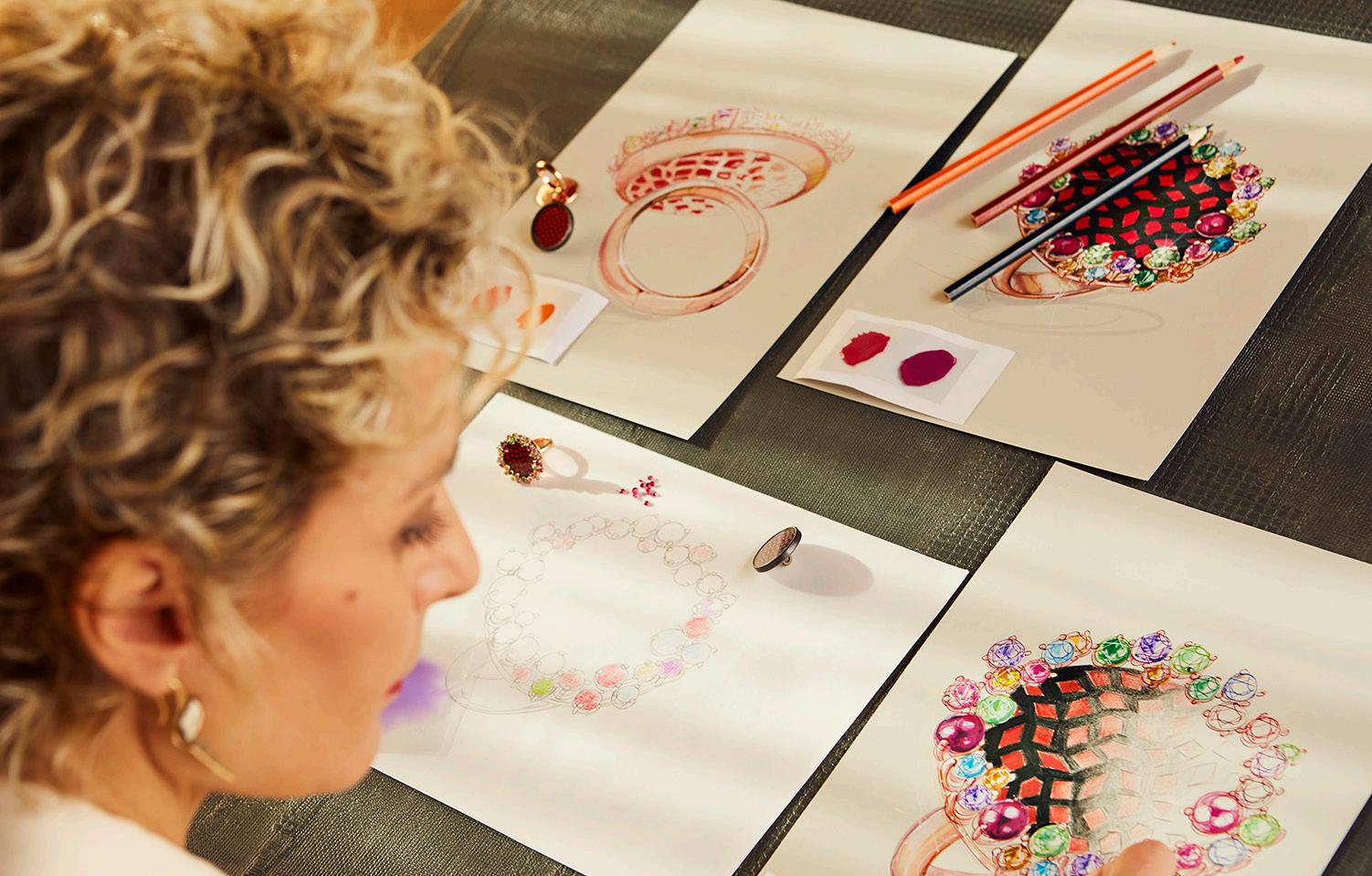
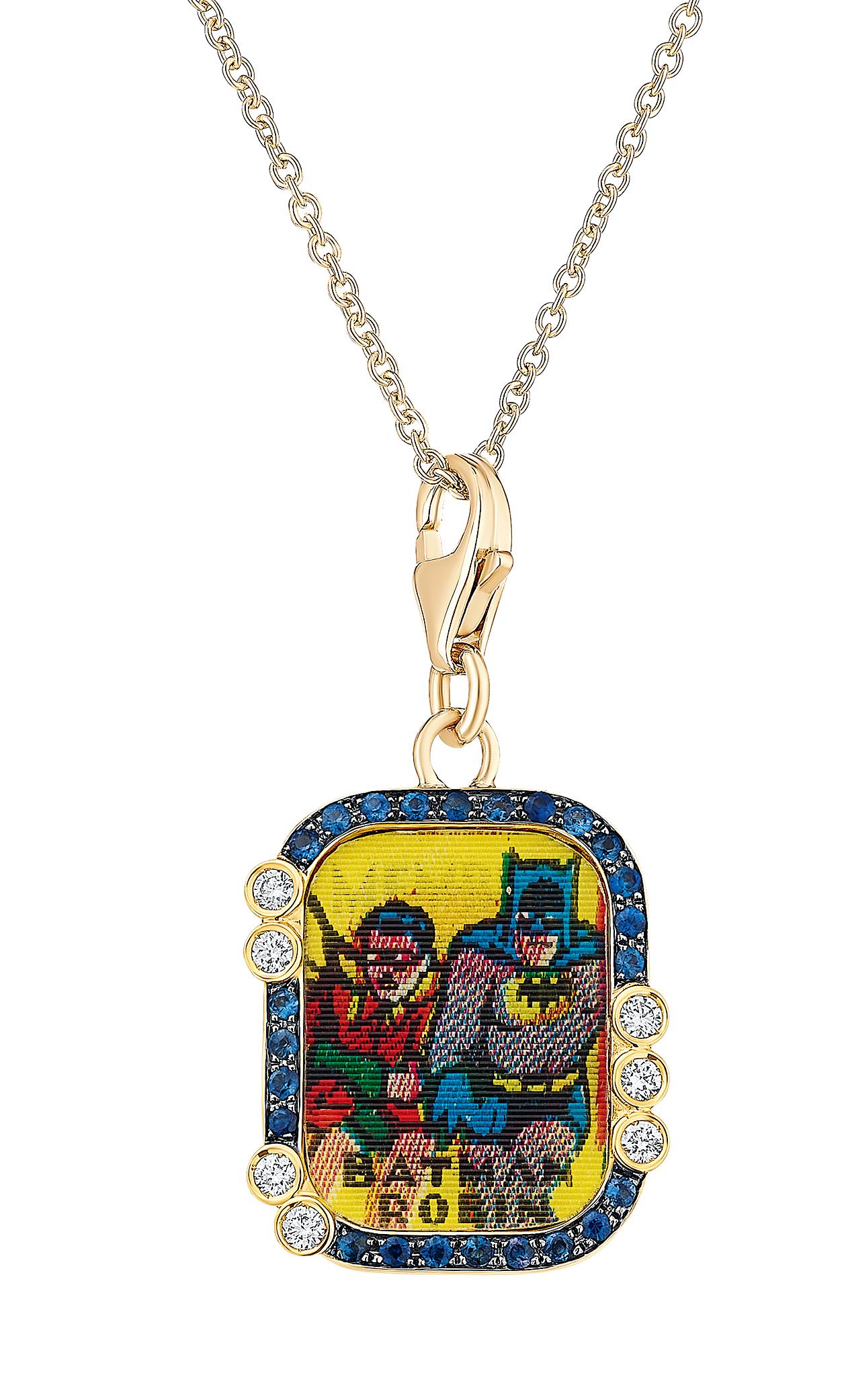
found objects that are often overlooked and not considered treasure by others,” she says. “Time often wears these items down, and the resulting patterns of erosion, distortion or patina are things that really appeal to me.
I always leave the object as I find it, apart from cleaning it, and I add a fine layer of renaissance wax to it to preserve the surface.”
Francesca Villa has a thing for vintage casino chips. When asked why she goes to the trouble of seeking out old chips when new ones would have the same aesthetic, she replies: “I love creating jewellery with elements that have lived a life before, because they have a story to tell. The old ones are not perfectly clean, and they often have many imperfections, which are actually their real beauty. Touching them, I imagine the casino players wrapped in cigarette smoke – the wins and losses of a thrilling night spent playing cards.”
Other jewellers are seeking out new alternative sustainable materials rather than looking to the past. “One of the values underpinning Kinraden from the start was that everything would be sourced in the most gentle

way, minimising the impact on nature,” says Sarah Müllertz, a Danish architect and founder of the jewellery brand. “To prevent any climate effects or CO2 emissions, I would not be digging anything from the ground. This meant it was quite easy and quick for me to decide that I couldn’t use gemstones in any way.”
Instead, she fashioned gemstone shapes using mpingo blackwood. The hardwood is grown in a small, ethically managed forest in Tanzania and is used to craft wind instruments, including clarinets and oboes. The woods Kinraden uses are the offcuts from this practice. “It is interesting to use a material that is beautiful, valuable and provides a fresh outlook on how
“It is interesting to use a material that is beautiful, valuable and provides a fresh outlook on how we introduce and repurpose existing materials in fine jewellery”

we introduce and repurpose existing materials in fine jewellery,” says Müllertz.
Maria Sole Ferragamo, the designer behind jewellery label So-Le Studio, was also inspired to make use of a by-product: brass shavings created by lathe machines producing hardware for luxury fashion accessories. Inspired by stories of her grandfather, the Italian fashion designer Salvatore Ferragamo, using chocolate wrappers in place of leather to create woven shoe uppers during the Second World War, Ferragamo wove the sharp shards together by hand to create cuffs, necklaces and earrings. These were then plated with gold and decorated with monochromatic enamels. The Trame (Weaves, Plots) collection made its debut at the PAD London art fair in October via art jewellery dealer Elisabetta Cipriani.

of preciousness lies not in the starting material but in the artistry that breathes life into it.”

“The Trame collection is a testament to the transformative power of creativity and the profound impact that can be achieved through upcycling,” says Ferragamo. “I truly believe that by harnessing the inherent beauty of each brass shaving and carefully weaving them into extraordinary pieces, they can be reborn into exquisite, wearable works of art, reminding us that the essence
It is not just independent brands flexing their creative muscles when it comes to alternative recycled adornments. Last year, Boucheron launched a capsule
“The essence of preciousness lies not in the starting material but in the artistry that breathes life into it”


collection entitled Jack de Boucheron Ultime that featured a black, faceted, onyx-like gemstone that wasn’t a gemstone at all. It was actually Cofalit, a by-product created during the manufacture of asbestos. The material is usually buried as it is a hazardous substance, but Boucheron has found a method of vitrifying it to make it safe. Boucheron creative director Claire Choisne acknowledges that Cofalit is a “radical” choice of material for a traditional luxury jewellery house, and “the opposite of what is considered precious in the collective imagination.”
It will also help the jeweller in its mission to reduce its environmental impact, 61 per cent of which is generated by its current choice of raw materials.
All this might feel new and experimental, but jewellers have been at the forefront of recycling long before the term existed. Every flake and curl of gold lost to the manufacturing process is saved for the melting pot, and gemstones are continually plucked from worn claws and reset. Nothing is wasted. If ever there were an artisan ready to embrace the full power of reduce, reuse, recycle, it is the jeweller.
One of the New Forest’s hidden gems. A beautiful Grade II Listed farmhouse on the edge of Exbury that has been sensitively updated by the current owners and now offers extensive accommodation of over 6,200 square feet including excellent home office space. The house sits centrally in over 12 acres of grounds which include outbuildings, gardens, swimming pool, paddocks and woodland.
Please contact the Lymington office to arrange a viewing
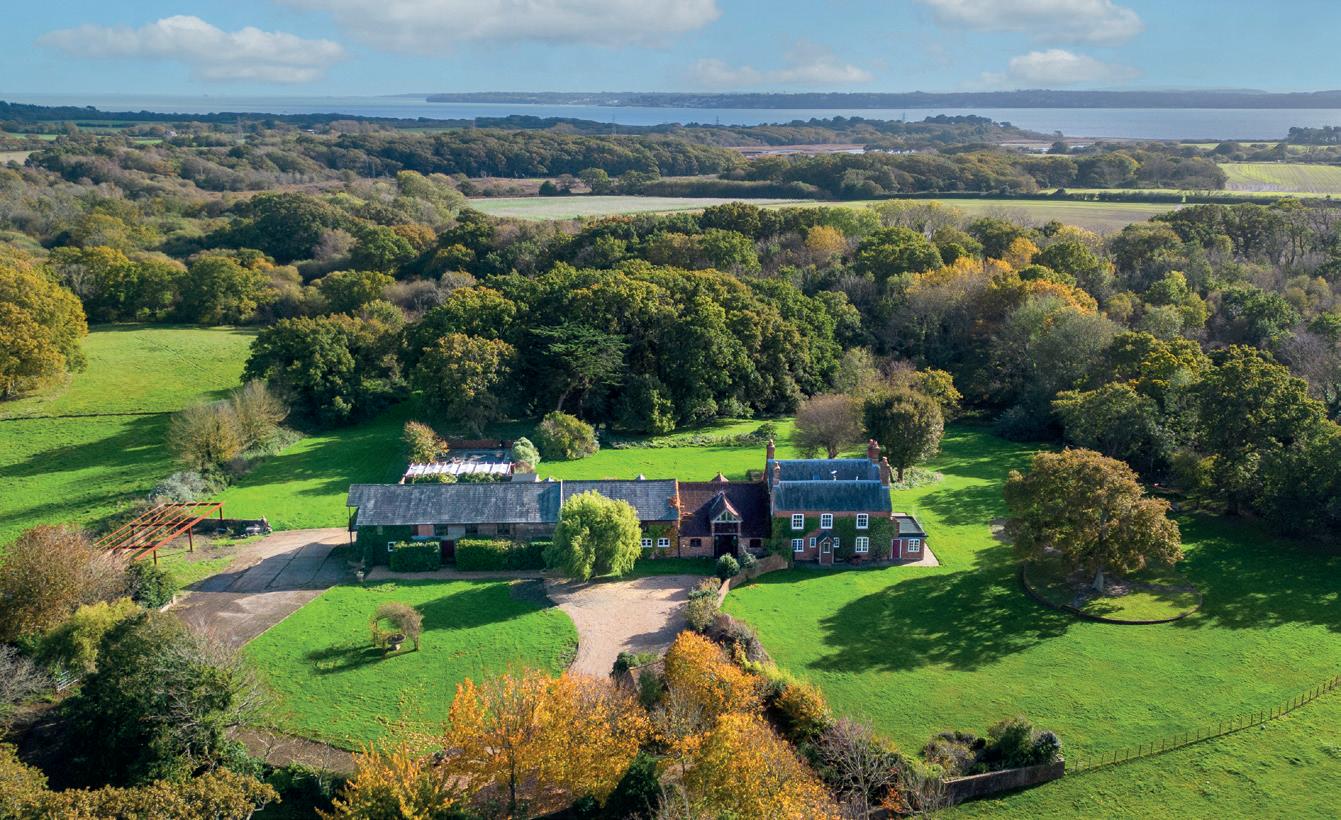
£3,995,000

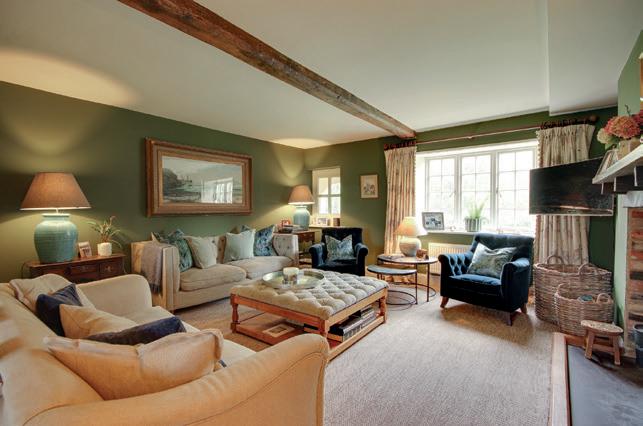
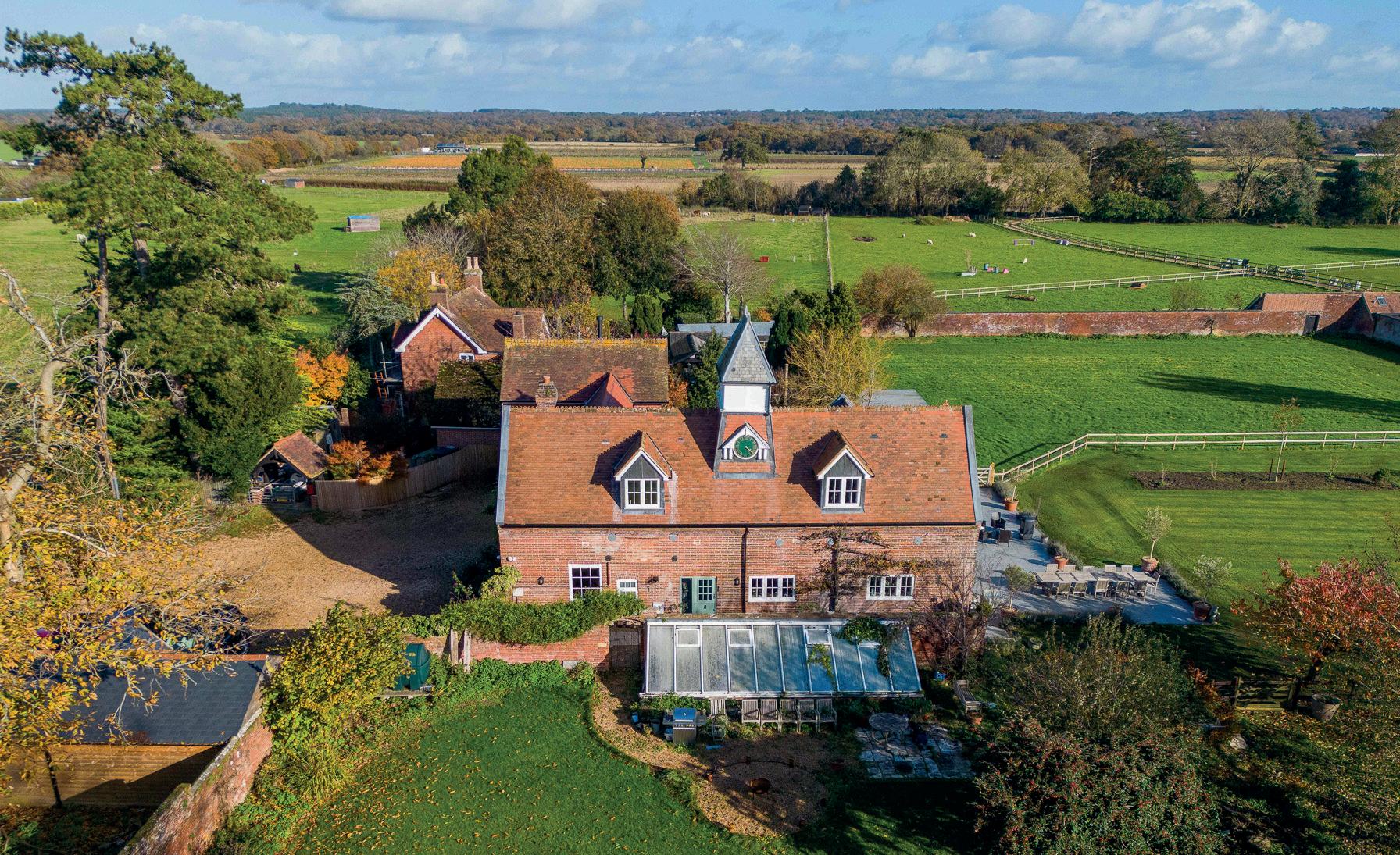


The Clock House is a beautiful example of a conversion of former stables and coach house and is always instantly recognised by its signature clock tower. The stunning accommodation is elegantly presented retaining much of the original period features including impressive tall ceilings in most of the reception rooms. Outside the property is approached along a sweeping drive and the whole site amounts to about eighteen acres of paddocks and gardens.
Please contact the Ringwood office to arrange a viewing
A historic and well appointed residence which combines a timeless atmosphere with contemporary accommodation in this incomparable setting. Set in approximately 11 acres of level gardens and grounds with views towards the Beaulieu River, the main house extends to over 6,000 sq ft with further 2 bedroom guest flat. There is a heated swimming pool, tennis court and extensive garaging, outbuildings, workshops, stables alongside a romantic ruined 11th Century Chapel.
Please contact the Lymington office to arrange a viewing

£7,650,000
5





This magnificent country home offers extremely generous accommodation including seven bedrooms, four reception rooms, garaging for five cars, spectacular indoor pool complex and meticulously maintained gardens extending to about 5 acres.
The property nestles in the highly prized location of Emery Down, on the fringes of Lyndhurst and enjoys direct access to the open forest
Please contact the Burley office to arrange a viewing
Incremental changes every day can help concerned middle-agers looking for a healthy reset. Susan D’Arcy shares her 10-point plan
You already know you should drink more water and less alcohol, eat more vegetables and less sugar, and exercise at least three times a week. But you have started dozens of health kicks over the years and the thought of another is rather daunting.
What you need is an easy route to a more confident and incentivised mindset that puts you in the right physical and mental shape to establish a long-term healthier lifestyle. Here
we look at some easy but effective marginal changes that will have maximum impact on your health.
Before you dismiss this idea as too good to be true, remember that David Brailsford used this approach when he went to British Cycling. He believed that a one per cent improvement in every area would add up to remarkable results. He introduced tiny tweaks – for example, the inside of the team truck was painted white to help them spot
flecks of dust that could degrade the performance of the bikes.
British Cycling had been in the doldrums for more than a century – in fact, one top manufacturer refused to sell bikes to the team, because it feared the association would damage sales. Within five years of Brailsford’s policy, British riders were dominating the sport.
Here are 10 tips to get you on track to looking and feeling 10 years younger, if maybe not an Olympic champion.


3 RELAX
Most of us practise new habits religiously for a few weeks and then something happens – a holiday or a busy week at work – and the new routine gets sidelined and forgotten. Studies suggest it takes about 66 days to establish a new habit, so you need to be clever to propel yourself through that period. Habit stacking means piggybacking a new routine on an established one until the former becomes second nature. Choose any activity that you undertake most days. For example, do Box Breath on your commute to work. Prompt yourself to do this, by putting a tag on your work bag.
1 2 4 5
Literally. Lifestyle is as important as genes in determining your long-term health, with stress a significant factor in issues such as high blood pressure, heart disease, stroke, obesity, cancer and diabetes. If you are reading this in the comfort of an Iconic hotel, congratulations – luxury hotels are a classy way to lower your cortisol levels. You are also doing one of the easiest anti-stress practices you can – breathing. If you control your breath properly, you can trick your mind into relaxing. Try the Box Breath technique: breathe in for four, hold for four, out for four and then hold for four again. Repeat for up to five minutes.
Balance deteriorates with age, which leads to falls and broken bones. Here is a habit stack to boost your balance. Instead of simply staring into the mirror as you brush your teeth, make those two minutes every morning and evening count by balancing on one leg as you brush. Put a Post-it note on the toothpaste tube to remind you to practise. Once you have mastered this with your eyes open, try it with your eyes closed.
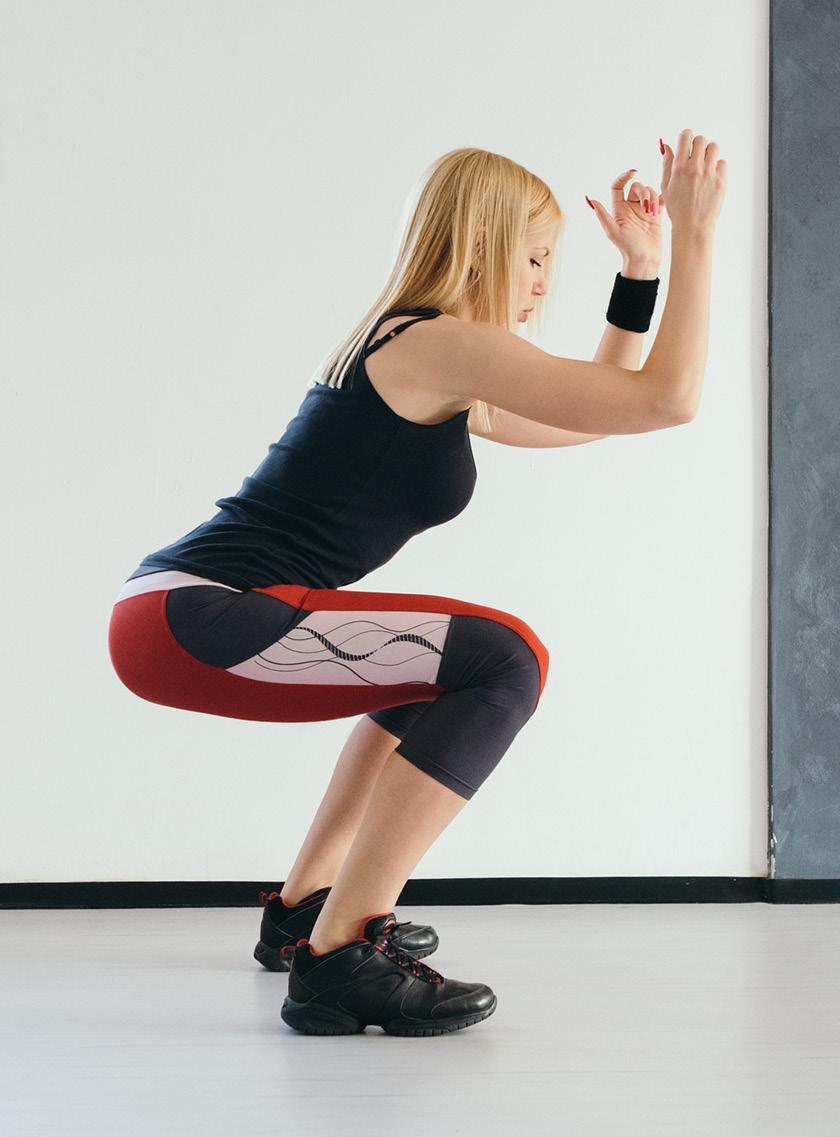
You do not need to go to the gym to do the single most important exercise for older people: squats. Lower leg muscles waste away quicker than elsewhere in the body, so it is important to work this area every day. If you are not ready for full squats initially, stand up and sit down on a chair, without using your hands, repeatedly for several minutes. A habit stack here might be performing squats while the kettle boils for your morning cup of tea.
Researchers have established that consuming the right foods can have a significant effect on your cardiovascular fitness, the equivalent of taking 4,000 more steps a day. Better still, change can occur in as little as four days. Introduce more fresh whole foods, leafy green vegetables, healthy fats, chicken, fish and nuts, and replace carbonated drinks with water and milk.
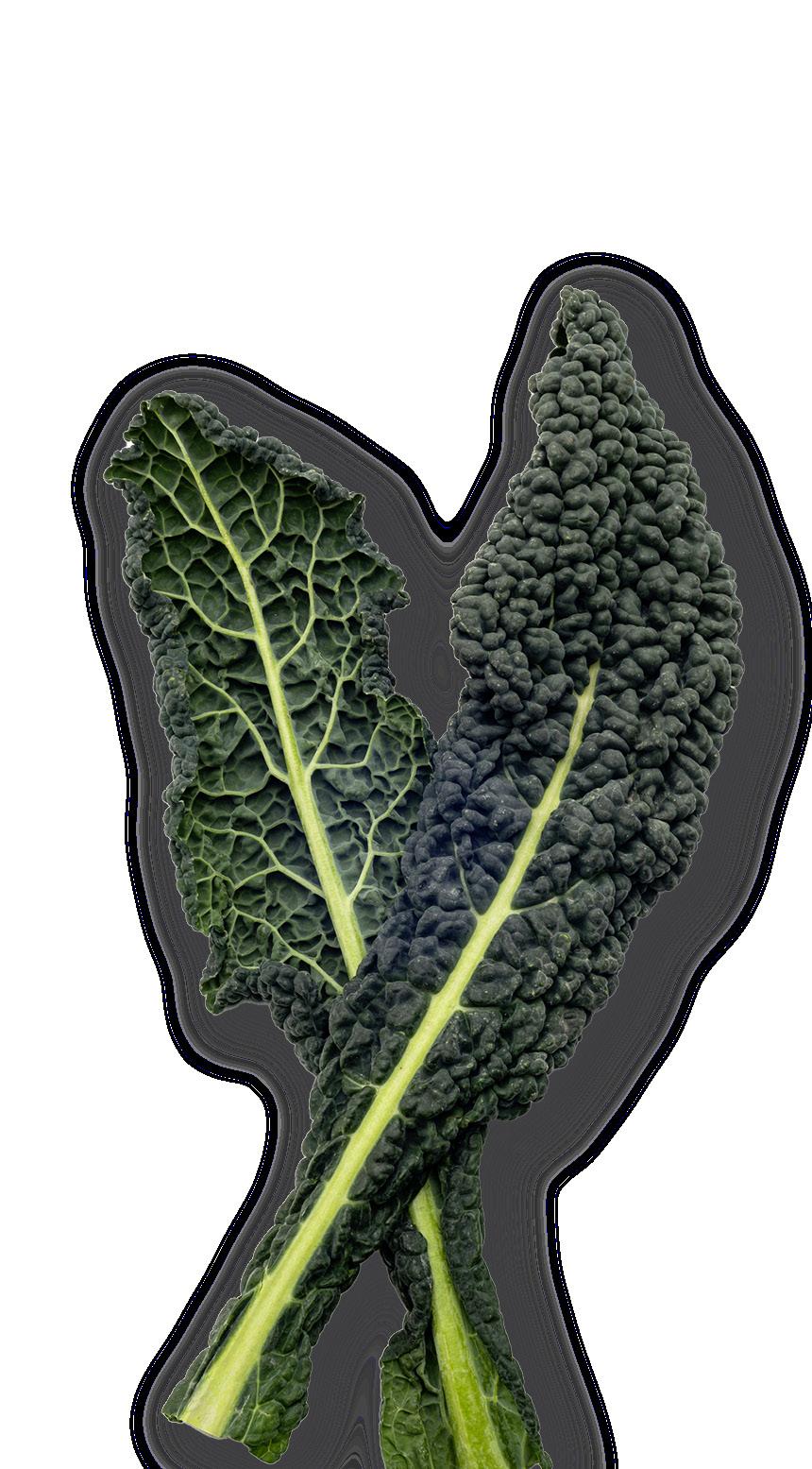
Studies suggest people with gum disease are up to nine times more likely to die after contracting Covid and are at more risk of cardiac arrest and developing Alzheimer’s and Type 2 diabetes. The correct process is: interdental sticks or floss first, then brush for two minutes both morning and night and never rinse your mouth afterwards. It is better to let the fluoride stay in your mouth.

SNACK
As in exercise snacking. Many people simply cannot take the time out of their day to go to the gym, so introduce short bursts of clever cardio.
Skipping for 10 minutes is equivalent to a 30-minute jog, burns around 30 per cent more calories than running and is easier on the knee joints. What’s not to like?
Studies also show that walking at 100 paces a minute (about 2.7 miles an hour) lowers a person’s biological (as opposed to chronological) age by up to 15 years. Turn a 15-minute stroll into a seven-minute brisk walk and lower your risk of cardiovascular disease by as much as 14 per cent.
6 7 8 9 10
People in their fifties probably only get half the deep-sleep stage of rest they enjoyed as teens. Lack of good sleep affects memory, concentration, the immune system and may contribute to cardiac arrests and developing certain cancers. To improve the quality of your sleep, listen to binaural beats or ‘pink noise’. This is a soundtrack that features two different tones, at different frequencies, played at the same time.
We all know that fermented foods are good for your gut microbiome, but many people do not like the taste of kimchi and kefir. So why not try a gut-health powder such as Jerms instead. It contains probiotics, prebiotics, digestive enzymes, organic superfoods and vitamins and you can sprinkle it on cereal or add to a cold drink.
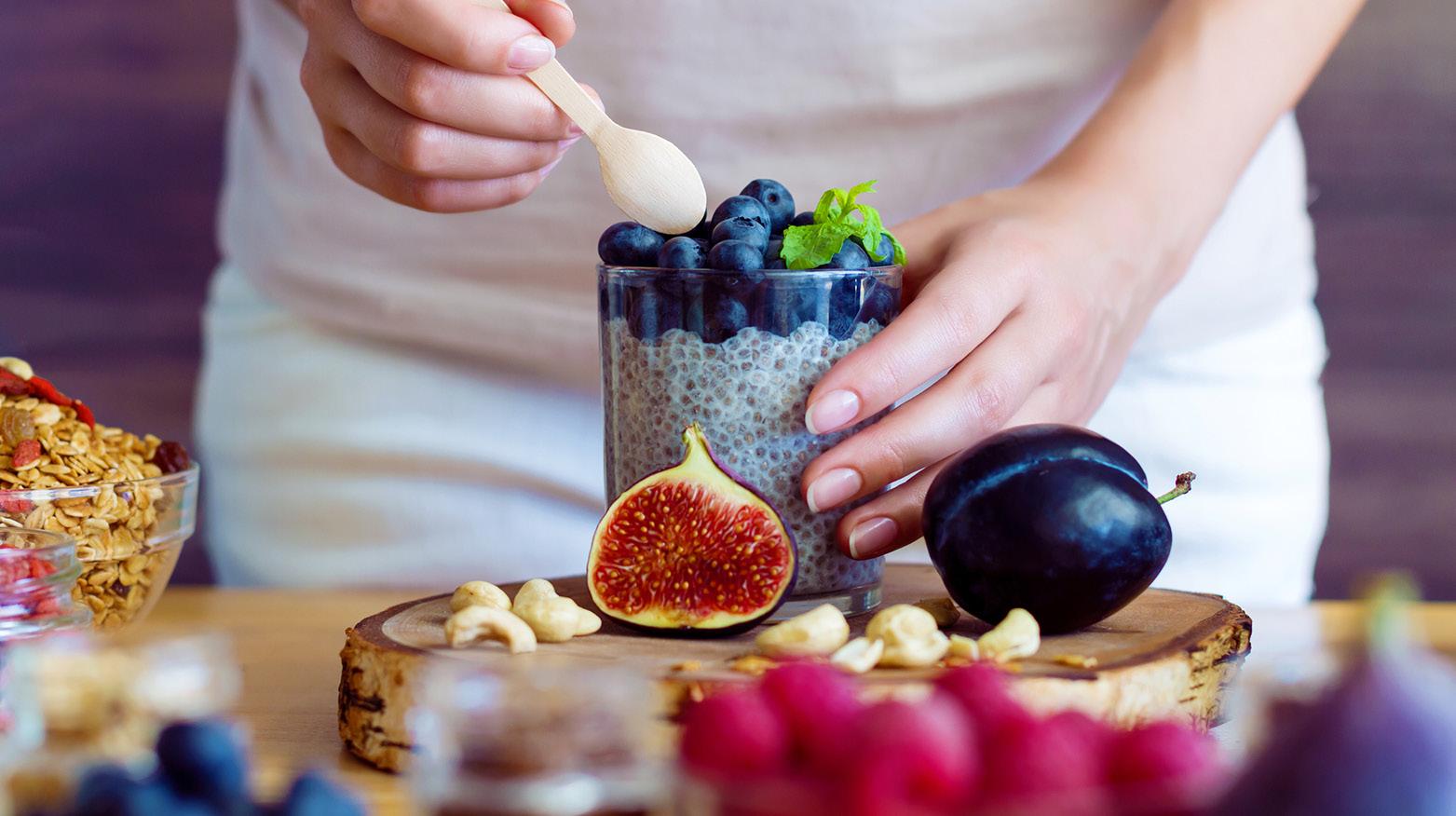

According to Alzheimer’s Research UK, only two per cent of us do all we can to maintain cognitive function. Check out the Think Brain Health Check-in test on the charity’s website for advice about how to give your grey matter a boost.
And when you have done all the above, you could always treat yourself to a ‘Treetox’ retreat at Chewton Glen and move up to the next level.
iconicluxuryhotels.com


A more thoughtful and independent way of dressing holds the key to true style in 2024, says Alexandra Carello

I have sensed a shift recently. A slow altering of consumer mindset that is searching for something more meaningful. A turning away from the mass, the obvious, the fast.
This era of digital boom and fast pace has left most feeling defeated. In response, I have observed a retreat. A collective plea to slow down, consolidate and spend time only on what you deem most worthy. A valuable sentiment for 2024.
This mindset manifests itself in a strong desire to build a unique wardrobe. Not a collection that is bursting at the seams with cheap items that hold no meaning, but instead, a carefully curated selection of thoughtful pieces that speak to who you are as a person.
This is one of the reasons I love fashion so much. I believe it is a shell that represents thoughts and stances. Fashion is not just about good products – it is a sign of the times. When well made, pieces can be a beautiful and interesting vehicle for messages, causes and opinions, allowing us to express ourselves without even a word. To quote Elsa Schiaparelli, “Fashion can be a powerful tool for self-expression, liberation and empowerment.”
It is time to remember this. We have been distracted recently –seduced by the constant need for

newness, tricked into believing that more is more. Time to review this mass-market treadmill. And when I refer to mass, I am not only alluding to the culprits we all know, but also to the luxury brands whose logos have become ubiquitous. No longer a marker of taste – the opposite, in fact, to those in the know.
As we emerge, ready to slow down, it feels like time to seek a more thoughtful and independent way of dressing, to hunt for treasures and exercise our own taste and curation. I love England for its unceasing creativity. There is always an exciting array of designers with new perspectives, all creating well-made pieces with the environment, people and quality at their heart.
These are the brands I want to invest in, the brands that could be saying something about you. Fill your wardrobe with stories, emotions, journeys that declare a life lived – not just clothes worn.
Curation is a valuable tool, giving context and relevance to
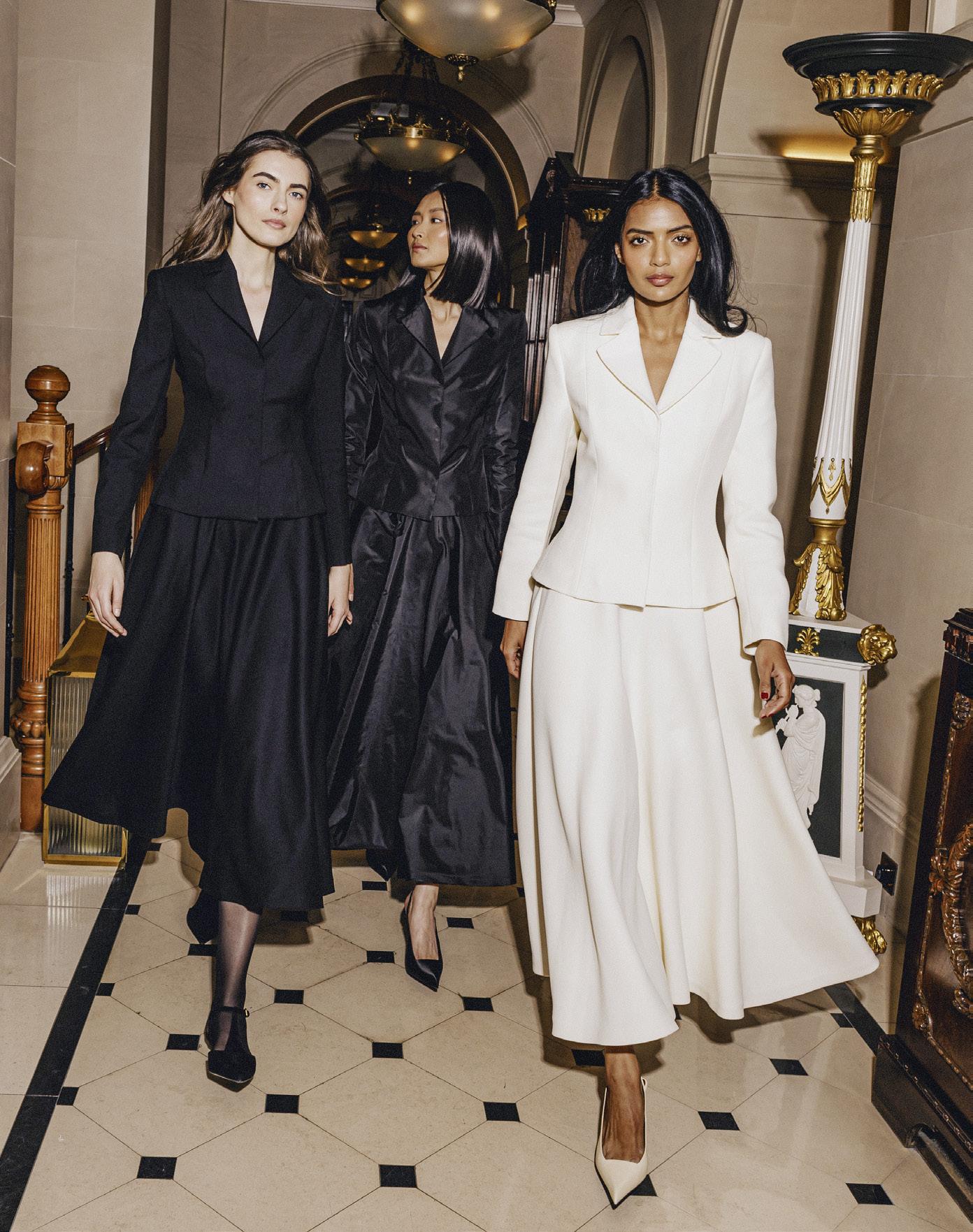
what could be considered old or unknown. One of my favourites is resortwear label, Casa Raki. South American in spirit, the brand has just launched a velvet capsule –elegant eveningwear created from deadstock fabric.
Distinguish yourself as someone in the know, so your friends are compelled to ask, “Where did you get that?” Portuguese accessory designer, Le Touquet, creates beautiful, statement wax-flower earrings that invite intrigue every time I wear them, while the mother and daughter duo behind jewellery brand YSSO honour their Greek heritage through golden designs that feel both modern and vintage.
Others I always return to are La Veste, for its shirts, or sustainable

“As we emerge, ready to slow down, it feels like time to seek a more thoughtful and independent way of dressing, to hunt for treasures and exercise our own taste”
destination-wear brand, Paper London. These brands never over-produce, so you will always stand out.
Recently launched Gallello Atelier offers no ready-to-wear, only made-to-measure or bespoke pieces, created after an at-home fitting. The aim is to put meaning and connection back into people’s wardrobes, involving the customer in the process of creation as much as in the final product. With designs handmade in a Venice workshop, the styles are embedded with care and craftmanship.
Hunting out vintage treasures is also a special way to add unique touches to your wardrobe. My mother has an amazing array of pieces collected over the years that still feel relevant now.
“Consumers tend to be drawn to iconic vintage items because of the satisfaction that comes from owning pieces that will never be produced again”
Fashions come back around, so it is important to keep those items that are emblematic of a brand or a time. My mother has some pieces from brands that do not even exist anymore – I wear these with pride, knowing no one else will have them in their wardrobe. Anna Vitello, editor and artistic director, has become well known for her ability to seek out vintage treasures. She loves them for their ability to add “those flourishes that feel so special to you and speak to your style in a way that anything contemporary cannot do so uniquely.”

Anna recently created Cassetto, a specialist edit of vintage jewellery pieces discovered through her travels. She highlights research, setting alerts on sites like Vestiare and even searching on Google Images to find those really rare pieces.
There has been an awakening when it comes to curating a wardrobe, and vintage pieces are being re-examined for their ability to retain value. Indeed, Hanushka Toni, founder of Sellier Knightsbridge, created a business around this. As customers began to see the resale of vintage Chanel and Hermès bags, Sellier created a halo around the category, opening our eyes to the importance of items from the past.
Hanushka also attributes this to the way popular culture has iconised past trends. She notes, “Consumers tend to be drawn to iconic vintage items because there is an element of rarity and a satisfaction that comes from owning pieces that will never be produced again.”
She welcomes pieces from French fashion houses like Chanel and Hermès, especially
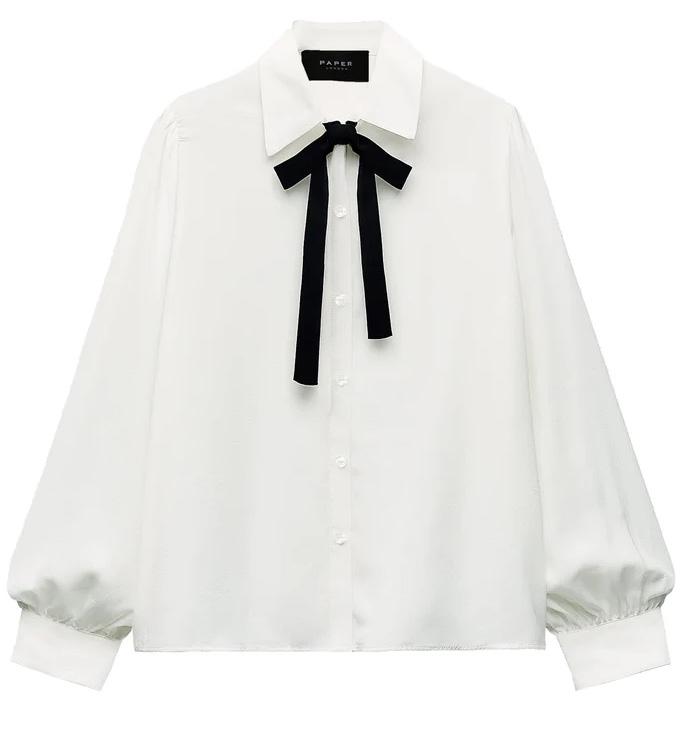
iconicluxuryhotels.com

the collectors’ items that keep appreciating.
All the eras seem to exist in unison today. There is no single era that dominates, but rather, tribes find their niche and all decades co-exist together. I love to see this individuality and expression through fashion. I am particularly fond of the idea of pieces from different decades living together in your wardrobe.
Each time you open it, it is as if you are travelling through time.
I have come across a lot of people seeking quality over quantity. Fashion responds to socioeconomic climates, and right now, there is a call for quality and values, with silhouettes becoming functional and tones more muted.
This is not to say that your wardrobe needs to be boring, but rather a source of immense satisfaction in something beautifully and thoughtfully made that will stand the test of time. We are all shying away from the fast and the cheap, as we realise that the highs from these purchases are short-lived and unfulfilling.
Andrea Cheong, an illustrator and writer, as well as TikTok and Instagram influencer, recently published her first book, Why Don’t I Have Anything To Wear?, focusing on this topic. Andrea recalls, “Fast fashion didn’t make

me feel good at all, yet we are told that clothes can help us with confidence. This wasn’t the case for me and so many women I know. Since then, I started my mindful shopping journey, prioritising quality, natural fabrics in my everyday clothing.”
This took her on an inwardlooking journey, leading her to reassess why she was consuming clothes. Devising the Mindful Monday Method in 2019, Andrea now curates her wardrobe, designing something that is much more cohesive and that speaks to her personal style.
It is worth exploring the psychological benefits of having a decluttered and meaningful wardrobe by building for yourself a capsule collection that makes you feel you always have something to wear that is well made and stylish. Your wardrobe should be an accomplice in your morning routine, not an enemy. I work with many personal stylists who have been called upon by women to help them tackle this and refine their wardrobes.
A curated, unique wardrobe is a narrative of who you are and what you believe in. It can set you apart from your peers and speak to your taste. Find pleasure in seeking out what is not obvious, and above all, remain curious.
“Fashion responds to socioeconomic climates, and right now, there is a call for quality and values, with silhouettes becoming functional and tones more muted”

Michelle Pughe-Parry de Klerk, founder of The Women’s Chapter, speaks to female sustainability trailblazers who believe women are the agents of change
The United Nations 2030 Agenda and a supporting report by the UN Secretary-General show that one of the solutions to the climate crisis is to have more women in business. It is proven that women put purpose at the heart of their business and female-led businesses want to serve people and the planet, rather than just make profit at any cost.
The UN states that to counter the climate crisis, we need to tap into all human potential – including that of women: “Investing in women entrepreneurs is smart for achieving social and environmental objectives.” The Sustainable Development Goals (SDGs) make a fundamental connection between sustainable development, environmental impact, gender equality and the empowerment of women and girls.
Climate change affects everyone, but it is the world’s poorest and those in vulnerable situations, especially women and girls, who bear the brunt of environmental, economic and social shocks. At the same time, women and girls are also early adopters of new agricultural techniques, first responders when disaster strikes, and important decision-makers at home and in their businesses about energy and waste. The UN has said that climate action cannot be successful or sustainable if it does not involve women, while the UN

Secretary-General has singled out the leadership of women because of their unique ability as ‘drivers of solutions’ when they are empowered.
One Earth, a non-profit organisation working to accelerate collective action to solve the climate crisis, also sees women as being key to the climate fight: “By rightfully acknowledging what women bring to the table, we can start to close these [gender inequality] gaps and accelerate the collective action needed to solve climate change. It’s critical to empower women and give more resources to women climate leaders.”
The research is clear. Mother Earth is counting on women to find their voice and be heard to accelerate the SDGs and drive meaningful climate and social solutions.
Sustainability solutionist and co-founder of sustainability consultancy Cyd Connects, Aisling Connaughton, believes the research has finally caught up with what we all know in our bones: “Women leaders deliver climate solutions.”
Aisling, who is also a B Leader – a sustainability expert who is trained to help businesses through the B Corp certification process – explains that solving the
iconicluxuryhotels.com


climate crisis means moving away from a traditional ‘shareholder’ business model towards a ‘stakeholder’ model focusing on the planet, people and profit.
“Championing female business leaders is now more important than ever,” says Aisling.
“When we started Cyd Connects, I was doing a masters in social entrepreneurship and my professor would challenge us –he would ask what is the purpose of a business? Is it to make as much as possible? Or is it to serve people and the planet, as well as make money?
“From day one, we knew that we wanted to do business differently. We generate our income from trading and then reinvest into our social mission. Our purpose is to accelerate the Sustainable Development Goals and support
goal five – gender equality. That’s why we became a B Corp, as it means you legally have to commit to the triple bottom line – people, planet and profit. It also helped us lay out a set of commitments to women that have guided our growth,” says Aisling, who runs the consultancy with CEO and co-founder Jenn McGarrigle.
Nicola Piercy, co-founder of B Corp-certified underwear brand Stripe & Stare, says: “As women, we are natural agents of change. Our unique perspective and leadership styles have the potential to ignite powerful transformation within the business landscape. At Stripe & Stare, our commitment to our community and the planet is at the heart of everything we do. We hope to inspire more femalefounded, purpose-driven
businesses, encouraging the ongoing progress and evolution of research and development of practices until sustainability becomes a standard consideration for all businesses.
“As part of our pledge to put people and the planet above profit, we will continue to disrupt an industry where only two per cent of underwear is sustainably sourced. A terrible statistic for something we wear every day.”
In addition to creating only sustainably sourced knickers, Stripe & Stare is also responsible for creating the world’s first 100 per cent biodegradable lace knickers. Its B Edit range is all made from trees, and once you’re done with them, you can plant them straight in the ground and they will decompose in 180 days. The brand partners with Ecologi,
“Our unique perspective and leadership styles have the potential to ignite powerful transformation within the business landscape”
an initiative helping to take on the climate crisis by planting trees and reducing our carbon footprint. For every order placed with Stripe & Stare, a mangrove tree is planted in Madagascar.
Nicola notes that 23 per cent ofB Corp-certified businesses are women-led, despite only two pence of every pound of investment going to women-led businesses: “This shows a growing interest in sustainable practices among women entrepreneurs. I hope to inspire other female founders to embrace sustainability to drive us towards a more environmentally responsible future.”
Nicola believes the B Corp certification goes beyond sustainability: “It compels us to practise complete transparency and evaluate every aspect of our business – from its environmental impact to our supply chain and ethical practices. It’s a reflection of our core values and an ongoing commitment to enhance our positive impact on the planet and its people.”
Aisling adds: “B Corp is not perfect and has a lot of work to do with regards to diversity and inclusion and addressing the imbalance within the B Corp community. Currently, only 23 per cent of B Corps in the UK are women-owned, and only one in 13 B Corps are owned by a founder of colour.”
Aisling says that at Cyd Connects, they want to lower the barriers for female founders and those from marginalised backgrounds to achieve B Corp certification. “It’s really important, as we have plenty of stats now to demonstrate that people from systematically marginalised communities, including women, are more likely to run purposedriven businesses. If you have earned success working to a business model that cares for,
rather than exploits, people and planet, then we need to systemise your model and turn it into our new normal. That’s what B Corp is all about,” she explains.
Alex Head, founder of Social Pantry, one of the UK’s top catering companies, says she and her team are guided by the change they want to see in the world: “I’ve encouraged investment in circular economies, development of sustainable business practices and commitment to long-term initiatives that will positively impact future generations.”
Social Pantry operates a zerowaste kitchen and uses a zero-tolandfill refuse service. It also boycotts unethical companies in the supply chain in favour of progressive, sustainable, regenerative businesses that share its values. “As a female founder, I’m already looked at as progressive and innovative, and with this attention comes an incentive to push the boundaries even further than expected. Our mission is food with impact – to deliver high-impact catering with minimal environmental impact. This ethos has been embedded in the fabric of the business for many years and has led to Social Pantry being regarded as a trailblazer in sustainability.”
Lucy Chamberlain, founder of recruitment firm C&C Search, which is currently going through B Corp certification, says her drive to succeed comes from the legacy she is leaving behind. “The role of female founders who prioritise people and planet is crucial to addressing so many of the crises we face today. Our unique qualities, vision and commitment to purpose-driven enterprises are paving the way for a more sustainable and equitable future. By celebrating and supporting female leaders, we can accelerate our journey towards a
world where business is a force for positive change and where the ripple effects will be felt by all.”
Lucy and her team are on a mission to create a more equitable world of work and use their profits to offer training and support to almost 7,000 women who have experienced career gaps, empowering them to re-enter the workforce at the level they deserve.
Amanda Thomson, founder of Noughty, a B Corp-certified, alcohol-free drinks brand, believes as a female founder that it is imperative to put purpose alongside profit when there is so much we need to focus on for future generations: “This is why B Corp certification is integral –promising to do good and always trying to be better.”
Leading the global shift to alcohol-free drinking, Thomson launched Noughty – which produces top-quality, alcohol-free, organic, vegan, halal, low-sugar sparkling and still wines.
“Female representation in the global wine industry at the higher echelons is crucial to enable broader positive change to happen. You can’t be what you can’t see,” adds Amanda.
Amanda is also driving the debate for greater transparency in wine production and labelling and wants consumers to push to know what’s in their bottle.
The Women’s Chapter, a movement that champions and supports women in business and women-led business, believes in the exponential power of women as economic and climatechange powerhouses.
The organisation, which has over 5,500 members, made up of senior professionals and female entrepreneurs, donates five per cent of all membership fees to its chosen charity partners. The Women’s Chapter is currently going through B Corp certification.


“The role of female founders who prioritise people and planet is crucial to addressing so many of the crises we face today”


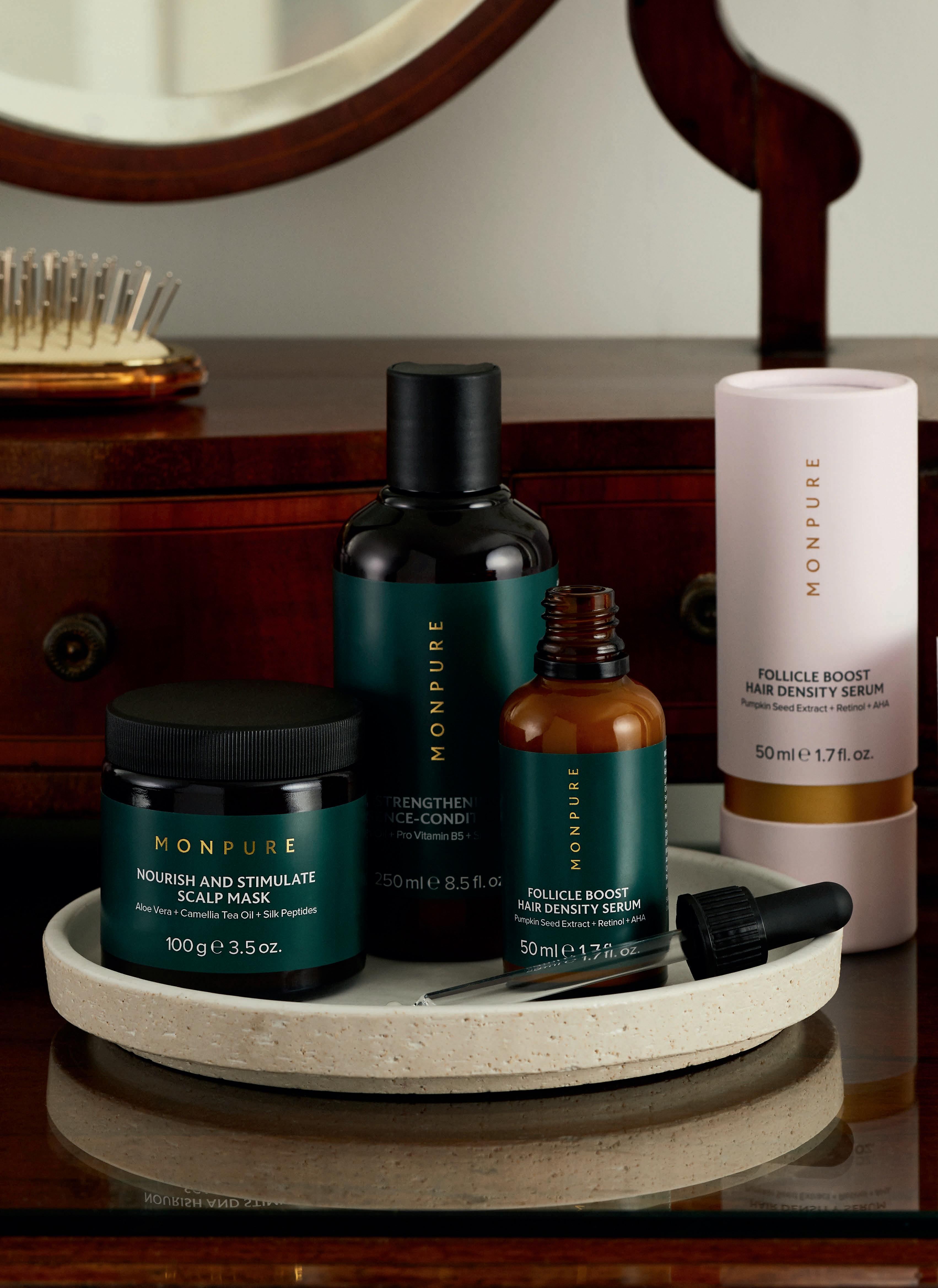
Monpure London is the world’s first dedicated scalp and hair health brand, designed to alleviate scalp discomfort and irritation, prevent hair thinning and promote stronger, healthier hair.
Our scientifically proven formulas are crafted with potent active ingredients such as Retinol, Silk Peptides, AHAs, BHAs, and Coenzyme Q10 to help create the optimum environment for healthy hair, by rebalancing the scalp, clearing blocked follicles, and strengthening and rebuilding strands at the root.
It’s a concept we acknowledge but cannot define. Cultural historian, Dr Seán Williams, considers the provenance of an iconic travel concept
For historians, the ‘Grand Tour’, so named by Richard Lassels in his book, The Voyage of Italy, published in 1670, is a broad and wide-ranging term. But it occupies a surprisingly static place in the popular imagination.
In the 17th and especially the 18th centuries, so the story goes, aristocratic young Englishmen needed to learn about the real world after school or university.
They went to Europe, first to Paris, where they were joined by Dutch or Scandinavian nobility, as well as gentlemen from the German
petty principalities. After making a Grand Tour of France, they crossed the Alps or Mediterranean for the ‘Giro of Italy’. There, they saw treasures of the Renaissance and antiquity, architecture and art. They observed the workings of local politics and trade. They enjoyed fine food – and the pleasures of the flesh. On the way home, often after years, some ventured through Greece, Austria, Germany and the Low Countries. They brought back souvenirs, now preserved in London’s museums, along with grand designs for
English estates such as Stourhead, with its Palladian house and garden grottoes (the National Trust property is a scenic country drive from Chewton Glen). This is how we imagine lads of old on tour: an early-modern gap jah.
In fact, the grand tourists and their entourages were a mixed lot. The princes, according to an article from the German periodical Der Teutsche Merkur in 1784, travelled as ‘private citizens’, incognito, creeping from their thrones as darkness fell and riding into the night. They could

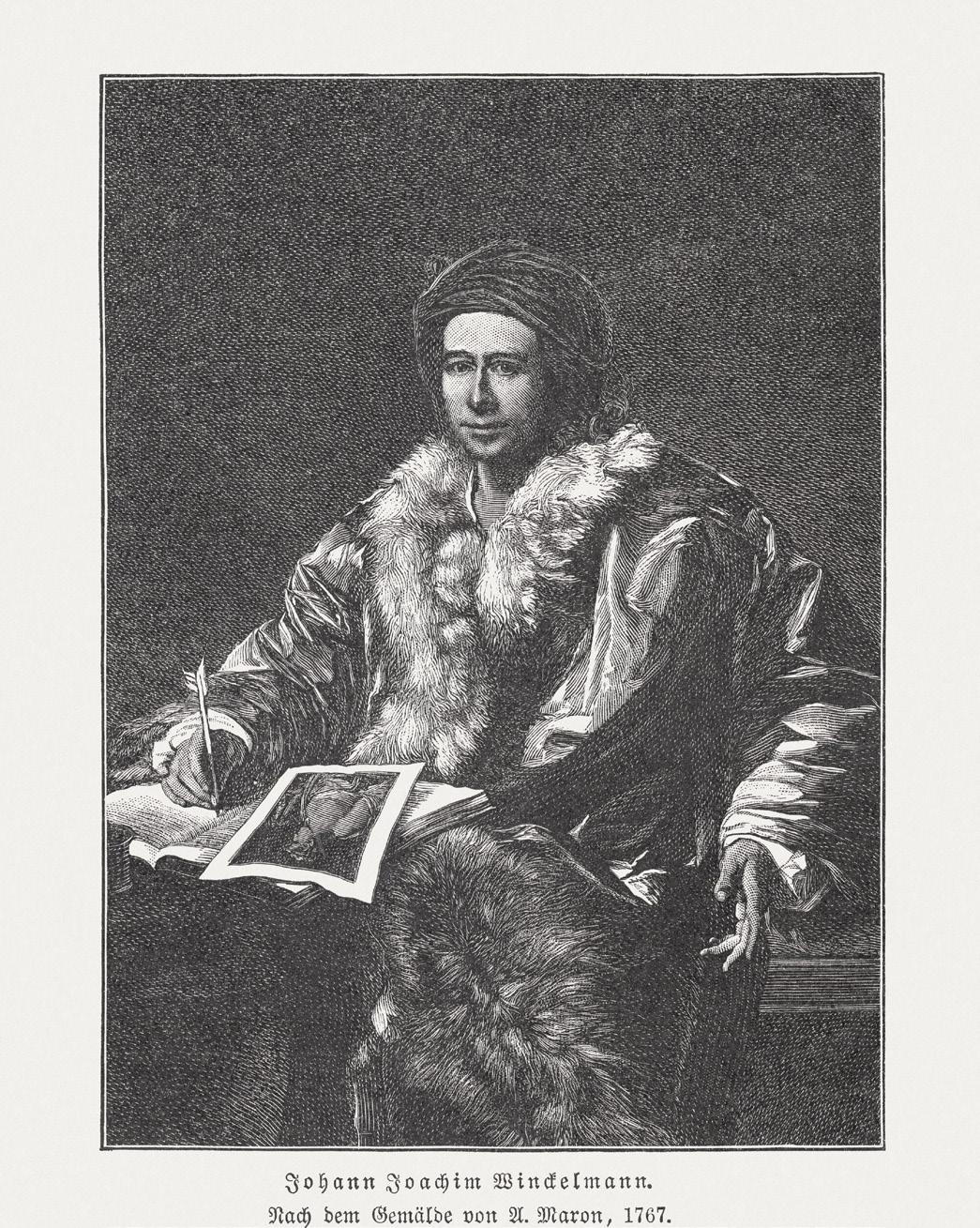

“In the passage of time, these tourist spots gradually shifted to be understood as topographies of the modern self”
be indistinguishable from the aspiring administrators and merchants among the middle classes, for whom the Grand Tour became prescribed professional training. All these men – not to mention the many women accompanying their brothers, say, or new spouses, or the widows who went alone – made the Grand Tour into what we’d call a maxi moon today. Then there were servants in tow. Thus, a desire for travel was driven from all directions: above, below and from a burgeoning bourgeois middle.
The German article notes that Gelehrte, or scholars, also joined, taking shorter trips and sharing their worldly wisdom to recoup costs. If that’s the Enlightenment, yours truly is a textbook example.
Although we might assume grandeur, the journeys themselves
were arduous. The crossing to Calais depended on the tides and weather; travellers were taken ashore in small boats, perhaps without paperwork (a passport might be arranged in Versailles).
Carriages were bumpy and road accidents common. Mountains could hide criminals or simply be a frightening sight.
Even the father of art history, Johann Winckelmann, whose writings inspired the itineraries of grand tourists, was scared by the Alps in 1768 and returned to Italy, only to be murdered in his hotel room in Trieste. When the German poet, Goethe, visited Rome a few decades later, he said there was more than one homicide a week in the city. He thought of poor Winckelmann whenever he heard news of another case. While such stories
made sensational headlines, the Grand Tour was a luxury that could risk life and limb.
Italy, however, was not to be missed. Rome was visited for a foundation course in the classics – and on the rediscovery of Pompeii in 1748, so too was Naples. Florence was the capital of Renaissance art, whereas Venice was the city for carnival. And sin. With gambling, sex workers and more theatres than anywhere else in Italy, people came for a good time. But La Serenissima was also a lesson in political stability and independence –until it fell (to Napoleon).
In the passage of time, these tourist spots gradually shifted to be understood as topographies of the modern self. Travel was soon about subjectivity. The grand tourists became ‘sentimental’ and
‘romantic’. Rome and Sicily became metaphors for personal experience layered on top of history. In the 18th century, the historian Edward Gibbon wrote of where great Roman emperors had stood by recalling standing there himself. By the 20th, American scholar of the Renaissance, Bernard Berenson, returned to Sicily after the Second World War and built a picture of the place –not just through art history, but also from his own memories as a ‘passionate sightseer’.
We look at the long history of the Grand Tour through rose-tinted glasses. Fixed in our minds as the aristocratic journey of young men, we think of grand touring as somehow simple. The experiences were supposedly authentic. They weren’t nostalgic and recreated, or so we tell ourselves. When I lived in Venice last year, I had an apartment on the Grand Canal. As I looked out of my window on to a gondolier’s pontoon each morning, there was a constant stream of couples taking selfies of their unique romantic moment. But such spontaneous, genuine joy on repeat was always framed by the same shot and enacted with a limited repertoire of poses. It would be easy to write off this tourism as some kind of fall from grace: the kitsch version of good old taste. But that is not quite true. In the age of the Grand Tour,

travellers came to Venice because of Canaletto’s painted scenes, bought and reproduced back home. Our perspective on Venice has been shaped by the media for three centuries and counting. What we imagine to have been the Grand Tour is really a figure of speech that distinguishes travellers from tourists. The Grand Tour is a proxy for luxurious, edifying and adventurous travel. The grand tourists of the 18th century climbed Mount Vesuvius with fire in their bellies, so our story goes; dilettantish but determined, they scribbled in their notebooks with scientific zeal.

Then, with the eruption of the tourist trade in the late 19th century, Thomas Cook’s customers went up the volcano on a funicular railway. Then they cooled off with ice cream back at ground level. Though some might have expanded their horizons, we invoke the Grand Tour as the positive opposite of a perceived negative: mass tourism. History is not made up of homogenous stages, however. The past is not a journey that moves from one stop to the next. It happens without any planned destination, and ‘progress’ is the narrative we make out of it, which implies that certain aspects of the Grand Tour can live on today, in individual ways.
Mine is a carriage to Italy, but do not hold me responsible for your choices. Scholars and travel writers are notoriously unreliable, writing for a free ride or to pay a debt. As Lady Bulwer-Lytton wrote home in lament from the land where lemons grow: “Poets ought to be strangled for all the lies they have told of this country.”
Dr Seán Williams is a senior lecturer at the University of Sheffield and presents the podcast series Death in Trieste, available on BBC Sounds.

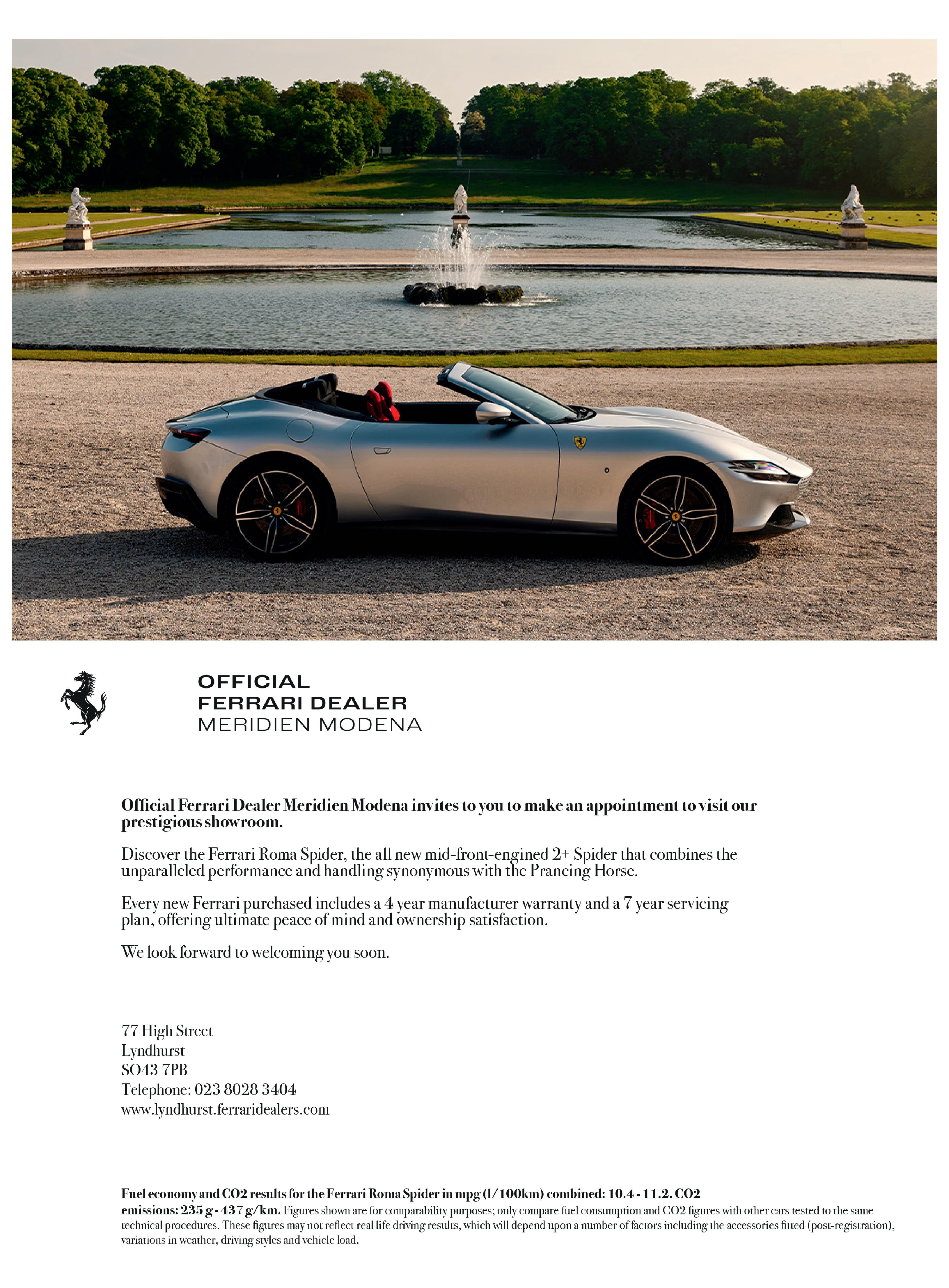

Every summer Britain’s greatest palace plays host to Salon Privé – the UK’s most prestigious motoring Concours event

Blenheim Palace, Woodstock, Oxfordshire. Designated UNESCO World Heritage Site, birthplace of Sir Winston Churchill, home to the 12th Duke of Marlborough… and since 2015, also home to one of the world’s greatest automotive gatherings – Salon Privé. For four days at the end of August, Blenheim’s exquisite south lawn welcomes a dizzying array of the greatest classic cars still in existence, in an assembly so rare it is without equal in the UK and is one of just a handful of comparable events worldwide. It’s a delightful twist that, although the motor car is a product of the modern age, the
concept of a Concours d’Elégance dates back to the 17th century, making it older than Blenheim Palace itself. Translated from the French as ‘competition of elegance’, the tradition began in the parks of Paris, where aristocrats paraded their opulent horse-drawn carriages during idle summer weekends, and it was a desire to recreate a sense of this exclusivity and ambiance that inspired the creation of Salon Privé nearly 20 years ago. Two enterprising brothers, Andrew and David Bagley, conceived the project, taking inspiration from the world’s finest automotive occasions.
iconicluxuryhotels.com

“We had seen the wonders of Monterey Week with Pebble Beach and The Quail, A Motorsports Gathering, Amelia Island, and of course, Concorso d’Eleganza Villa d’Este on the shores of Lake Como,” says Andrew. “We wanted to introduce something unique to the UK, and we launched Salon Privé at London’s Hurlingham Club.
Today, it sits alongside these events on the world stage, providing the UK with a Concours event to be proud of.”
The first years in London established the event’s unique DNA, but it did not initially include a Concours d’Elégance.
“We launched at The Hurlingham Club as it was a beautiful, central venue that had a history of hosting car events,” says David Bagley. “It was the perfect location to present a motor show as a garden party, not a general public exhibition. The location and design of the event enabled us to present it as a relaxing, social day out without the crowds and queues normally associated with the bigger shows. Initially, the event was comprised of automotive brands and luxury brands – the Concours d’Elégance evolved in year three as the idea of Pebble Beach started to come to fruition.”
After five years, Salon Privé outgrew the Hurlingham Club and relocated to Syon Park, where it flourished into the internationally renowned event it
is today. In 2015, it celebrated its 10th anniversary by making the permanent move to Blenheim, and last year, hosted more than 20,000 guests over four days.
“The event is always evolving,” says David. “The beauty of a car event is that there are always new classes and new entries. Our events are renowned for their luxury, experience and hospitality – these remain consistent, but the lawn self-renews every year.”
The tens of millions of pounds worth of automobile history that are drawn to Blenheim from all over the world are not about flaunting wealth, but about originality, authenticity and condition. Every vehicle is immaculate, to the point of perfection, and the standard demanded by Salon Privé exceeds that of any other event. It is the only professionally judged Concours in the country,
adjudicated by some of the most eminent and experienced names in the automotive industry –each representing the International Chief Judge Advisory Group (ICJAG).
“The ICJAG mission is to promote proper preservation and correct restoration of classic automobiles for the benefit of future generations,” says Nigel Matthews, ICJAG chairman and chief judge at Blenheim 2023.
“An important assist in this regard is serious Concours judging based on those three pillars of originality, authenticity and condition – while keeping in mind that cars are meant to be driven.”
The south lawn in 2023 amounted to automotive utopia. More than 70 historic vehicles were entered in the Concours itself, supported by more than 1,500 privately owned supercars, plus the latest new models from some of the world’s most prestigious automotive brands, including Ferrari, Aston Martin, Lamborghini, Rolls-Royce, McLaren, Bentley and Lotus. The Salon Privé ‘Yellow Collection’ featured more than £30m worth of modern classics united by their distinctive colour, while the 100th anniversary of the world’s oldest continuing motor race was honoured by a priceless collection of classic Le Mans racers.
It was always going to take an exceptional motor car to rise



above this storied field and claim the coveted Best of Show accolade, and so it proved when the judges awarded the top prize to a jaw-dropping 1937 Bugatti Type 57S by Corsica [see below]. But everywhere you looked, the Bugatti was flanked by barely believable examples of epochdefining design and engineering.
Among the many highlights was a 1951 Ferrari 212 Export by Vignale, originally owned by Prince Vittorio Massimo; a 1951 Bugatti Type 101 Cabriolet by Gangloff; an incredibly rare 1900 Bardon Type A Tonneau; a thoroughly one-off 1952 Hansgen Jaguar XK120; and a 1929 RollsRoyce Phantom Sedanca de Ville by Windovers, a car owned by Winston Churchill’s cousin, the 10th Duke of Marlborough.

The event’s final day, known as Supercar Saturday, is a public day attracting a huge gathering of owners’ clubs, with many competing for the Salon Privé Club Trophy recognising the most exceptional owners’ club car. The 2023 winner was a beautiful 1964 Jaguar E-type S1 3.8 OTS.
This seemingly irresistible blend of automotive nirvana, both past and future, allied to the presence of more than 30 luxury brands and copious premium hospitality, has steadily distilled the Salon Privé mix into a thoroughbred concept. A second event, Salon Privé London, held at the Royal Hospital Chelsea in April, was added in 2022, introducing another innovative concept, the Concours de Vente, in which the cars are not just judged but also
for sale. But despite their vision and flair for ideas, the Bagleys have no plans for a revolution.
“When we launched Salon Privé, there was only Goodwood, Silverstone Classic and the British Motor Show in the UK,” says David. “There wasn’t a UK-based Concours at that time. Others have followed, but we have always stuck to our original ethos of quality over quantity – we’re an event that is as much about the fine dining as it is about the cars on display. We’ll continue to grow slowly, building our brand and retaining a club-like ambiance. We have two of the best venues in the UK and we have momentum, evolution, loyalty towards the brand and a solid track record.” Salon Privé returns to Blenheim from 28-31 August 2024
Had Lord Anthony Bamford brought one of the earthmovers for which his company, JCB, is renowned, it could hardly have created a bigger stir at Blenheim than his 1937 Bugatti Type 57S by Corsica. This classic was the world’s only remaining ‘hidden’ prewar Type 57S when it was discovered in 2020. It was fitting that Lord Bamford bought the car, as it had been owned by former JCB engineer Bill Turnbull, who had begun restoring it on his retirement from the company in 1995. The car is nicknamed ‘Dulcie’, due to its registration: DUL 351. “This Bugatti, thought to be one of the three Le Mans-winning Tanks, hadn’t been driven for over half a century before being restored by Clark & Carter Restorations,” says Andrew Bagley. “Raced at Montlhéry, reaching top speeds of 111mph, the car is all original and one of the world’s greatest prewar sports racers.”



For 70 years, Relais & Châteaux has championed diverse cuisine, impeccable hospitality, and increasingly, sustainability. On the occasion of R&C’s platinum anniversary, we talk to its president, Laurent Gardinier
In 1954, Marcel Tilloy, owner of the ‘hostellerie’ La Cardinale, had the idea of showcasing eight properties between Paris and Nice, “which offered impeccable hospitality, were elegantly appointed with all modern conveniences and had a good restaurant.” United under the slogan ‘La Route du Bonheur’, these properties wrote the first chapter of the Relais & Châteaux story.
Seventy years later, as Laurent Gardinier celebrates his first year as president, he reflects on that heritage and looks to the future.
What was unique about R&C in 1954 – and today?
Despite being comprised of 580 hotels, all members are united by the same movement. Our values are what really make us stand out. We are committed to preserving
the diversity of cuisines, and to that end, our members must have a sense of place. That means being in keeping with their environment from an architectural and design standpoint, as well as looking at their gastronomic offering. Additionally, our board members are elected, and the association is not for profit – a key differentiator.
Has sustainability become a more important part of the membership mix?
Sustainability is a key part of our DNA. With an association of our size, operating in 65 countries around the world, we know sustainability means different things to different regions, whether that is a city hotel versus one in a jungle; a property in Japan or one in Costa Rica. We see it as our role to help guide our members to become more
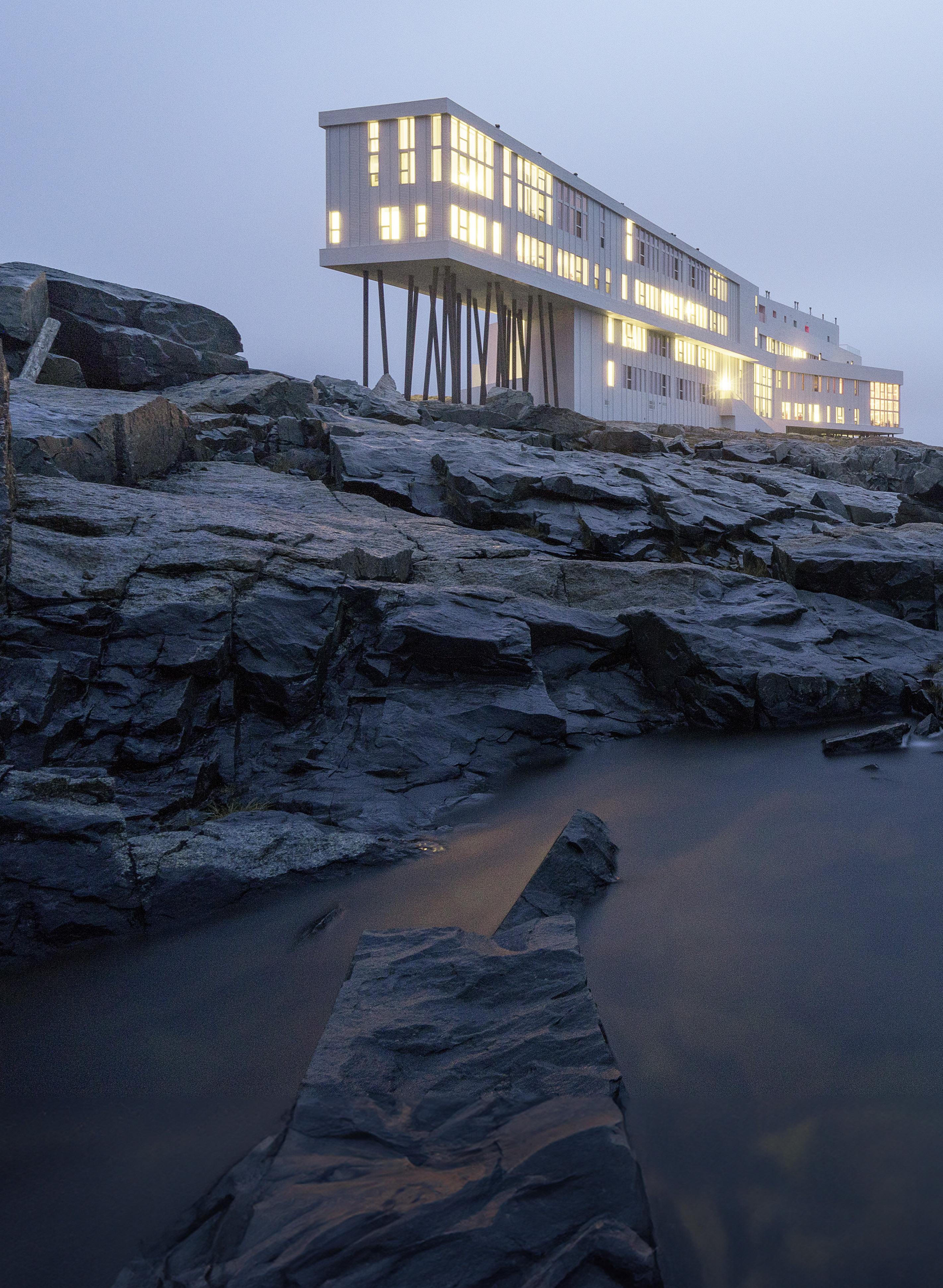
sustainable, and that is a crucial part of our philosophy. Last year, we published our first ever sustainability report, which will now be annual. The report sets ambitious goals for all members. Sustainability is one of hospitality’s biggest challenges, so it is our responsibility to lead positive change. Additionally, each year we host two major ethical cuisine campaigns: Food For Change and World Oceans Day.
Can you expand on the importance of Food For Change and the Slow Food movement?
The year 2023 was our seventh of Food For Change, in partnership with Slow Food. The campaign aims to protect local biodiversity and promote sustainable food consumption in line with our commitment to UNESCO in 2014
“Relais & Châteaux has set itself a mission: preserve the diversity of the cuisines of the world, share the passion for the good and the beautiful and work together to create a more humane world”
to ‘preserve the diversity of cuisines and hospitality so that future generations can know and share in their richness’. In the past, themes have included the rediscovery and protection of near-extinct local products and regenerative farming. Climate change and the loss of biodiversity are accelerating, and food systems and supply are responsible for 30 per cent of all greenhouse gas emissions. With 580 members and over 800 chefs, we have strength in numbers to call for action.
What’s the role and influence of members and guests in driving R&C forward?
Against the backdrop of the adverse evolution of dietary practices and the standardisation of cuisines around the world, Relais & Châteaux has set itself a mission: preserve the diversity of the
cuisines of the world, share the passion for the good and the beautiful and work together to create a more humane world. These commitments have resulted from the brainstorming of the World Culinary Council of Relais & Châteaux, set up in 2013.
What plans do you have for celebrating your 70th anniversary?
The first six months of 2024 will be punctuated with local celebrations throughout our network of members. Then, in November, we will host our annual Congress in Paris and share the updated manifesto that will express our values and commitment to ‘a better world through cuisine and hospitality.’ The year also marks the 10th anniversary of our manifesto being presented to UNESCO.

With the environment and sustainability in mind, how do you see the coming decade – can hospitality make a difference?
Yes. Through our organisational commitments, all our 580 members appreciate that hospitality must operate in harmony with the natural world. As an organisation, our shared, common goals are balanced with the flexibility of each property to respond according to its unique characteristics, needs and vulnerabilities – a structure that provides a remarkable opportunity for advancing sustainability at scale. Through a collective effort, the members can demonstrate that hospitality delivered in fine settings is not incompatible with exploring the world, exploring other cultures and protecting them.

Isabella Foulger and Kendra Leaver-Rylah, founders of digital magazine, The Wedding Edition , unveil the hottest trends shaping weddings in 2024 s the wedding landscape evolves, 2024 promises to be a year of unprecedented charm and innovation. Couples are rewriting the rules, embracing diverse trends, from the lavish three-day party to the intimate allure of micro weddings.
Sustainability takes centre stage for 2024, weaving through every aspect of the celebration. When it comes to fashion, there has been a huge shift, as brides are buying second-hand dresses and guests opt for chic rented outfits, both making a fashion statement and also reducing the environmental impact of fast fashion.
Nature takes pride of place in floral arrangements, with couples choosing locally sourced blooms that add a touch of freshness while diminishing the carbon footprint of the festivities.
Furthermore, the celebration raises a toast to eco-conscious choices with the rise of English sparkling wine, offering couples a sustainable and sophisticated fizz option. From attire to floral arrangements and drinks choices,
this year’s weddings are a harmonious blend of style and environmental responsibility. The table remains an artform for weddings in 2024, but with a cooler and more eco-conscious twist. Couples are opting to rent tableware, repurpose trees and take the table to new heights, in which the ‘tablescape’ moment, a wedding mainstay, is being upscaled like never before. Alice Wilkes, a top wedding planner and designer, adds her insight, stating, “Alternatives to traditional centrepieces allow for an impactful design that is styleworthy and intimate without the obvious floral touches.”
This shift towards sustainability extends to renting tableware, not just as a practical choice but a conscious one. Every detail of the table moment is meticulously curated to be Instagram-ready. The inclusion of personalised candles adds a touch of romance and individuality to each setting, ensuring that the tablescape becomes a visual feast that guests will not soon forget. In 2024, the artistry of the table goes beyond
aesthetics, embracing ecoconscious choices that resonate with the evolving themes of modern weddings.
Renowned UK florist, Fiona Fleur, shares her insights into floral trends, emphasising that next year will be all about a beautifully classic style with a timeless narrative. Imagine an ethereal white, floral composition, delving into a neutral palette of regal ivory, soft cream, classic white and vintage ecru, seamlessly flowing between each other. Fiona explores the depth within this palette for her couples, achieving a delicate yet impactful floral tone for weddings. This timeless colour scheme is brought to life through florals like the exquisite English rose, the soft, ruffled lisianthus and the iconic gypsophila, introducing a delicate and airy aesthetic. Fiona recommends next year should be all about using flowers instead of foliage to maintain an all-neutral design, creating an uninterrupted and majestic floral moment. In terms of colour and trends, her vision encapsulates the elegance of classic whites, offering a narrative that is both timeless and enchanting.
In the ever-evolving landscape of bridal fashion, the upcoming year promises a departure from tradition, as couples embrace a spectrum of bold and vibrant styles. The trendsetting mini dress, epitomised by Sophie Habboo’s memorable entrance at Chelsea Town Hall, establishes itself as a frontrunner to watch in 2024. Couples are now opting for outfits that not only reflect their unique personalities, but also challenge conventional norms, making powerful fashion statements. From chic suits to avant-garde jumpsuits and elegantly tailored separates, the choices are as diverse as the love stories they celebrate. Complementing these visionary ensembles are colourful shoes,

“In the ever-evolving landscape of bridal fashion, the upcoming year promises a departure from tradition, as couples embrace a spectrum of bold styles”
drawing inspiration from style icons such as Zeena Shah and setting the tone for a year of truly fashion-forward weddings.
When it comes to wedding venues in 2024, it is all about ‘destination weddings’ in the UK, with couples choosing locations such as Wilderness Reserve, Cowdray Estate and Deer Park, among other exclusive-use venues, where they can house their loved ones for a number of days. Couples are hosting welcome soirées the evening before, followed by relaxed barbecues and pool parties the next day, making the most of their celebrations. Alfresco ceremonies continue to thrive, with many opting to walk down the aisle in ancient walled gardens, woodland or blossoming orchards. At the other end of the spectrum, the
iconicluxuryhotels.com
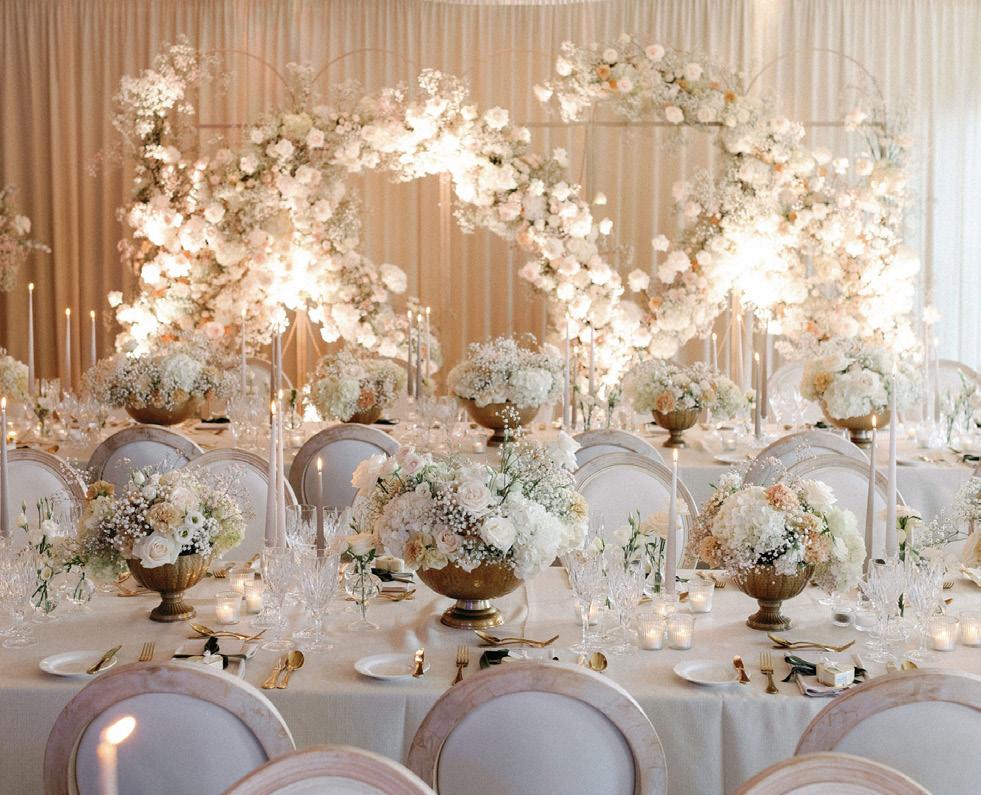
trend of intimate weddings is here to stay, especially in the capital, where couples are not following a traditional rulebook. Eloping is also catching on.
Destination weddings can offer breathtaking vistas and curated three-day itineraries full of out-of-the-norm experiences. The desire for something different in the wedding experience is also reflected in the rise of nontraditional venues. Alice Wilkes notes the trend, stating, “Hiring a non-traditional wedding venue such as a villa that all your friends and family can enjoy for an extended holiday is becoming more and more popular. Villas provide an intimate backdrop to celebrations, as you cannot accommodate as many people and they allow for a wedding that is personalised and bespoke.”
We also see the new year ushering in a wave of culinary innovation and creativity.


“Villas provide an intimate backdrop to celebrations, as you cannot accommodate as many people and they allow for a wedding that is personalised and bespoke”
Couples are using food as an artform, curating experiences that go beyond traditional wedding fayre. From personalised tasting menus to globally inspired dishes, weddings are becoming a showcase for diverse and exquisite culinary delights. The emphasis is on creating a memorable and Instagramworthy dining experience, with couples focusing on presentation, flavour and the use of fresh, high-quality ingredients.
Music is reaching new heights, with DJs, live bands and surprise performances. Expect the unexpected, from heartfelt notes to explosive fireworks, as couples craft truly unforgettable experiences for their guests.
Honeymoon trends are undergoing a transformative shift, too, as revealed by Turquoise Holiday Company founder, James Bell. In the post-pandemic era, couples are rewriting the script with an
iconicluxuryhotels.com
almost 30 per cent surge in average spending. Seeking a balance of luxury and value, attention is now turning to enchanting destinations such as South Africa, Thailand and Indonesia. Noteworthy is the departure from traditional favourites like the Maldives, with Mauritius rising as an alluring alternative. The South Pacific is capturing imaginations, inspiring the trend for perfect twin-centre honeymoons that combine, for example, the Cook Islands with Tahiti. In this nuanced time, modern honeymoon aspirations blend extravagance, romance, value and unique experiences. Amid the evolving landscape of 2024, the resounding sentiment is a desire for something different. From glamorous three-day events to gourmet pub takeovers and treehouse showstoppers, couples are seeking the unique and the personalised – a wedding like no other.





Lucie Pereyre de Nonancourt is the fourth generation at family-owned Champagne Laurent-Perrier. As the representative of its prestige cuvée, Grand Siècle, she explains how her grandfather’s vision to recreate ‘the perfect year’ in Champagne is achieved today.
What defines Laurent-Perrier as a pioneering spirit and an innovator in Champagne?
Going beyond rare vintages. Vintage in Champagne is usually synonymous with excellence for prestige cuvées. Contrarily, my grandfather, Bernard de Nonancourt, believed that only the art of blending or ‘assemblage’ can offer what nature can never provide, and that is the perfect year.
Tell us about the importance of recreating ‘the perfect year’
When my grandfather inherited the House from his mother in 1948, he held the ambition to position Laurent-Perrier at the highest level by making a
unique grande cuvée. He created Grand Siècle in 1959, to bring something new to the prestige cuvée category. By observing nature, it became apparent that a vintage, even when exceptional, could not reach the perfection he sought. In Champagne, each vintage is different, revealing various characteristics and styles. Through the ‘Art of Assemblage’, he realised that he could bring together these differing attributes and use their complementarity to create the perfection he dreamt of.
What makes Grand Siècle unique?
Time. Time is fundamental to the excellence of Grand Siècle, with a minimum of ten years of ageing

on lees before release. My grandfather believed that great wines showed tension and liveliness, yet still retained the aromatic complexity, depth and intensity that comes with age. Grand Siècle epitomises Laurent-Perrier’s pioneering approach to winemaking. To reach this expression, Grand Siècle is based on three core principles:
◆ It is a blend of three exceptional years that are complementary in character.
◆ A majority of Chardonnay supplemented by Pinot Noir, selected from a maximum of 11 of the 17 Chardonnay and Pinot Noir grands crus.
◆ It is aged on its lees in the cellars for more than ten years before being disgorged.
Put simply, it takes time to become an icon.
Enlighten us on the ‘Art of Assemblage’ –blending vintage years
Grand Siècle is only created when three vintages are deemed capable of realising this particular vision. Consequently, at Laurent-Perrier, we have declared just 30 vintages between 1950 and 2012, and for this reason, only 26 ‘iterations’ have been produced since the first Grand Siècle release in 1959.
Our latest release, Iteration No. 26 (an iteration is a number on the bottleneck to identify the specific cuvée) is a blend of Chardonnay (58%) and Pinot Noir (42%). Grapes are chosen from the vintages of 2012 (65%), 2008 (25%) and 2007 (10%), eight grands crus,
and aged on lees for ten years, culminating in its characteristic freshness, structure and complexity.
Why does Grand Siècle pair so well with food?
Because of its freshness and complexity, any highquality ingredients, such as premium-quality fish or white meat, are a perfect accompaniment – my grandfather aimed to create fresh, elegant Champagne with aromatic complexity and depth that comes with age, as displayed by the finest white wines. By choosing Chardonnay as the backbone and innovating in wine-making techniques, the desired character of Grand Siècle was achieved, thus making it a versatile guest at the dinner table.
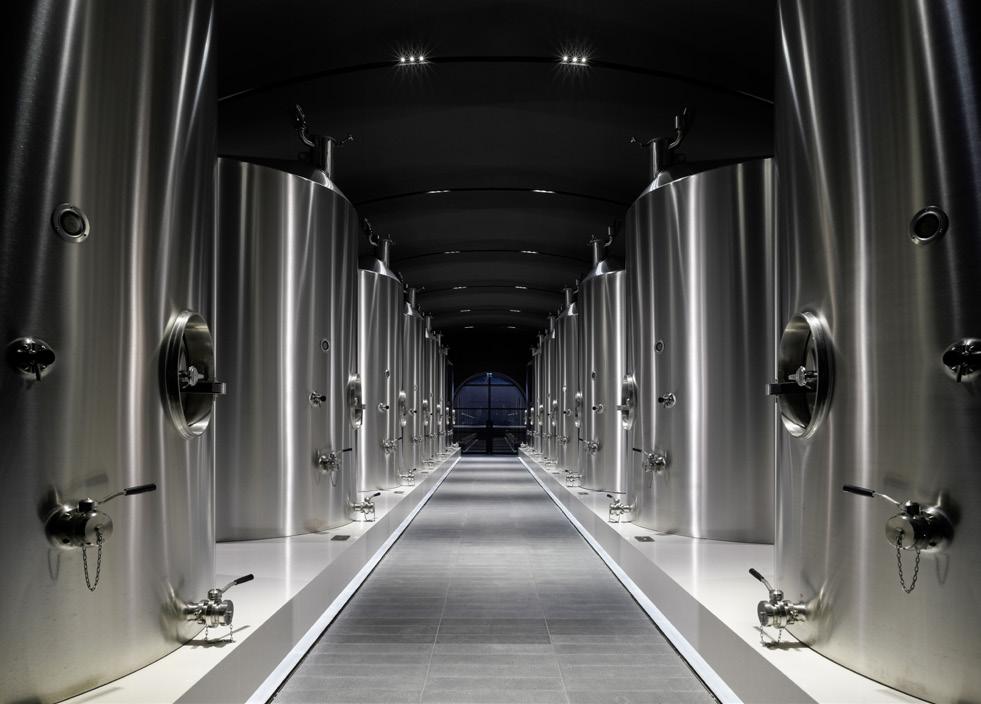
The National Gallery turns 200 in 2024 and plans a year-long celebration taking some iconic artworks out to the nation

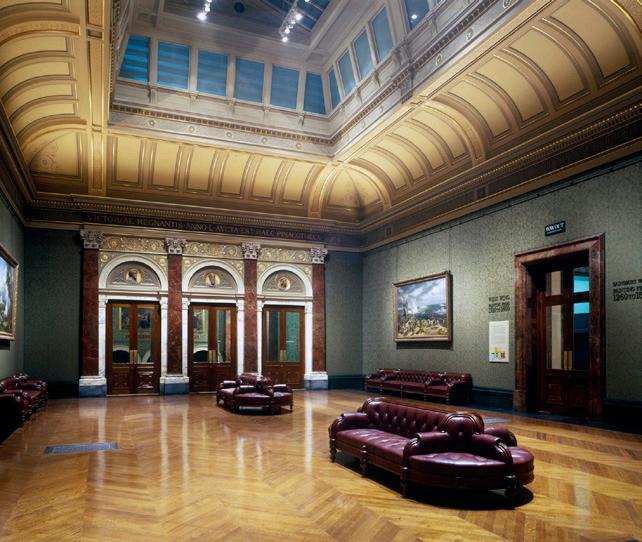

Drawing you in with the atmospheric allure of great art, The National Gallery is home to one of the greatest collections of paintings in the world. Within its halls you can journey through bygone eras – from the 13th to the early 20th centuries – as you embark on an exploration of art, masterpiece by masterpiece. But before residing in the remarkable building on the north side of Trafalgar Square in Westminster, the world-renowned art museum first made its mark on the nation’s cultural canvas in 1824, with humble foundations: the home of a banker and private art collector, John Julius Angerstein – with the first 38 paintings coming from his own collection.
Fast forward over the two centuries that have passed since, and the gallery’s world-class collection has grown considerably, evolving to include more than 2,300 works on display today.
To commemorate 200 years of bringing people and paintings together, the gallery has planned an ambitious year-long programme of events and exhibitions called NG200, starting on the anniversary date of 10 May 2024. Setting the tone for its third century, this festival of art, creativity and
imagination will extend from the gallery and Trafalgar Square to the nation and even the world, with a series of both in-person and virtual experiences. “It will be a once-in-a-generation chance to see your greatest paintings under one roof, with new connections made and new stories told,” says Jane Knowles, director of public engagement at The National Gallery.
A national treasure in itself, The National Gallery will form a National Treasures exhibition, in which 12 partnering museums and galleries across the UK will receive a treasured painting from the collection. Around this, they will programme exhibitions and events so that their local communities can learn more about the artwork. Two examples are Monet’s The Water-Lily Pond, which has inspired an exhibition and large-scale commission by contemporary artist Michaela Yearwood-Dan at York Art Gallery; and Caravaggio’s The Supper at Emmaus, the intensity and intimacy of which will be brought to life at Ulster Museum using natural light, with adjacent galleries showcasing 20thcentury and contemporary art, including time-based
iconicluxuryhotels.com

“IT WILL BE A ONCE-IN-A-GENERATION CHANCE TO SEE YOUR GREATEST PAINTINGS UNDER ONE ROOF, WITH NEW CONNECTIONS MADE AND NEW STORIES TOLD”
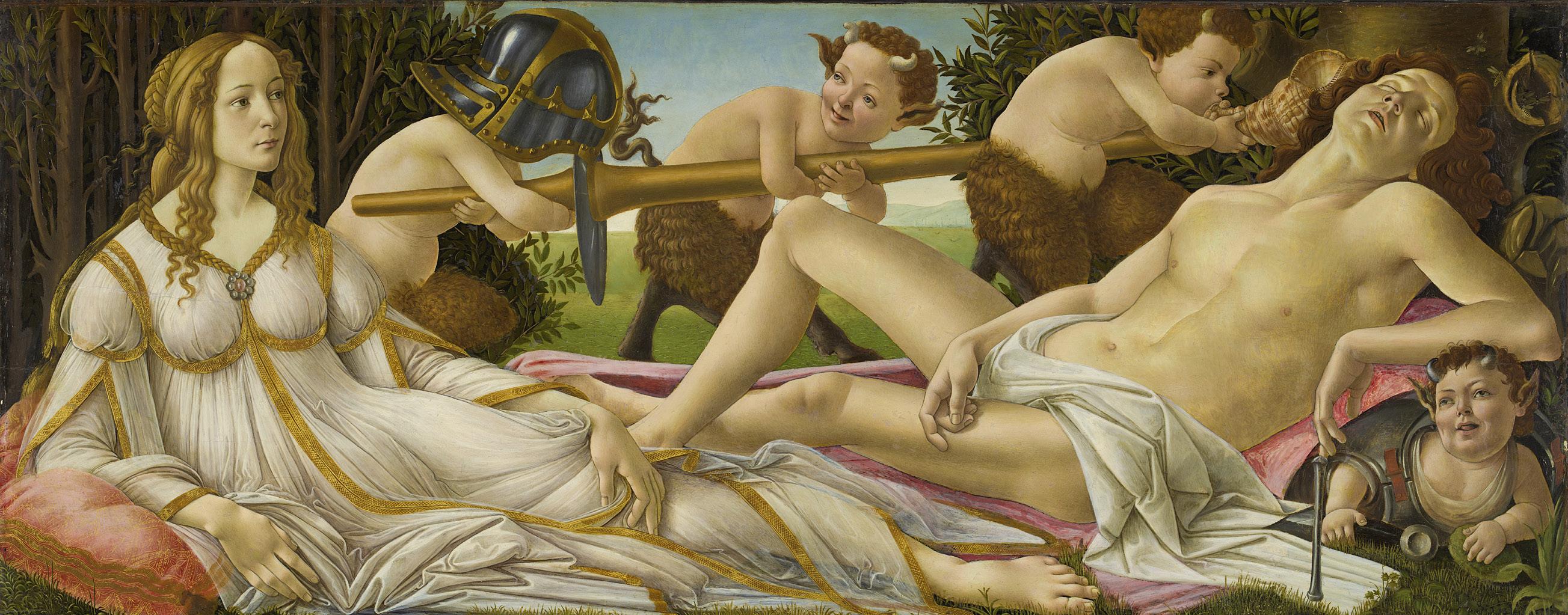
media by Cornelia Parker and Willie Doherty and sculpture by Dorothy Cross.
Poets and Lovers will also be on the programme, as this is the title of The National Gallery’s first ever major exhibition devoted to Vincent van Gogh.
Focusing on the artist’s imaginative transformations, it will feature more than 50 pieces, with loans from museums and private collections worldwide, as well as drawing on works in The National Gallery’s own collection – including significant pieces such as Van Gogh’s Chair and Long Grass with Butterflies. In an exploration of his creative process and sources of inspiration, the exhibition will dwell on the artist’s time spent in Arles and Saint-Rémy-de-Provence to investigate the fascinating practice of turning places he encountered into idealised spaces in his artworks.
As the gallery has grown over the years, so it has changed with the times, embracing a variety of artful mediums to create a collection with real breadth, ranging from medieval to digital. “Our collection may have a historic focus, but the gallery is not a time capsule – our interpretation and storytelling change along with the world around us,” says Knowles.
In line with the modern day, another celebratory event for the bicentenary is the gallery’s search for
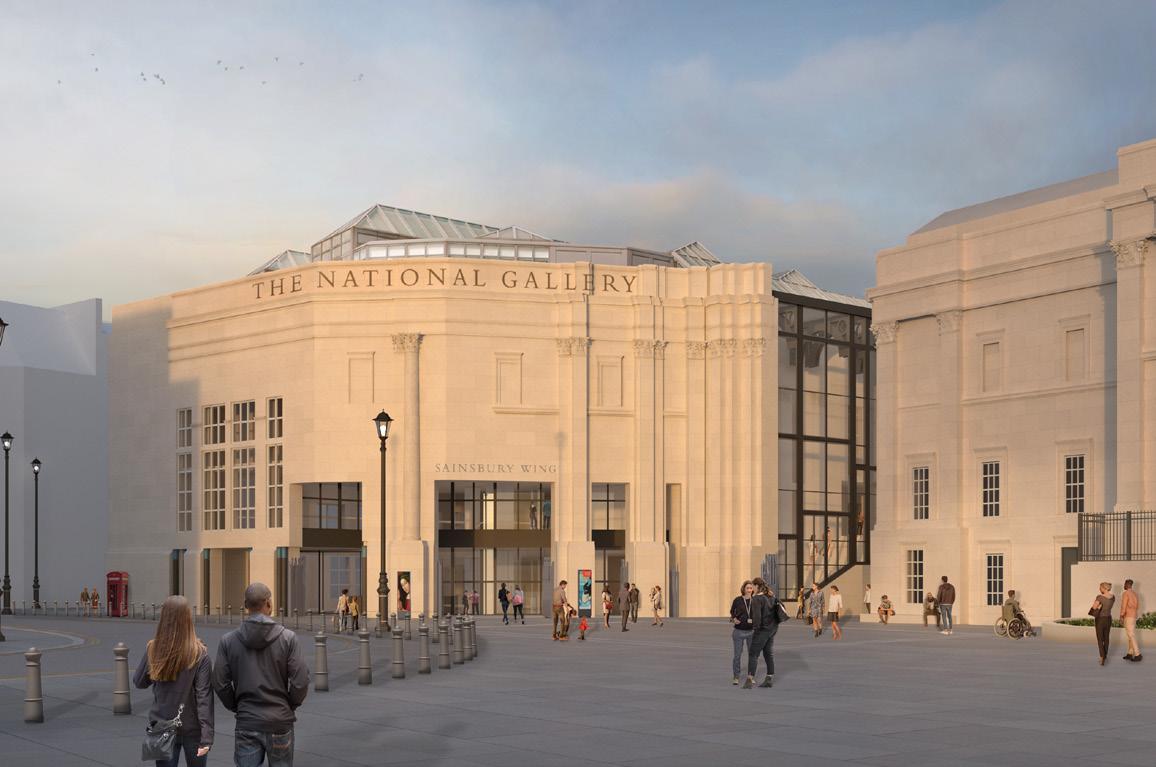

200 UK-based digital content creators to take its birthday worldwide. Through 200 Creators, the gallery wants to collaborate with a range of social media platforms, whose communities are interested in any number of topics that don’t need to be centred around art. “We are always looking for new ways to use our world-class collection and engage with audiences digitally,” says Lawrence Chiles, head of digital services at The National Gallery. “200 Creators is a fantastic way to see and share the creativity of the nation and we are excited about the range of responses to help celebrate The National Gallery and its collection. We have no doubt that they will capture imaginations all over the world.”
To round off its bicentenary year, The National Gallery has commissioned Turner Prize-winning artist Jeremy Deller to present an ambitious public art piece in Trafalgar Square, called The Triumph of Art The work will be developed in collaboration with four institutions across the UK – The Box in Plymouth, Mostyn in Llandudno, The Playhouse in Derry/ Londonderry and Duncan of Jordanstone College of Art & Design in Dundee – marking a significant expansion of The National Gallery’s partnership strategy. Indeed, it will be the gallery’s first time for a performing arts venue and first formal partnership with an art school.
“We couldn’t have found better partners to work with for this commission – they represent a fantastic combination of history, heritage and emerging talent,” says Emily Stone, project curator at The National Gallery. “We’re excited to bring together local communities with an unparalleled celebration in Trafalgar Square.”
Coinciding with these celebrations, the momentous National Gallery building in Trafalgar Square also secured resolution to grant planning permission from Westminster City Council for a suite of capital projects. With a key focus of the designs having been to futureproof the gallery for the next 200 years, the work – which includes tranforming the Grade I-listed Sainsbury Wing and the Pigott Education Centre, as well as creating a new Research Centre and Supporters’ House – is making the gallery more sustainable, inclusive and inspiring.
By improving the physical architecture of its buildings, broadening the spectrum of artwork it showcases and expanding communities’ perception of who can create and consume such iconic creations, The National Gallery is living up to its credentials as a dynamic institution. One thing that has remained static over its 200 years of life, however, is its unwavering commitment to care for its collection, enhance it and make it accessible to as many people as possible. “We are a gallery for the nation and we want to use this landmark birthday as a way to reaffirm what that has meant to us for the last 200 years and show that we mean to continue for the next 200,” says Knowles.
iconicluxuryhotels.com

“WE ARE A GALLERY FOR THE NATION AND WE WANT TO USE THIS LANDMARK BIRTHDAY AS A WAY TO REAFFIRM WHAT THAT HAS MEANT TO US FOR THE LAST 200 YEARS”


For the first time in history, the legendary Spirit of Ecstasy mascot looks down from the prow of an electric Rolls-Royce
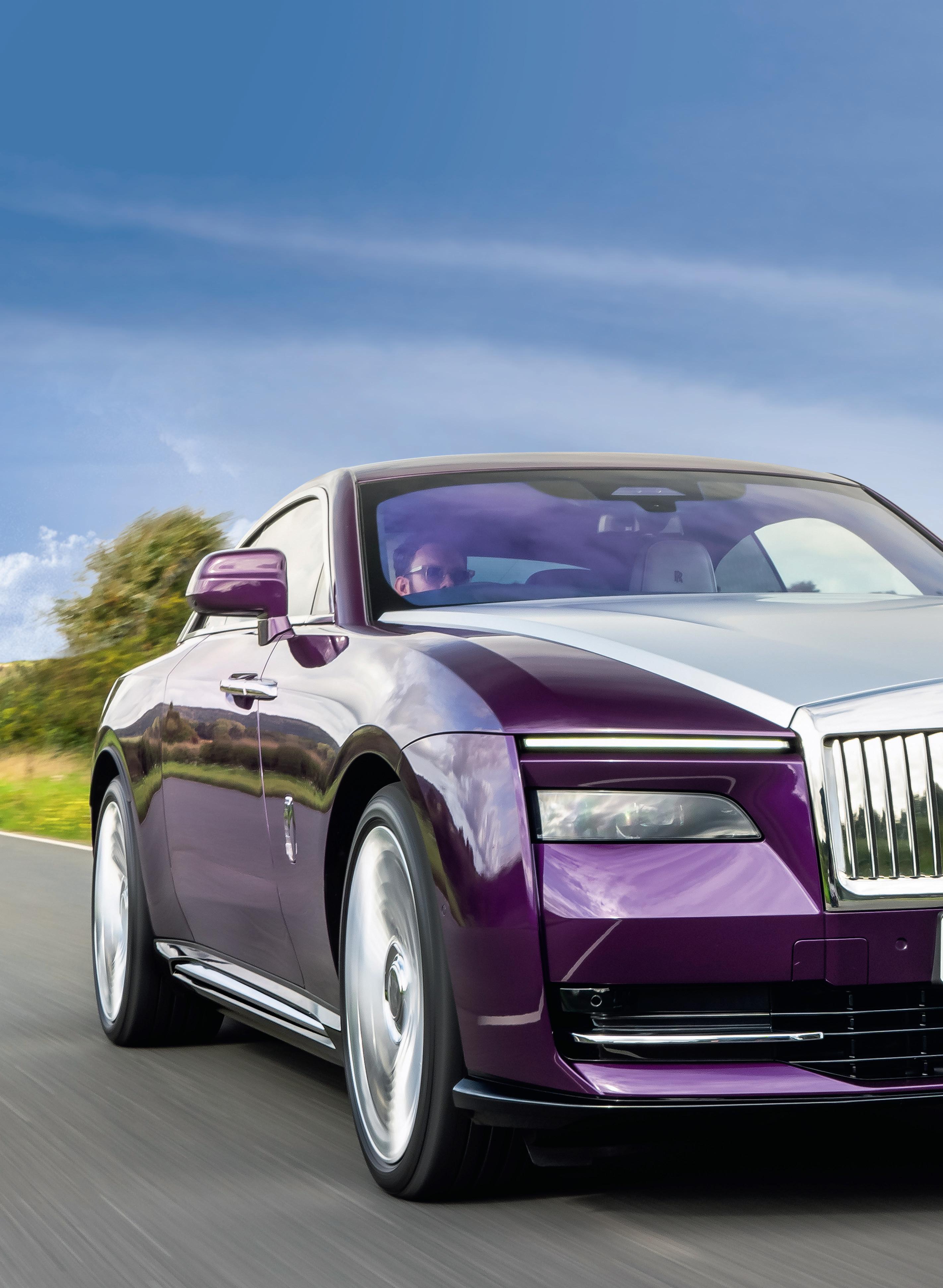
So Charles Rolls finally got his way. In the year 1900, six years before he formed his eponymous partnership with Henry Royce, Rolls prophesied an electric future for the motor car. “The electric car is perfectly noiseless and clean; there is no smell or vibration,” he said. “They should become very useful when fixed charging stations can be arranged.”
Following this prophetic statement, which was inspired by an encounter with an electric vehicle called the Columbia Electric Carriage, Charles spent the best part of a decade defining automotive luxury via another route – internal combustion.
Together with Royce, he introduced the world to a range
of incredibly smooth and refined automobiles powered by petrol engines with between two and six cylinders. These were the first cars to wear the Rolls-Royce badge that, over the ensuing century, became synonymous with superlative luxury motoring, under evocative names such as Ghost, Phantom, Wraith and Silver Cloud. Peerless examples of refinement though they were, however, there’s only so much serenity you can achieve with all those explosions going on under the bonnet.
So, for luxury car makers in particular, the dawn of the electric vehicle age could not come soon enough (although too late for Charles, alas, who died in 1910 –the first Brit to be killed in a

iconicluxuryhotels.com
powered plane crash). But while EV pioneers and early adopters quickly leapt in and made their mistakes, Rolls-Royce took its time, first introducing a fully electric Experimental Phantom concept named 102EX in 2011, followed in 2016 by the 103EX, both vehicles being landmarks on a journey to learn and finesse the technology. Finally, in 2021, the company announced that it had embarked on its first production battery limousine journey, bringing to bear its greatest engineers and innovators, its most exhaustive ever proving programme, 2.5 million kilometres of testing and years of fine-tuning to achieve what it believes to be the finest EV yet created: Spectre.
“REPLETE WITH HAUNTING MONIKER AND UNBURDENED BY ANY V12 RACKET, THE CAR STANDS FOR MORE THAN THE SUM OF ITS FANTASTIC PARTS”
Replete with haunting moniker and unburdened by any V12 racket, the car stands for more than the sum of its fantastic parts. It sounds rather benign to refer to it as a two-door coupé, but clear your mind if this description conjures any notions of a compact, lightweight sports car.
Spectre is 5.4m long and 2m wide (“There is no greater luxury than space”). It weighs very nearly three tonnes and, at 23in, the wheels are the biggest on a Rolls for 100 years. There may be only two doors, but they are each 1.5m wide and hinged at the rear (don’t worry, they open automatically). In every imaginable sense, Spectre is huge.
We can all agree it is no sports car, but even so, by traditional measures it is a high performer. It has a low drag profile of just 0.23cd, can accelerate to 60mph in 4.4 seconds and top 155mph, its four electric motors develop 577bhp (powered by BMW’s biggest-ever battery pack) and it has a range of 320 miles on one charge. The structural rigidity afforded by that 700kg lump of batteries (which alone weigh more than an Mk1 Ford Fiesta) frees up the suspension to major on refinement, while cancelling road noise.
Driving Spectre is not actually driving – it’s serenely progressing, with no sense of a road surface

involved. Sit on your sofa, fire up a computer driving sim and set it to proceed sedately yet at robust speed, and you’ll get the idea. Billy Connolly once said that when asked by a traffic cop if he was the driver of this vehicle, he replied, “Well, it’s automatic, but I have to be here.” Not anymore, he doesn’t. Or so it seems.
The car is loaded with digital technology, its ‘decentralised intelligence’ processing capabilities making it ‘Rolls-Royce in high definition’. Yet, a casual glance at the cockpit reveals no gaudy tech, no giant colour screens or pastiche fighter jet launch buttons. This is pure, distilled class.


“SPECTRE ANSWERS A CALL TO ELEVATE THE ELECTRIC CAR EXPERIENCE, BECAUSE IT IS ROLLSROYCE FIRST, ELECTRIC CAR SECOND”

“Spectre is perfectly in tune with the sensibilities of our time,” says outgoing Rolls-Royce CEO, Torsten Müller-Ötvös, whose magnum opus this car will surely go down as. “It is the Rolls-Royce that changes everything. It answers a call from the most discerning individuals in the world to elevate the electric car experience, because it is RollsRoyce first, electric car second. It’s the most perfect product that Rolls-Royce has ever produced.”
True to its lineage and in common with all Rolls-Royces, Spectre is made in England – at Goodwood, West Sussex. The company located here in 2003, building from scratch a facility as unique as the cars that would be crafted within it. Designed by architect Sir Nicholas Grimshaw, the factory is described as ‘a meeting place for visionary minds and audacious ideas, where innovation transcends limitation and motor cars metamorphose into dynamic works of art’.
The facility covers 42 acres of the South Downs National Park, yet it has been created with the lightest environmental touch possible. Eden Project architect Grimshaw was commissioned with this in mind, as even 20 years ago, Rolls-Royce envisioned
its zero-emissions future (all its cars will be EVs by 2030) and needed a factory to match.
Goodwood’s main building is set 2m below ground to blend with the landscape. Its eight-acre ‘living’ roof is camouflaged with sedum plants, which provide insulation and reduce rainwater run-off, while timber louvre panels activated by a roofmounted weather station minimise electricity demand by maximising natural light.
When BMW acquired RollsRoyce Motor Cars in 1998, it resolved to locate the business in a place as ‘quintessentially English’ as the brand itself. West Sussex, where Henry Royce lived out the final decades of his life, was the obvious choice.
“Perfection is about more than making the very best products,” says CEO Müller-Ötvös. “It is a culture, an attitude, a guiding philosophy. Our founding father Sir Henry Royce said, ‘Strive for perfection in everything you do. Take the best that exists and make it better.’ Spectre has been conceived within this culture.”
Torsten is retiring after 14 years at the helm, the longest-serving CEO for a century. Experience Spectre and you see why he might be leaving. His work here is done.
In 1910, sculptor Charles Sykes was commissioned to create a bonnet mascot for the RollsRoyce Silver Ghost of the 2nd Baron Montagu. Seeing the appeal of adopting such a mascot for every new model, Rolls MD Claude Johnson asked Sykes to refine his design to convey “speed with silence, absence of vibration, the mysterious harnessing of great energy and a beautiful living organism of great grace.”
Sykes adapted his original, which was modelled on Baron Montagu’s mistress, Eleanor Velasco Thornton, calling it
The Spirit of Ecstasy (aka Flying Lady). Fittingly, Spectre gets a new, more aerodynamic version.
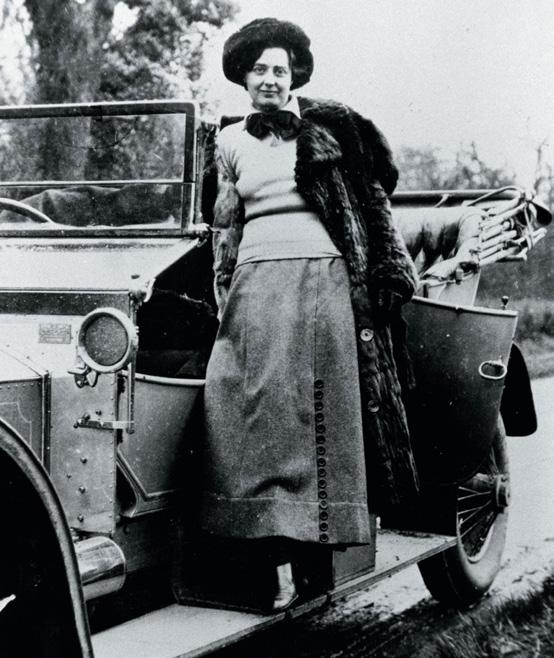
With racehorse prices rocketing, some owners have acquired horses in sports such as eventing, showjumping and showing. Lucy Higginson finds out more
A need for speed can take many forms, turning those who feel it into petrolheads, snow junkies or — most expensively of all, perhaps — horse owners. It is a small step from the saddle to holding the bridle of a horse so superbly bred, fast and athletic that in the hands of a professional jockey, it may take you to historic venues such as Ascot, Cheltenham or even Burghley or Hickstead.
With racehorse prices hotter than ever, there is a growing trend for diversifying into other forms of equestrian ownership. While the love of the horse and thrill of competition is very much the same, the venue, cost and owner experience are often quite different, as Swiss horse lover Barbara Keller can attest. Her lifelong love of racing has led to racehorse ownership in multiple countries and prolific Group One winners, such as her fabulously consistent filly, Odeliz.
More recently, she has become involved in eventing, too, as a breeder of coloured horses at her stunning Hasenacher Stud near Zurich. Three of her progeny now event (involving dressage, cross country and showjumping) with Australian Olympic medallist Andrew Hoy, whose yard is in

Lincolnshire, and she has other horses showjumping in Belgium.
“Buying racehorses that have already won or been placed has become very difficult, with new money coming into the sport from the Middle East and America,” Barbara explains.
Eventing allows her to channel her competitive instincts in another direction, even if she finds events like the legendary Burghley Horse Trials nerveracking to watch.
“For me, it is the King’s discipline,” she says, “and like cricket, it lasts forever, running over three days. You are very involved as the owner in eventing, walking the horses, bringing them
water… But in both disciplines, I am immensely proud of my horses. Their achievements bring enormous satisfaction.”
Barbara is based in Switzerland, so it is not easy to attend competitions. Some horse trials run livestreams, and Andrew Hoy often wears a hat cam to share his view of a course, but racing is streets ahead on coverage. “You can more or less watch horses race on the moon!” says Barbara.
Jump racing enthusiast Liz Prowting and her estate manager Hannah Bishop have also scaled back their racing interests in response to soaring horse prices, with just three in training while various homebred horses mature in the paddocks. Their string also suffered several injuries. “Racing was breaking Mrs P’s heart,” says Hannah. “So I took her back to her roots by buying a hunter — a sport she used to live and breathe.”
Hannah noticed a stunning grey show hunter, Bloomfield Eloquence — who has since been crowned Middleweight Hunter of the Year at October’s Horse of the Year Show — competing with professional producer Loraine Homer, and was delighted when Loraine agreed to continue competing the horse with Liz as
“For me, it is the King’s discipline, and like cricket, it lasts forever, running over three days”
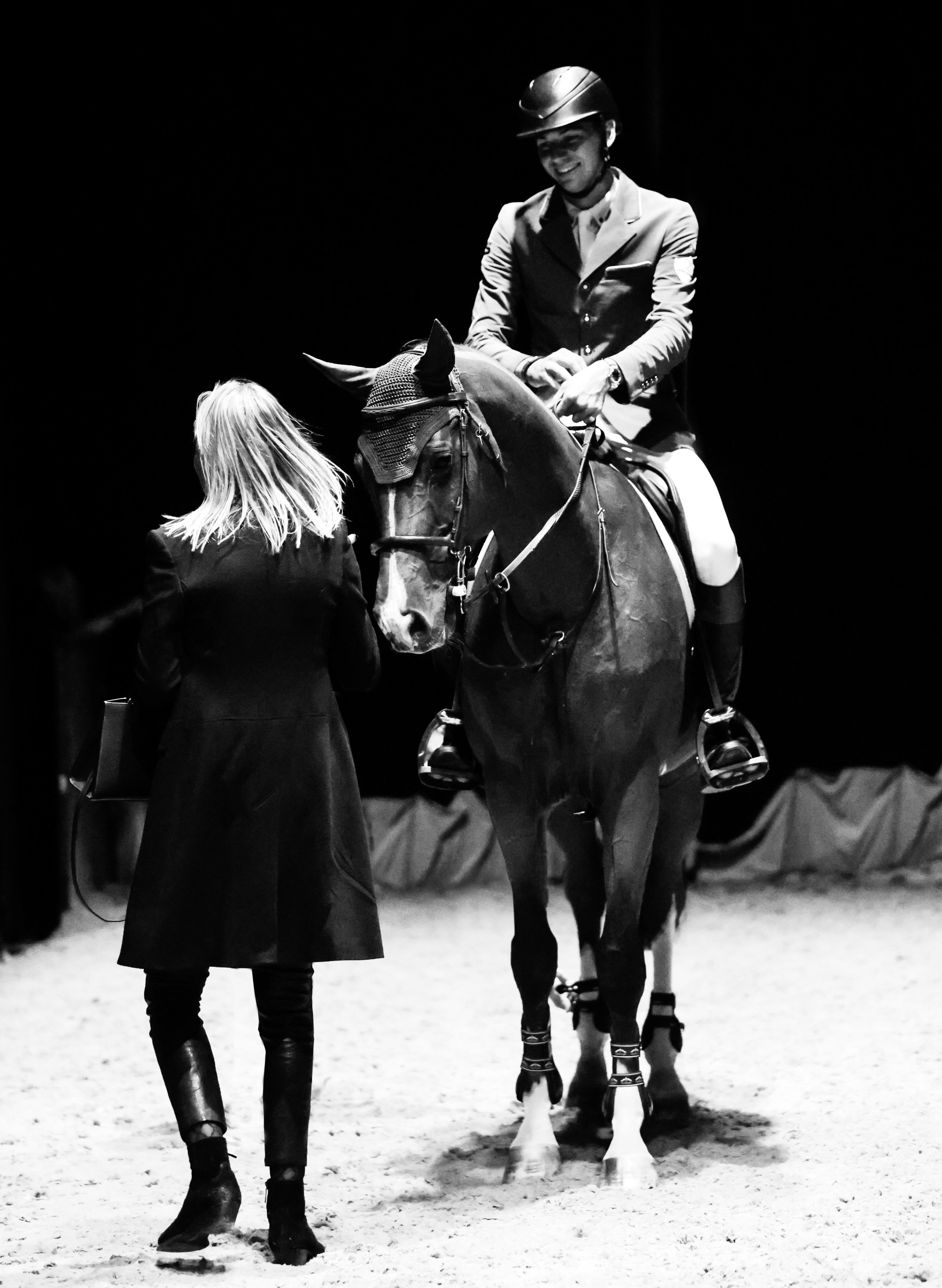
owner. “It has given us a lot of fun days out and enabled Mrs P to rekindle some old friendships,” explains Hannah.
Top horse shows like Hickstead’s Royal International and Royal Windsor, just a few miles from Cliveden — which the late Queen Elizabeth hosted and never once missed during her lifetime — offer excellent hospitality, and a lightweight and heavyweight hunter — Bloomfield President and Distinction — have since joined Liz’s hunter string.
“Though showing is a more subjective sport, you get just as nervous and excited as if you have a horse running in a race,” says Hannah.
Barbara Hester is another hunting lady — she’s a former Master of the Warwickshire Hunt — and successful racehorse owner who realised during the Covid pandemic how much she enjoyed showjumping too. Now she has horses with British team rider Joe Stockdale, and competes in the sport herself at lower levels,
besides having a smaller number of racehorses in training.
“I love everything about racing, but you do not have the same relationship with your horses as an owner,” she reflects. “A day at the races is unbelievably exciting, but showjumping is more of a lifestyle. Owners’ passes allow you into the stables and shows like Saut Hermès in Paris, La Baule and so on last for four days, and your horse may jump three times. I somehow feel closer to the sport and it helps that I also compete in it, albeit at a very amateur level.”
Showjumping shows also run in some incredibly glamorous locations, and Barbara also points out that for a similar investment to funding a racehorse, you may even find yourself with a horse on a British Nations Cup team. “It is a privilege to go to some of these shows and it does not get better than owning a showjumper competing for Team GB with the support of physios, vets and team manager — there is a really supportive network for owners.”
“It is a privilege to go to some of these shows and it doesn’t get better than owning a showjumper competing for Team GB”

The rewards of horse ownership are rarely financial, but with good advice and a sprinkling of luck, it can pay. Barbara Hester has enjoyed 30 per cent win rates in racing, and while untested horses are “cheaper but chancier”, in showjumping this is less of a gamble. Also, there are more uses for a showjumper that doesn’t make the top than for a racehorse. While there is substantial prize money in top-flight showjumping, that in eventing is negligible until you reach the dizzy heights of Badminton or Burghley (where the winner receives £110,000). Racehorse and show horse owner Liz Prowting has seen all her show horses improve in value. “Our racehorses rarely do that,” says estate manager Hannah Bishop. Running show horses is cheaper, she says, though costs such as stabling at shows are not included in the entry fee.
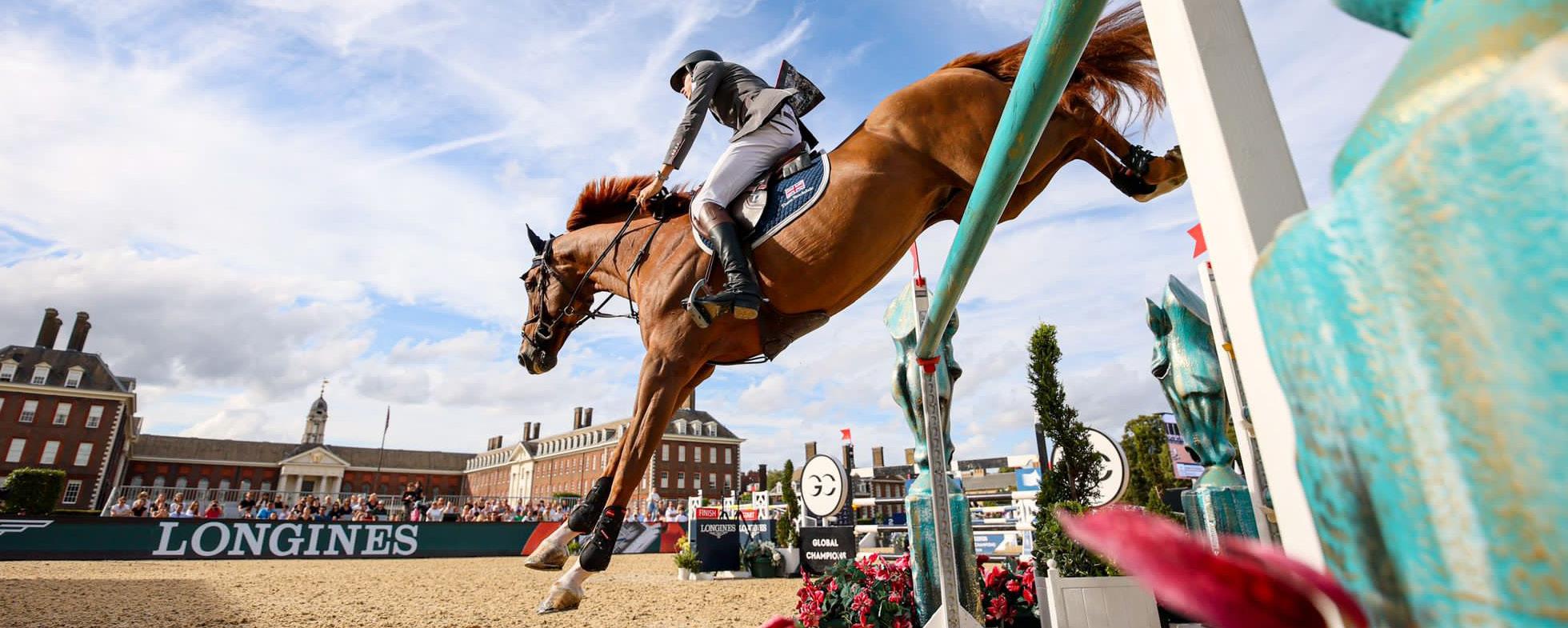


Iconic Luxury Hotels is driving a sustainability revolution that is essential to our business, our guests and the planet. How are we measuring up?
The need to be environmentally and socially responsible is the very essence of Iconic Luxury Hotels – as core to our DNA as our desire to provide exquisite hospitality. We demand it of ourselves every bit as much as our guests expect it of us. That is why our director of purchasing, Stuart van Dam, set us on a course to place ethical and sustainability issues at the forefront of our decision making.
In order to make a real difference, good intentions are not enough, so Stuart enlisted the help of The Sustainability Group, a leading specialist in ESG management to help with the crucial reality check every well-meaning initiative needs… measurement.
“When Stuart first approached us, his goal was to understand the current [environmental] impact of the ILH Group but, more importantly, start to improve it,” says Alexandra Smith, co-founder of The Sustainability Group. “He recognised the business’s responsibility across social and environmental sustainability themes, as well as the regulatory needs of the group and increased guest expectations regarding sustainability. He wanted to provide help and support to all the teams throughout the organisation to have the confidence and accountability to make impactful and positive changes to the business.”
iconicluxuryhotels.com


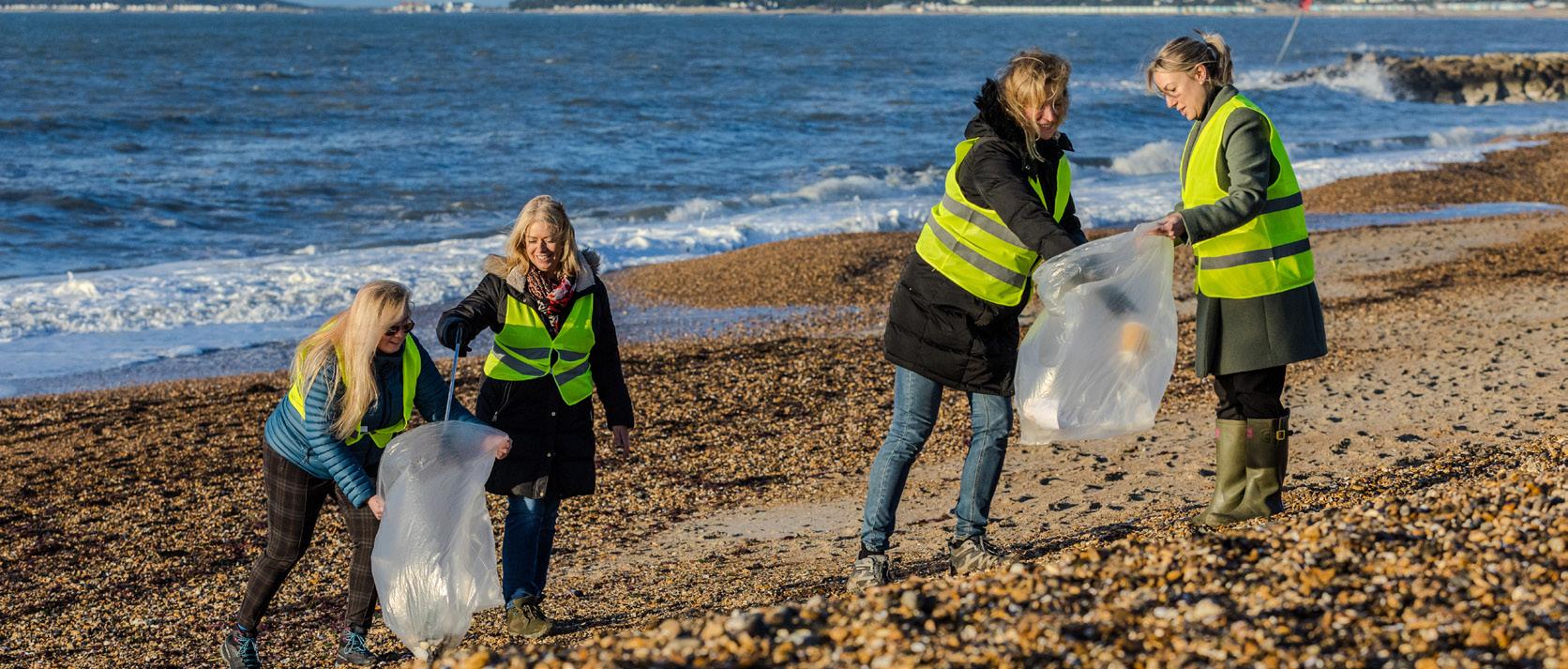
The Sustainability Group has developed a reporting platform, FuturePlus, that helps organisations to understand, measure evidence, improve and report their sustainability and social impact across a comprehensive review of an organisation’s sustainability, and measures indicators across five themes – climate, diversity and inclusion, economic, social and environmental. “Uniquely, we not only verify the actions that an organisation has taken, but we also quantify an organisation’s intent across the five themes, providing them with an ‘actual’ and ‘ambition’ score, a sustainability roadmap, and access to auto reporting,” says Alexandra. “We then track and support their progress as they improve.
“Our advisers play a vital role in that process, helping the individual teams and sites by providing guidance and expertise, and it sparked incredible discussions. Following those initial conversations with Stuart, we brought together the whole cross-property ILH executive team to review the FuturePlus assessment and discuss nuanced obstacles and opportunities. From this, we could gauge which issues were most relevant to the organisation. The individual sites’ responses formed the basis of their current sustainability score (actual score), as well as their intent (ambition score), our recommended ambitions, and what became ILH’s three-year holistic sustainability roadmap.
“The roadmap is key. It helps engage and inspire the teams and fosters a sense of accomplishment. Each
day, thousands of decisions are being made across each hotel, department and team, and each decision maker has to consider their own personal values and Iconic’s sustainability mission when making each choice. For Iconic’s sustainability journey to be a success and align with its values, objectives and broader business strategy, we must understand the needs of the brand, the employees and their guests.”
Guests can feel the tangible benefit, too. The Internal Sustainability Programme is no academic exercise. “Some of our indicators encourage businesses to assess areas that will directly impact guests, such as indoor and outdoor air quality, and the impact of their products and services on the wellbeing of guests and employees,” says Alexandra. “For other indicators,
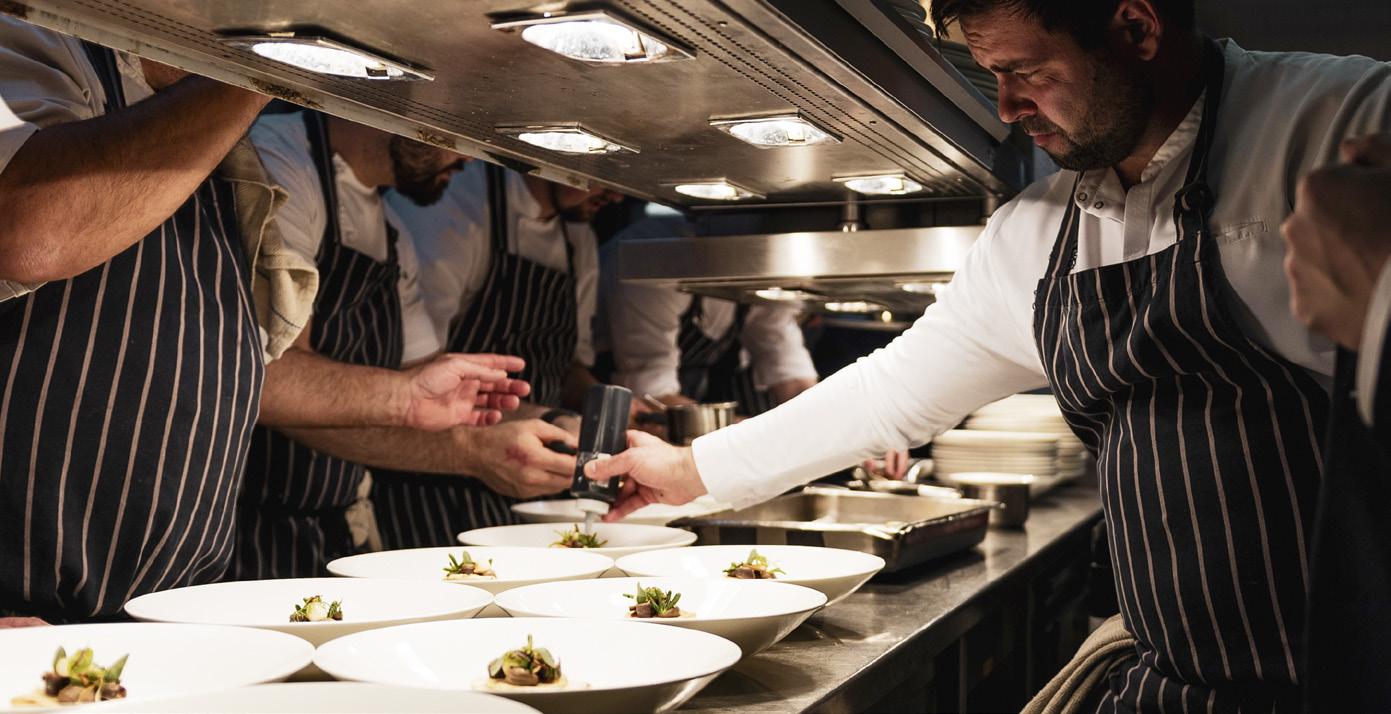
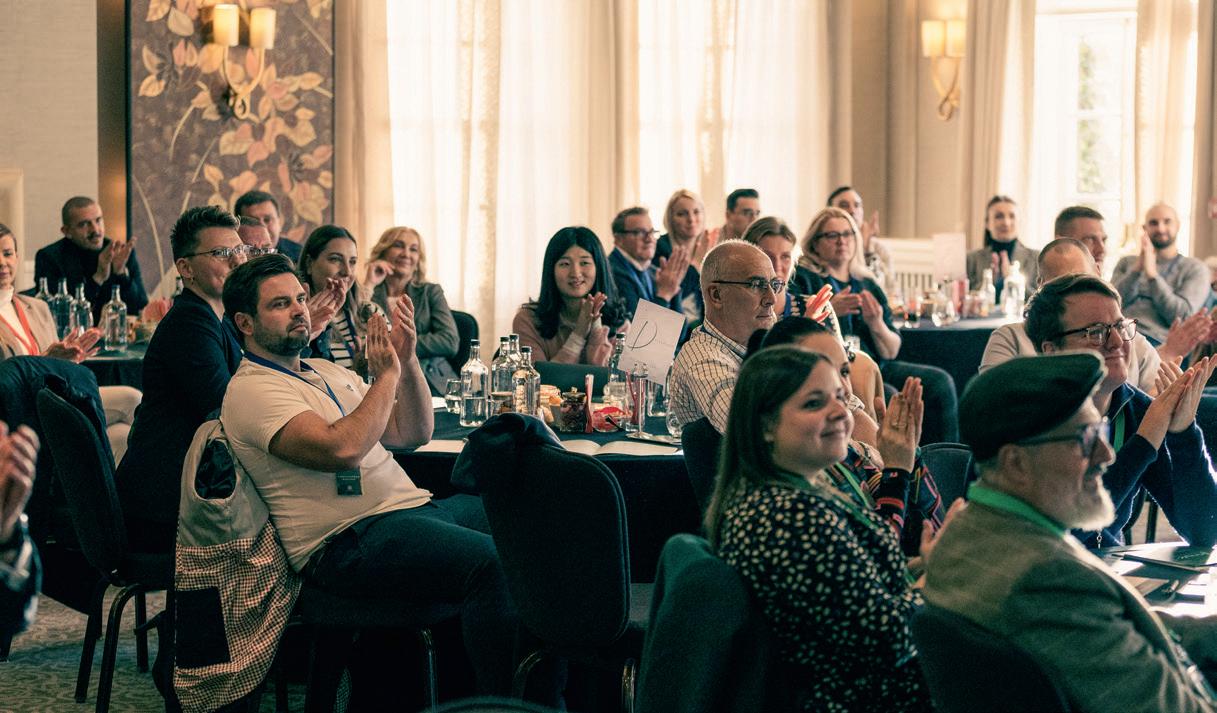
“WE’RE SEEING A SHIFT IN GUEST PREFERENCES. RECENT RESEARCH FROM BOOKING.COM’S 2023 SUSTAINABILITY REPORT INDICATES THAT UP TO 80 PER CENT OF TRAVELLERS SAY SUSTAINABILITY IS IMPORTANT TO THEM”
there are indirect benefits to guests. For example, a hotel with an amazing biodiversity programme can help create vibrant, natural spaces for guests to recharge in; food procured from sustainable farming systems may have lower pesticide usage and higher nutrient levels; and hotel employees who feel well supported and included within the company will offer guests a superior customer service experience.
“We’re also seeing a shift in guest preferences. Recent research from Booking.com’s 2023
Sustainability Report indicates that up to 80 per cent of travellers say sustainability is important to them.”
Areas with measurable targets across the Iconic Luxury Hotels Group include waste management, carbon emissions, plastic use, local sourcing, energy efficiency and recycling, and already there has been clear progress towards achieving the ambition score on the FuturePlus model. More nuanced but equally transformative improvements can be seen in terms of diversity and inclusion, employee wellbeing and responsible governance.
There is still much more to do – the initial phase of the programme is built around a three-year roadmap. “Sustainability is an ongoing journey characterised by continual, incremental improvement over time,” says Alexandra. “We acknowledge that all businesses confront hurdles, and their priorities may occasionally shift, which is a natural occurrence in this process.”
Inspiration and innovation were to the fore at the fifth annual Iconic Leadership Conference
Everywhere you look in life there are lessons to be learnt. We are in hospitality, but when it comes to leadership, innovation and motivation, we can learn from experiences gained in fields as disparate as elite sport, global business, psychology, beating addiction and even counterterrorism. All these were centre stage as Iconic Luxury Hotels’ 60 heads of department gathered at Chewton Glen for the Iconic Leadership Conference.
Under the banner of Cultivating Growth, a stellar line-up of keynote speakers addressed delegates from a series of perspectives, providing an insightful framework on which our team members can build. The greatest benefit is the opportunity for managers, chefs and directors from different hotels to learn from shared problem solving.
“We all need to focus on how we can grow, using the creative minds in our departments to cultivate innovation and optimise our complementary talents,” says executive director Andrew

Stembridge. “Our goal is to inspire and motivate so we are equipped to fulfil our purpose of making every guest want to return and every team member want to stay.”
Among the speakers was Jamil Qureshi, a sports psychologist who has worked with the European Ryder Cup team, Premier League football clubs and England’s 2009 Ashes-winning cricket team, who spoke about the power of ‘act as if…’ and enhancing strengths rather than fixing weaknesses.
Jason Fox, former UK special ops leader and veteran of Channel 4’s SAS: Who Dares Wins, spoke about resilience; former Luxury Family Hotels MD Simon Maguire channelled his fightback from addiction to champion positivity; while inspirational trainer and communications specialist Tim Browne expounded the power of building good relationships.
Michael Penrose and Alexandra Smith, co-founders of The Sustainability Group, also spoke, about how the modern customer embraces a sustainable agenda.
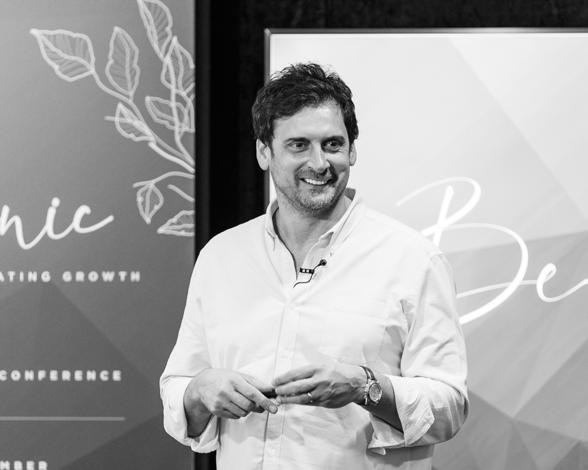

iconicluxuryhotels.com


Our hair is our identity. Yet the dismissive refrain ‘it’s just hair’ trivialises its significance. Multi-awardwinning scalp and hair health brand, Monpure, recently recognised as one of the best emerging British luxury brands within the industry, has revealed through a study of 435 individuals that hair means far more. The results speak volumes: 87 per cent of people see their hair as a reflection of their self-identity, while over two-thirds feel self-conscious and reticent to discuss their hair issues even with loved ones. Monpure seeks to rewrite this narrative with innovative formulas that cultivate hair wellness, empowering people to regain inner confidence.
London-based brand, Monpure, burst into the luxury beauty sector as the world’s first dedicated scalp and hair health brand. Merging science with luxury, Monpure aims to promote optimal hair health and longevity. It stands as a beacon of innovation, understanding the link between hair and self-esteem. Traditionally, the beauty industry has focused on hair styling and aesthetics. Having earned over 50 industry awards, Monpure shifts the paradigm to prioritise hair health and wellness. The brand is the first to utilise active ingredients largely designated to skincare, such as retinol, lactic acid and salicylic acid, to nourish the scalp and hair.

The scalp can age up to six times faster than the skin on our face, especially due to UV radiation, pollution and chemicals, Monpure crafts scientifically proven formulas that maximise the potential, quality and health of the hair follicles we’re born with.
Monpure has already made a significant impact by helping thousands of people maximise their hair and scalp health, providing treatments at a plethora of the most prestigious clinics and spas worldwide, including their own luxury hair clinic in London.
Award-winning formulas, backed by research Monpure has channelled its research into products like the scientist-approved, award-winning Follicle Boost Hair Density Serum. This formula works to prolong productive anagen growth in the hair growth cycle, minimise telogen shedding, accelerate cell turnover, inhibit follicle sensitivity to the hormone DHT, and rebuild hair’s natural structural integrity.
Empowering confidence inside and out
Monpure is not just a luxury hair care brand; it is a revolution in the world of beauty and empowerment, merging science and luxury. It’s not ‘just hair’; it’s protecting identity and self-expression.
Imoved to East Sussex from Brixton in 2002.
My local vineyard is Breaky Bottom, in my view the most picturesque vineyard in the UK. It was the first vineyard I filmed in, and to this day, Peter Hall, the enigmatic marvel behind the label, remains one of my favourite winemakers. These days, Peter is something of a cult figure with the same distributor as Domaine de la Romanée-Conti
(the world’s most prestigious Pinot Noir), but I remember 20 years ago taking his wine to a high street press tasting and the buyer wouldn’t even look at the bottle. I feel thrilled that all these years later, I introduced Peter’s wines to Corney & Barrow, who do such a terrific job of distributing and honouring the hard work he has ploughed into this corner of Sussex since 1974. But what a battle it has

been for all of our dedicated vine growers.
English wine was poorly regarded at the start of my wine career, with one famous critic describing it within earshot as “all battery acid and no revs.” I remember turning up year on year at the press tastings for what was then English Wine Producers as one of a handful of attendees in a grand hall at One Great George Street, just off Parliament Square. Every cork pop was deafening. I was intrigued from the start by English sparkling wine and have been collecting bottles from all over the country since the end of the last century.
Among the older bottles are some 1990s Nyetimber and I have a magnum of Ridgeview Grosvenor Blanc de Blancs 2000 snuggling in my cellar for each of my daughters, ready to be popped on the significant day of their choosing. These days, the room of that same annual press tasting is a scrummage of enthusiasm, with

sommeliers, journalists and the UK wine trade out in force to glimpse the latest releases. While some English sparkling wines are highly drinkable as soon as they are released, one thing I have learnt is that these bright, pinsharp sparklers are crafted with exceptional definition – which is a fancy way of saying they are built to age. In youth, the blanc de blancs wines in particular headlining Chardonnay can be searingly zesty, but wait a few years in bottle and they unfurl into depths of magnificent nuance and magical moreishness. Forget battery acid, these are wines of laserbeam brightness.
These days, there is a sense of regionality beginning to show. But it is not really in broad swathes across counties, but more across climate pockets, such as the rain shadow in Essex, which is producing outstanding fruit. My tasting notes often follow winemakers and their specific style in the most detail. Dermot
Sugrue of Sugrue South Downs, for instance, makes wines of starbright zing; Ulrich Hoffmann of Hoffmann & Rathbone down the road creates wines in richer styles. I buy from both. The Sussex PDO has been widely reported and fans will suggest it gives recognition to this corner of the UK. Naysayers have suggested that it is too early to define a Sussex style and that comparable regions across Europe take decades, even centuries to establish their ways.
In my view, a rising tide floats all boats and the principle concern of English wine growers should be to taste one another’s wines as widely as possible, and enjoy finding genuine moments of pride to recommend each other’s areas, enterprises and ideas. Our success as a home-grown industry will be boosted by understanding the pitfalls as well as the peaks.
When I was appointed the UK’s Drinks Ambassador to China, the government sent me out on a tour with wine growers as well as
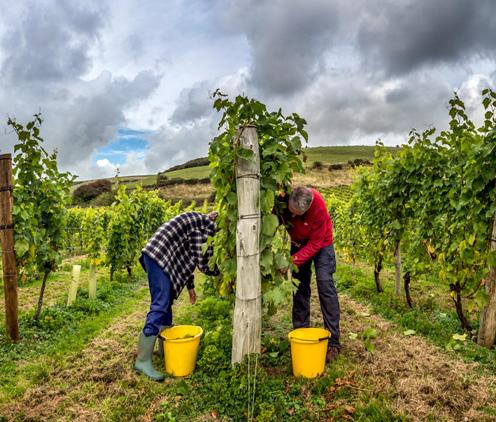
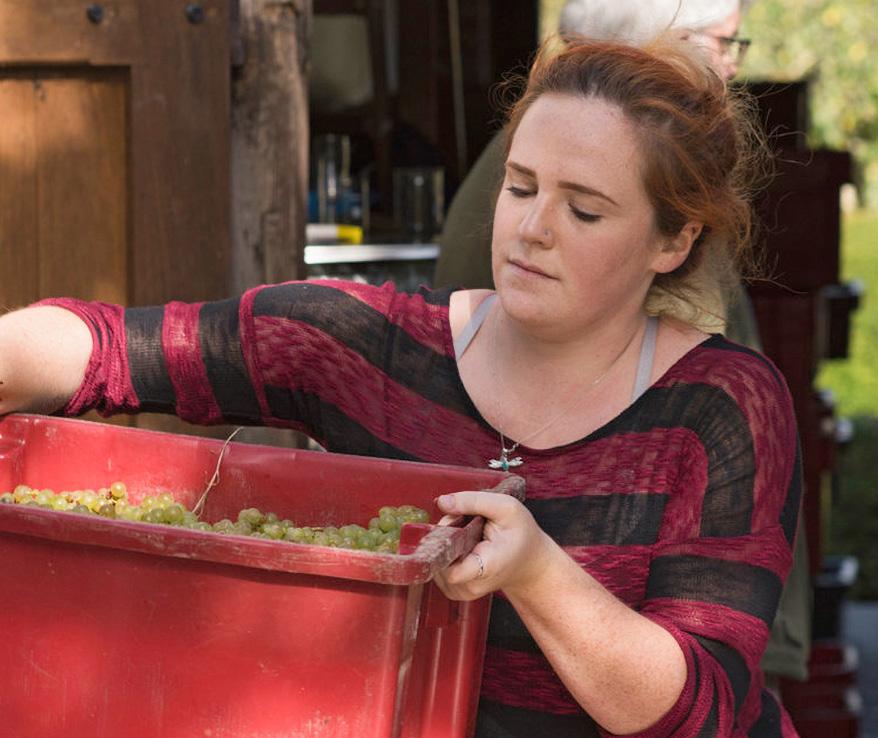

brewers and cidermakers and the interdisciplinary cooperation was fantastic. Today, I am heartened to see numerous techniques bringing out the best of our vineyards. The current fashion for pétillant naturel or pét-nat is a good example. Also known as the ‘ancestral method’, it is claimed to be the oldest method of sparkling wine production and traps carbon dioxide in the bottle while the wine is still fermenting, sealed under a crown cap (like a bottle of beer). Sometimes a bit lower in alcohol and even cloudy with some sediment, the Natural Wine Movement has produced some delightful examples. At 11%-12% and usually with a certain fruitiness and discreetly funky depth, these are great fun thanks to their extraordinary range of colours, intensities and styles, from deep reds to coral pinks, oranges and lemon yellow.
Tillingham makes some seriously vibrant stuff, or try the range from Vagabond next time you are passing one of its wine bars. Vagabond’s ‘Pet Not’ rosé, in particular, is a pink tantaliser that is deliciously vivacious served cold with light bites and always seems to lift the mood. Fitz is another wine you can find on the wine list at Chewton Glen that uses the ‘tank’ or Charmat method (same as prosecco) to keep the fruit fresh and bubbles
bold. Innovation like this and keeping consumers engaged is a brilliant way of evolving English sparkling wine to appeal to new wine fans as well as established connoisseurs.
The prestige of traditionalmethod English sparkling wine is undoubtedly where the most headlines are made. The blanc de blancs style here can be pristine and producers such as Gusbourne and Ridgeview are both bottling leading examples. Ridgeview’s late-disgorged Oak Reserve is effervescent excellence that roars up the glass with a spume of meringue-white foam, delivering richness, intensity and an almost saline-lemon twist to the long finish. Non-vintage blends are moving up the ranks and being taken more seriously. Woven from reserve wines from different years to get the best out of the vineyard, Hambledon’s terrific, gold medalwinning Première Cuvée Brut NV is, in my view, one of the great sparkling wines from our shores.
With the quality of English sparkling wine soaring and a bumper harvest in 2023, the future of homegrown bubbly is delivering something more than just brilliance: pride. I believe in these bottles as ambassadors of excellence and I would love you to seek out a local vineyard and raise a glass to the realisation of some deliciously English ambition.
2012 (12%)
From a vintage abandoned by other growers comes a gold-medal-winning, stellar bubbly that I’ve bought myself. Outrageously complex with thrilling zestiness and deep richness.
BRUT NV (12%)
Blend based on the 2014 vintage, more than two thirds Chardonnay. After a period of extended ageing, the richness, nuance and moreish splendour simply have to be tasted. World class.
2010 (12%)
Beyond the traditional grapes behind fizz, this brilliant English bubbly is made entirely from Seyval Blanc. Expect aromas of cow parsley and a pristine palate of mineral-pure definition where lemon meets almond.
FITZ PINK (12%)
This modern English sparkler is a fruity Charmat-method bubbly that’s fantastic for an impromptu or informal celebration. Sourcing from a range of growers, this innovative approach to bubbly is dynamic and delicious.


The Chelsea Townhouse, Iconic Luxury Hotels’ newest property, is more home than hotel – an elegant pied-à-terre in the heart of London
Gazing from the window of an exquisitely furnished room on to quiet, leafy streets or the secluded tranquillity of Cadogan Gardens, guests of The Chelsea Townhouse will find it hard to believe how perfectly they are located in the midst of elegant London. Just a stone’s throw from the artisan foodies of Pavilion Road, a two-minute walk from the King’s Road and fabulously redeveloped Sloane Street, a short stroll from the V&A, Natural History Museum and Harrods, our newly opened property is a boutique hotel like no other.
On opening its doors for the first time in September 2023, this incredible refurbished
Victorian oasis joins our existing neighbouring luxury properties, the Relais & Châteaux-accredited 11 Cadogan Gardens and The Apartments by 11 Cadogan Gardens to complete Iconic’s ‘Cadogan Gardens Collection’. Also, along with The Mayfair Townhouse, it grows our London hotel portfolio to four properties.
“All Iconic Luxury Hotels embody the spirit of the iconic address and neighbourhood they are located in,” says Andrew Stembridge, executive director of Iconic Luxury Hotels. “The Chelsea Townhouse is no different – it is the spirit of residential Chelsea, tucked behind one of the most exclusive shopping districts, Sloane Street.
Guests will feel as if they are in the private townhouse of a very elegant friend, nestled away from the bustle of the city among lush gardens and towering treetops. At a time when larger, internationally owned hotels are sweeping the city, we’re excited to bring to life a truly independent property with an authentic story to tell.”
The hotel’s 36 uniquely designed bedrooms are set across three Queen Anne-style Victorian red-brick townhouses, each connected by staircases and hidden corridors. Guests can choose from four accommodation options: single occupancy Chelsea Cosy, Chelsea Double, Chelsea King or Chelsea Garden Suite.
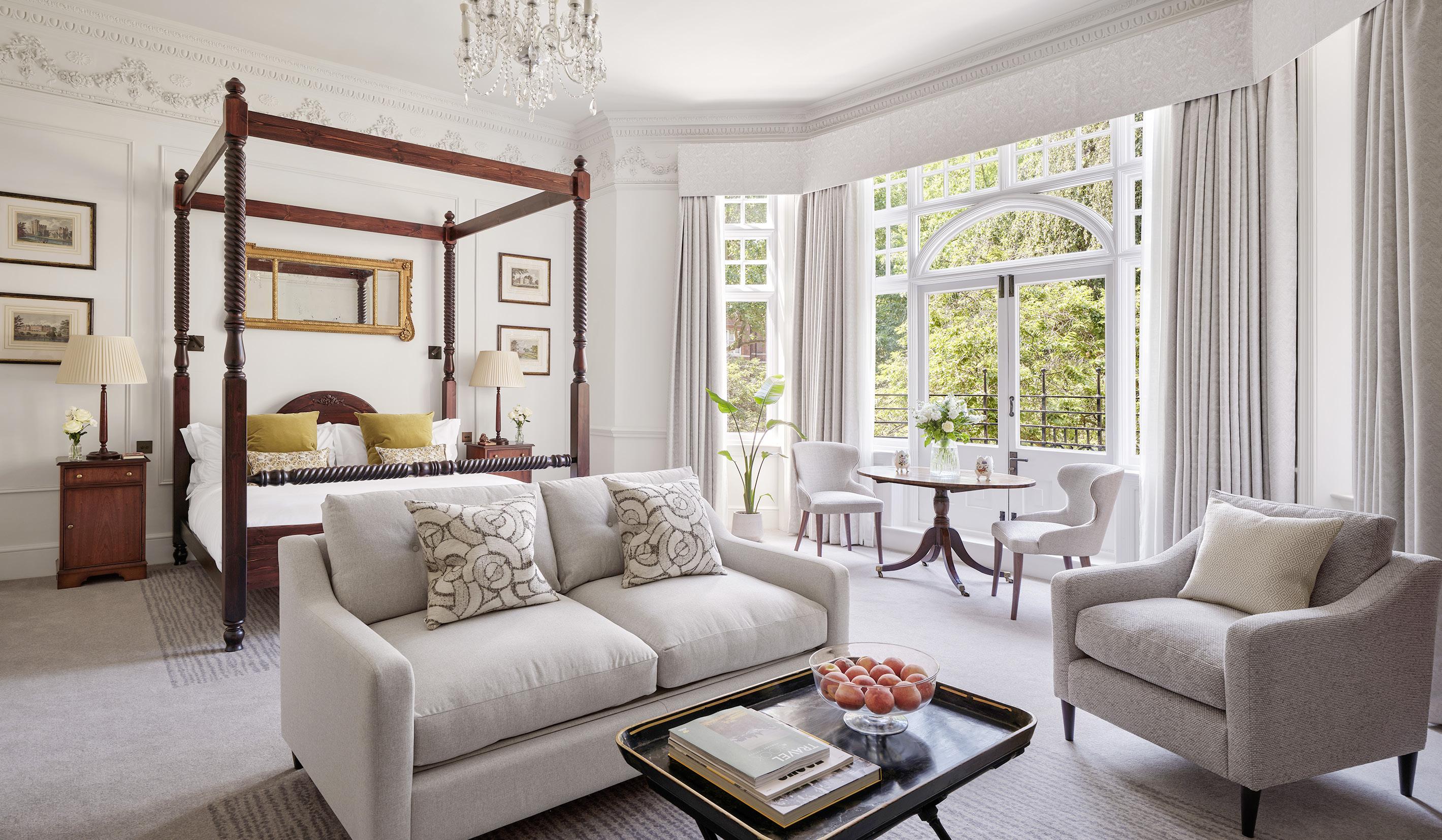
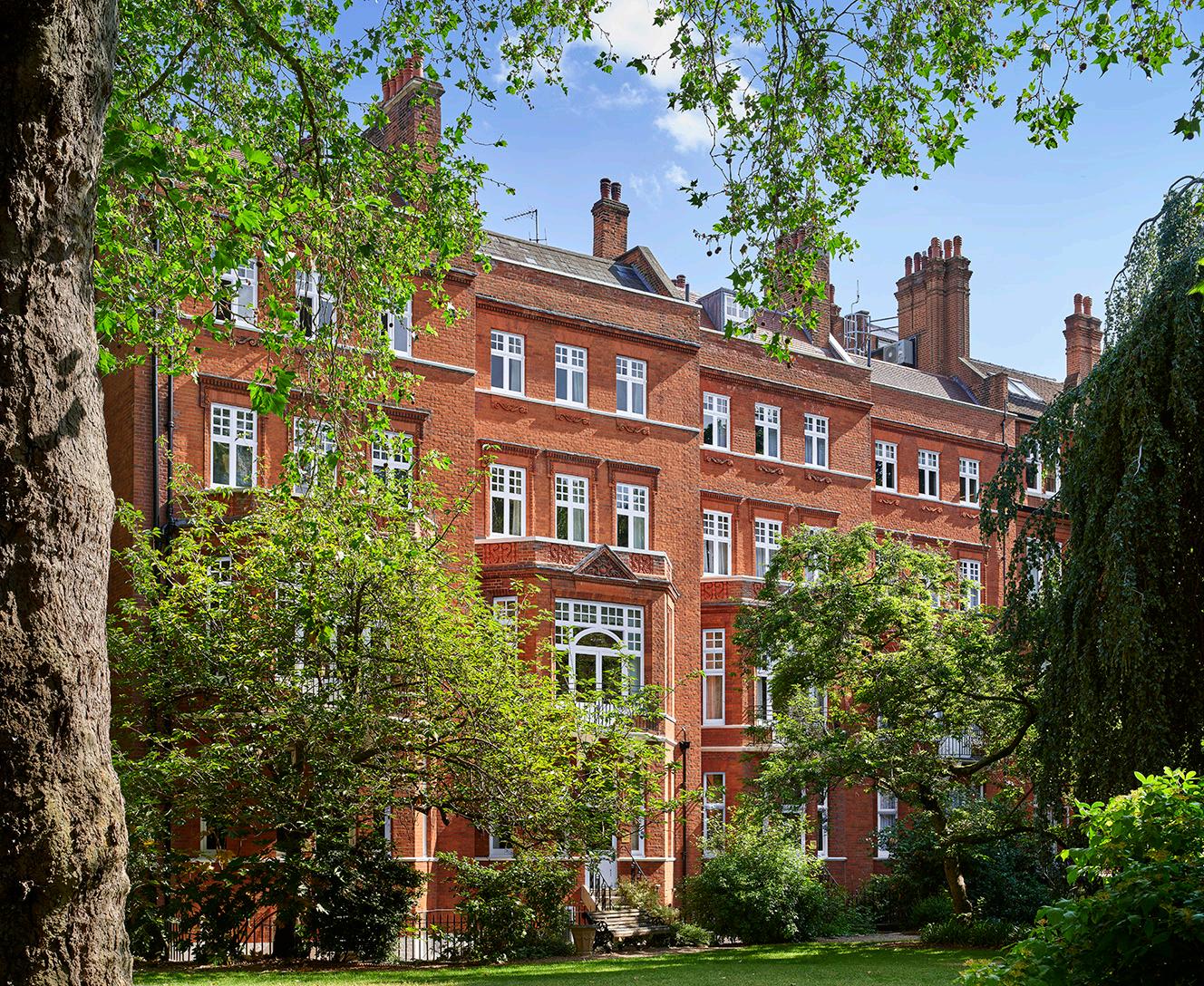
All are exquisitely appointed, with the garden suites offering direct access to the oasis-like charm of Cadogan Gardens. For those in search of a more residential experience, there are also four sumptuous apartmentstyle suites, equipped with a kitchenette, pre-stocked with artisanal ingredients sourced from Pavilion Road.
The Chelsea Townhouse is a heartfelt and loving reinvention of the former Draycott Hotel, undertaken by Gary Kellett Architects. The work has paid full respect to the eclectic heritage of the original, achieving a balance of grandeur and timeless charm with antique-style artworks, ‘trinkets and treasures’ from around the world, marble fireplaces and cushioned bays.
Staying at The Chelsea Townhouse is a chic yet relaxing experience, a quintessential example of the intuitive and effortless approach to hospitality for which Iconic Luxury Hotels has become renowned. The charm and uniqueness is accentuated
by our dedicated Townhouse hosts, who blend impeccable service with unrivalled knowledge to fulfil every guest need. Singling out the service they provide, The Daily Telegraph said: “This is the kind of place where they remember whether you like your sourdough sliced in the morning and actually ask whether you are comfortable with the French windows open on a breezy autumn day. And of course, they remember your name.”
Further delightful touches, such as the all-day, eat-anywhere menu, the welcome ‘Chelsea bun’ in every room, complimentary items in the minibars and the fact that guests let themselves in and out of any of the three front doors using their own key, help curate a truly exceptional hospitality experience.
It is an environment that makes you want to stay awhile. According to Relais & Châteaux, “London isn’t simply meant to be visited – it must be lived” – and The Chelsea Townhouse is the perfect base from which to do that.
The Chelsea Townhouse launched with a takeover by the team behind London’s most glamorous event
In autumn 2023, London Fashion Week was launched by a UK version of New York’s legendary Met Gala, a star-studded fashion extravaganza hosted by Vogue magazine at the Theatre Royal, Drury Lane. Stars of the big screen and the catwalk mingled with royalty and cultural icons on the red carpet at Vogue World.
Vogue’s creative team chose The Chelsea Townhouse for their base, taking over the entire hotel. Among our guests were 13 top Vogue editors, including executive editor Jessie Heyman, executive fashion director Lisa Aiken and global talent casting director Iggy Murillo.
The team had never experienced anything quite like what the magazine called ‘the buzziest hotel in town.’ Hayley Maitland in US Vogue magazine wrote, “The Chelsea Townhouse is the type of place that could only exist in the British capital; staying here feels less like checking into a hotel, more like visiting a well-heeled friend with a green thumb, a collector’s eye and a top-notch wine cellar.”
Like the Met Gala, Vogue World is a benefit event, with proceeds going to Londonbased performing arts organisations. The 1,500 guests were treated to an eclectic live show launched by Kate Moss, featuring everything from Chinese opera to ballet, a Shakespeare-inspired duet between rapper Stormzy and actress Sophie Okonedo, and a live performance of Sweet Dreams by Annie Lennox.
The audience included the late Queen’s granddaughters, Princesses Beatrice and Eugenie, actors Damien Lewis, Sienna Miller, Kate Winslet and Jared Leto, and fashion designers including Stella McCartney, Christopher Kane and Victoria Beckham.

thechelseatownhouse.com
iconicluxuryhotels.com

Cadogan’s Kira Charatan brings history to life in today’s modern Chelsea
Chelsea is one of London’s ‘villages’, a distinct and distinguished neighbourhood. Home to world-class cultural venues, fabulous shopping and exquisite hotels, yet with a character, an essence that is unique, it could be nowhere else –very much part of London, yet resplendent with its own identity.
Today, from the internationally renowned brands of Sloane Street, once home to court dressmakers, hosiers and milliners in the 19th century, to the iconic King’s Road, birthplace of many of the 20th century’s cultural movements and once the private road of King Charles II, there is much to explore that hints of Chelsea’s characterful past. Around every corner there is some new delight to discover, from the artisan boutiques of picturesque, pedestrianised Pavilion Road, which at 1km stakes
claim to being London’s longest mews, to buzzing Sloane Square, with its theatre, eateries and one of London’s hidden rivers that is carried over the underground station platforms in a big pipe.
One secret history of Chelsea is hiding in plain sight, unlocked by the elegant, towering, red-brick townhouses that line its streets and surround its richly planted, mature garden squares (there is a lot of greenery in Chelsea, which has a strong horticultural heritage and today hosts the world-famous Chelsea Flower Show). Much of the neighbourhood, including Cadogan Gardens and Cadogan Square (named after the Cadogan family, who have owned, developed and managed the area for 300 years), is built in this very ‘Chelsea’ style.
Established in the 1880s, the New Queen Anne or ‘Pont Street Dutch’
architecture (the latter namesake coined by historian Osbert Lancaster) is Chelsea’s famed vernacular. It is characterised by tall, red-brick buildings with intricate carvings (of flowers, fruits, cherubs and swags of exotic foliage), large, mullioned windows, and pitched and gabled roofs, sometimes topped with dragons and gargoyles. But above all, each house revels in its individuality.
Through the 19th century, Chelsea became the artistic quarter of London, home to JMW Turner in his later years, who settled here to paint the light on the River Thames. Dante Gabriel Rossetti took a house on Cheyne Walk, where he apparently kept a menagerie of animals and frequently entertained members of the Pre-Raphaelite Brotherhood. James McNeil Whistler settled nearby, along with many other
artists, artisans and influential creatives who flocked to Chelsea for its beauty and bohemianism.
The New Queen Anne movement can be traced back to Rossetti, William Morris, Edward BurneJones and architect Philip Webb. The style was born out of a belief in ‘sweetness and light’, a hatred of narrow mindedness, commercial vulgarity, mid-Victorian heaviness and mass production. It was against convention, exciting and risqué. It resonated with Algernon Swinburne, who said art should be undertaken for art’s sake.
Chelsea was the first neighbourhood to undertake widespread development in this style under the patronage and stewardship of the 5th Earl Cadogan. Cadogan Square hosts some of the finest examples of houses by leading New Queen Anne architects Richard Norman Shaw and John James Stevenson.
Holy Trinity Church on Sloane Street, designed by John Dando Sedding, also speaks to this style, as well as being a ‘Cathedral of Arts and Crafts’, according to poet laurate Sir John Betjeman. At the time, it was the widest church in London (beating St Paul’s by 9in).
Congregants included William Gladstone and Oscar Wilde. The enormous stained-glass window by Burne-Jones and William Morris casts colourful light across an interior that runs like a who’s who of notable Victorian artists.
The 19th century saw Charles Dickens married on Sydney Street and Oscar Wilde strolling along Sloane Street, while towards the end of the century and into the 20th, Chelsea was home to AA Milne, PL Travers and Bram Stoker, creators of Winnie-the-Pooh, Mary Poppins and Dracula, respectively. Carlyle Mansions, inhabited by the likes of Henry James, T.S. Eliot and Somerset Maugham, was known as ‘the Writers’ Block’.
In the early part of the 20th century, Chelsea was fashionable, respectable but always with undercurrents of bohemianism. It was the place where aristocrats mingled with artists, writers and creatives, who flirted with non-conformity and new ideas. Sylvia Pankhurst, leader of the Suffragette movement, was a Chelsea local. Likewise, Syrie Maugham, the interior designer who shocked polite society with her ‘white room’. Unveiled on
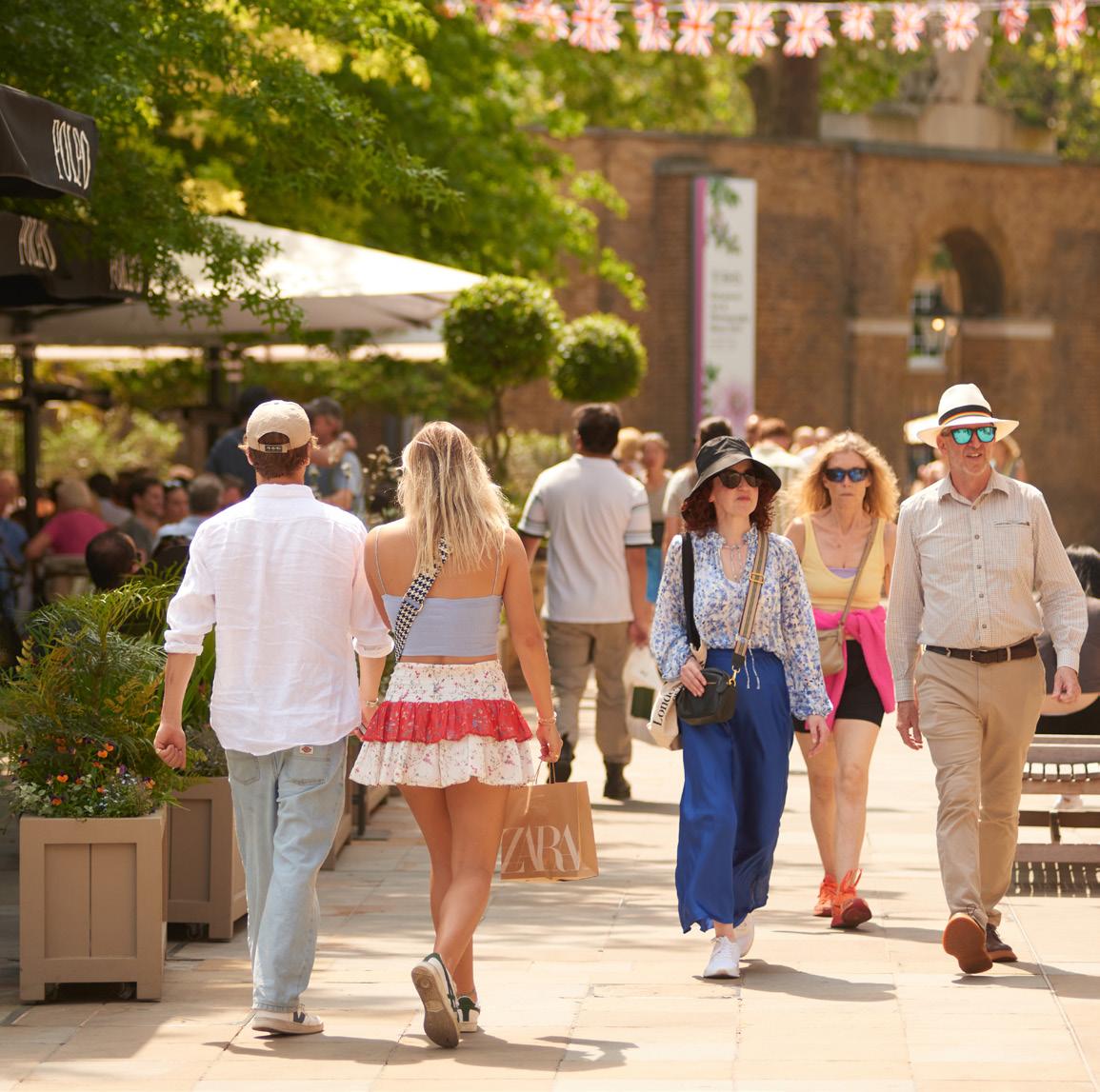
the King’s Road in 1927, it set the fashion for interiors for the next 30 years. In 1953, local resident Ian Fleming created James Bond, who ‘lived’ in an elegant square off the King’s Road.
Designers came to the fore in the 1960s with the explosion of colour, fashion and music. The joyous ‘youthquake’, as coined by Chelsea local Mary Quant, exploded on to Chelsea’s King’s Road in a big way, flooded by artists, musicians and creatives. From the Swinging 60s, punk in the 1970s and the Sloane Rangers of the 1980s, Chelsea has always loomed large in cultural history and always will. Chelsea today is a hive of world-class artistic endeavour. It is home to major institutions of theatre, art and music: The Royal Court Theatre, the Saatchi Gallery and Cadogan Hall. Literary heroes, artists, designers and rock stars have lived and loved here, writing Chelsea’s story as a bohemian hotspot. A guiding hand over the past three centuries, Cadogan has nurtured the long history of artistic development in this cultural enclave of London, one that is local in feel and international in reputation.





































FANCY











